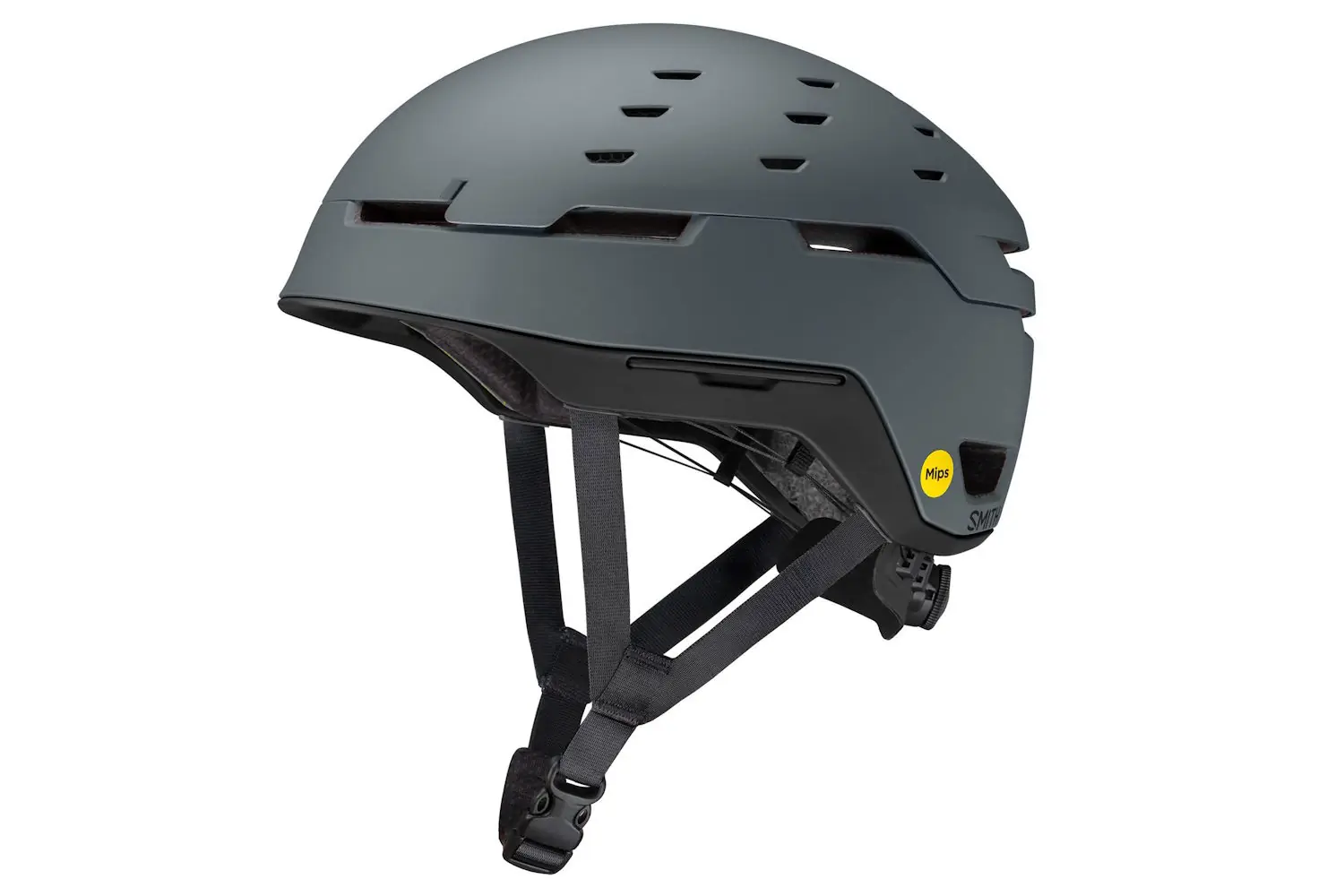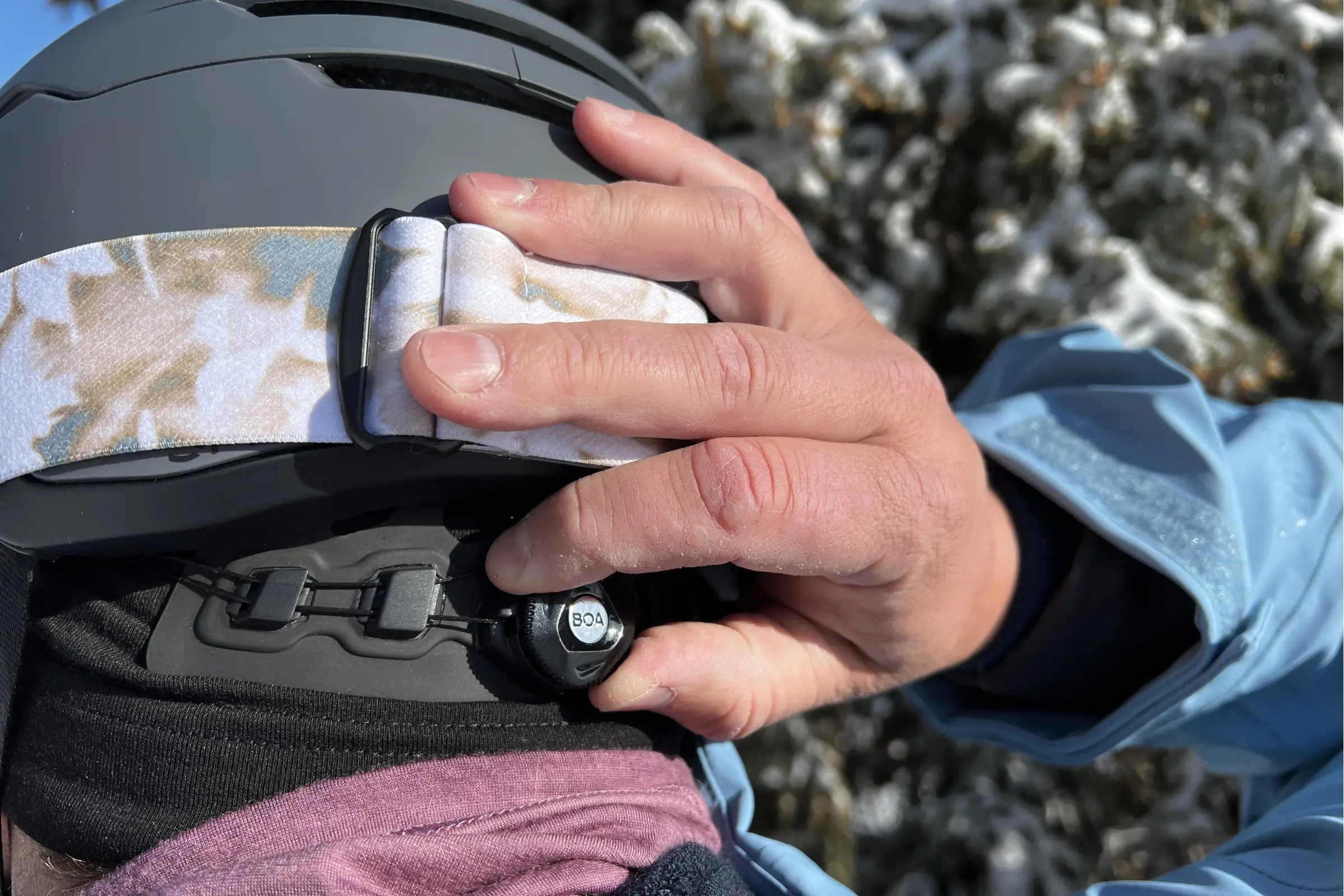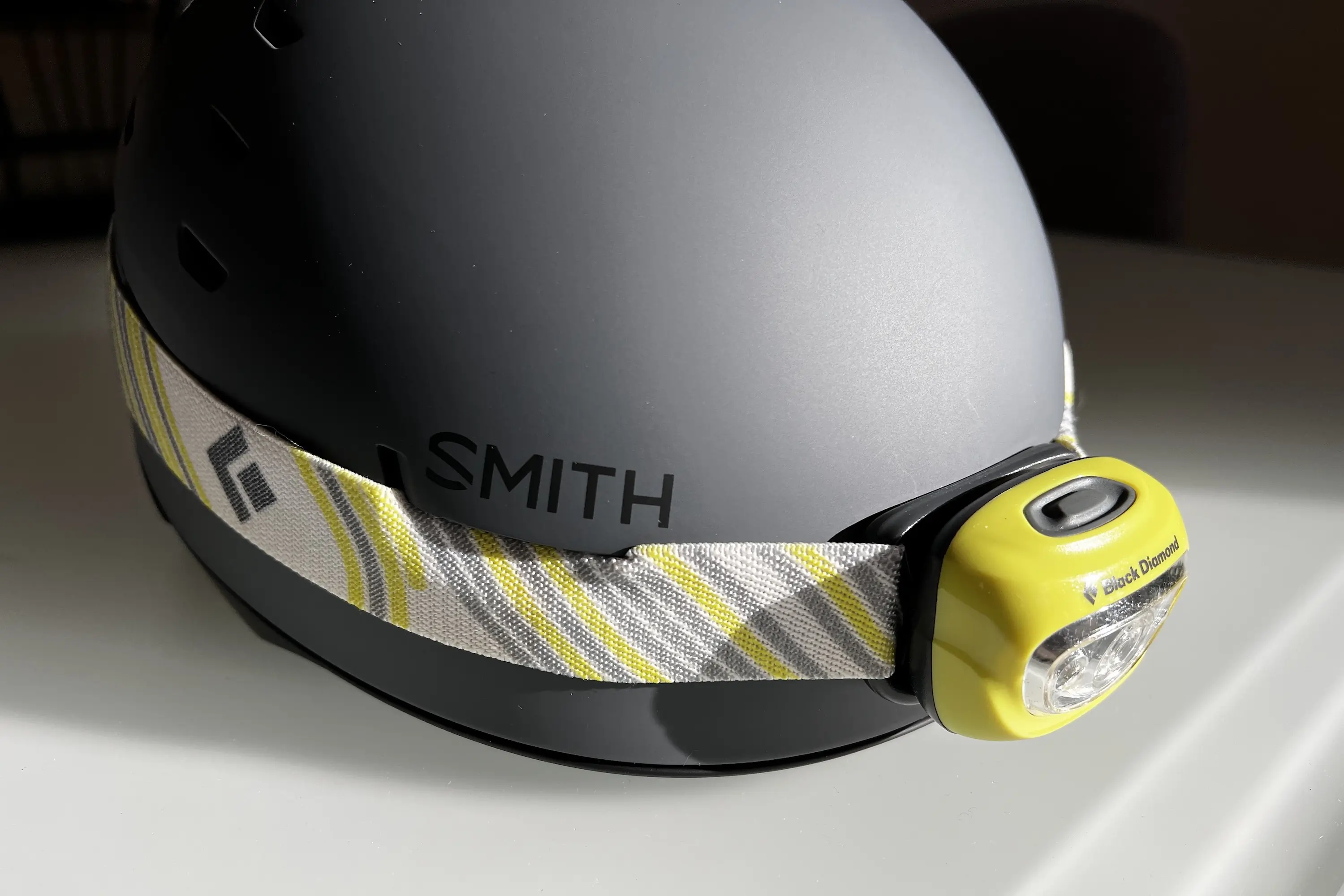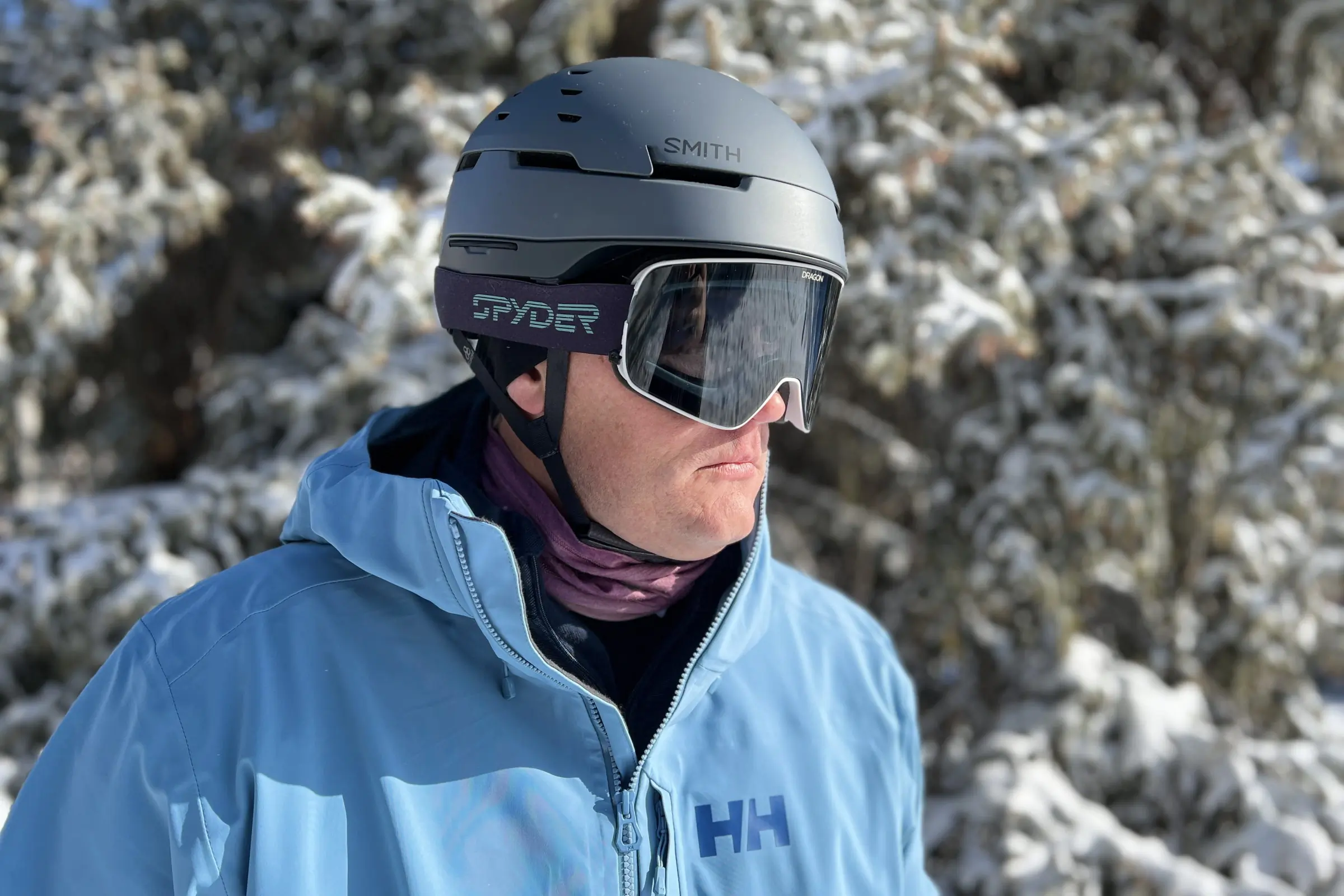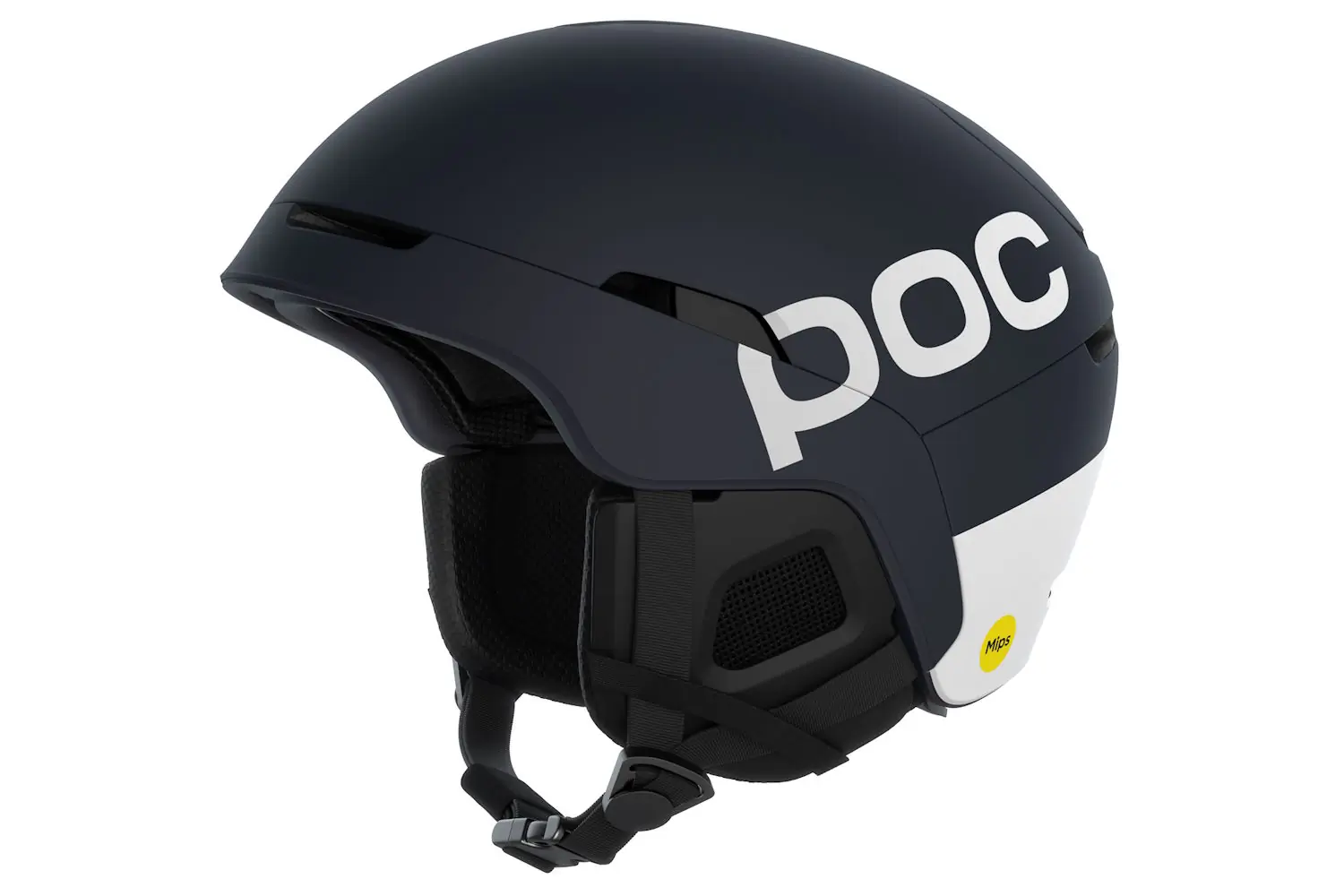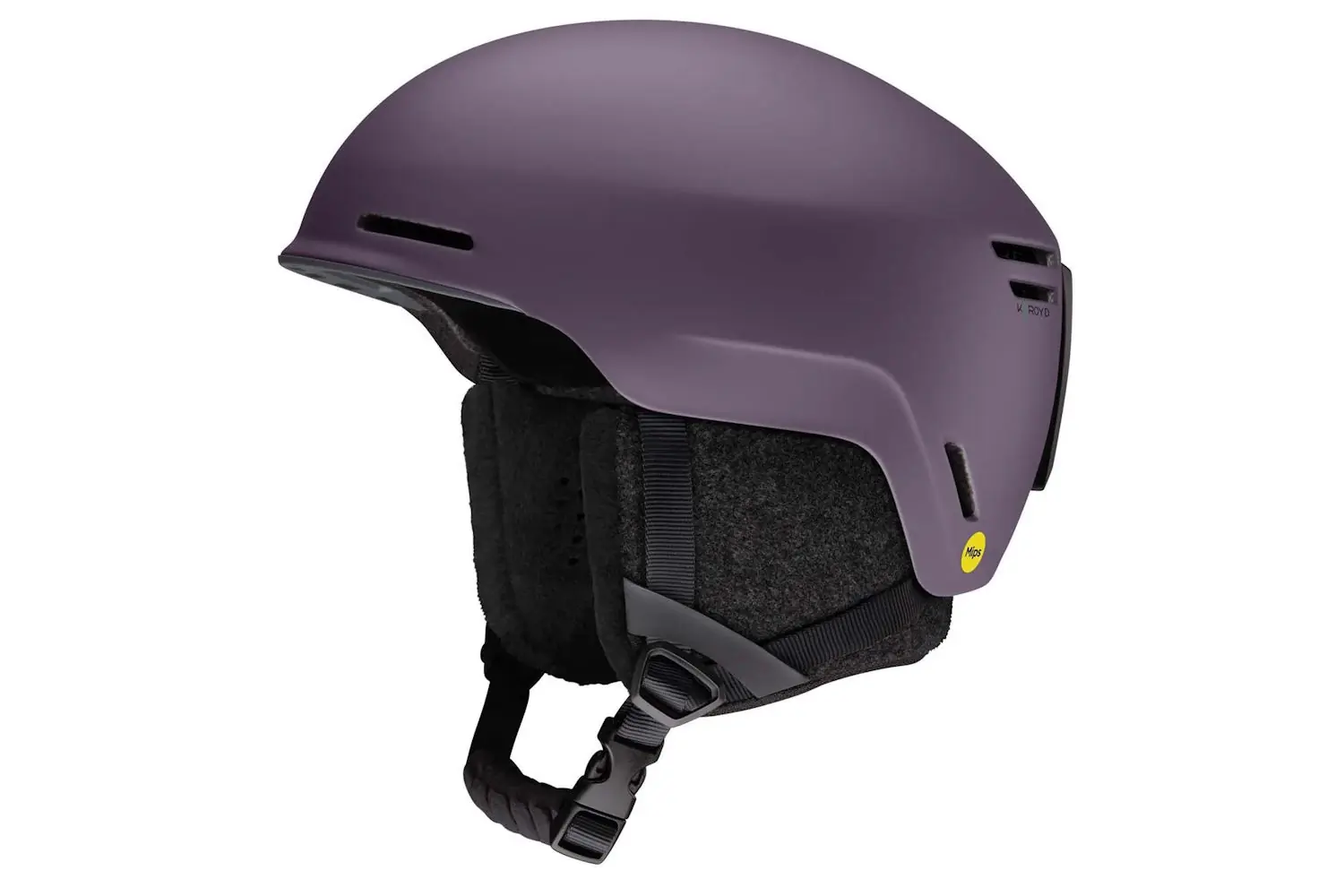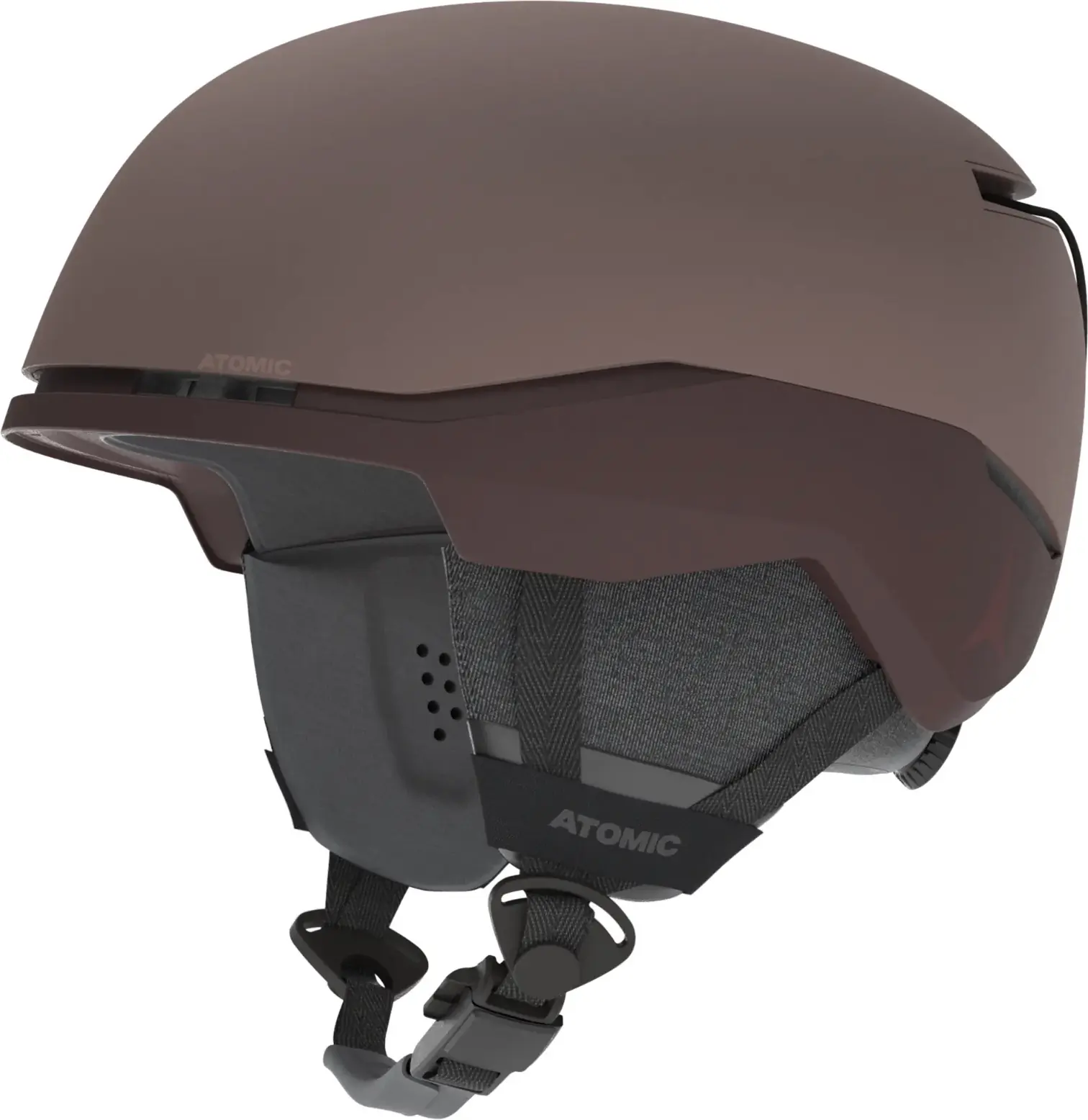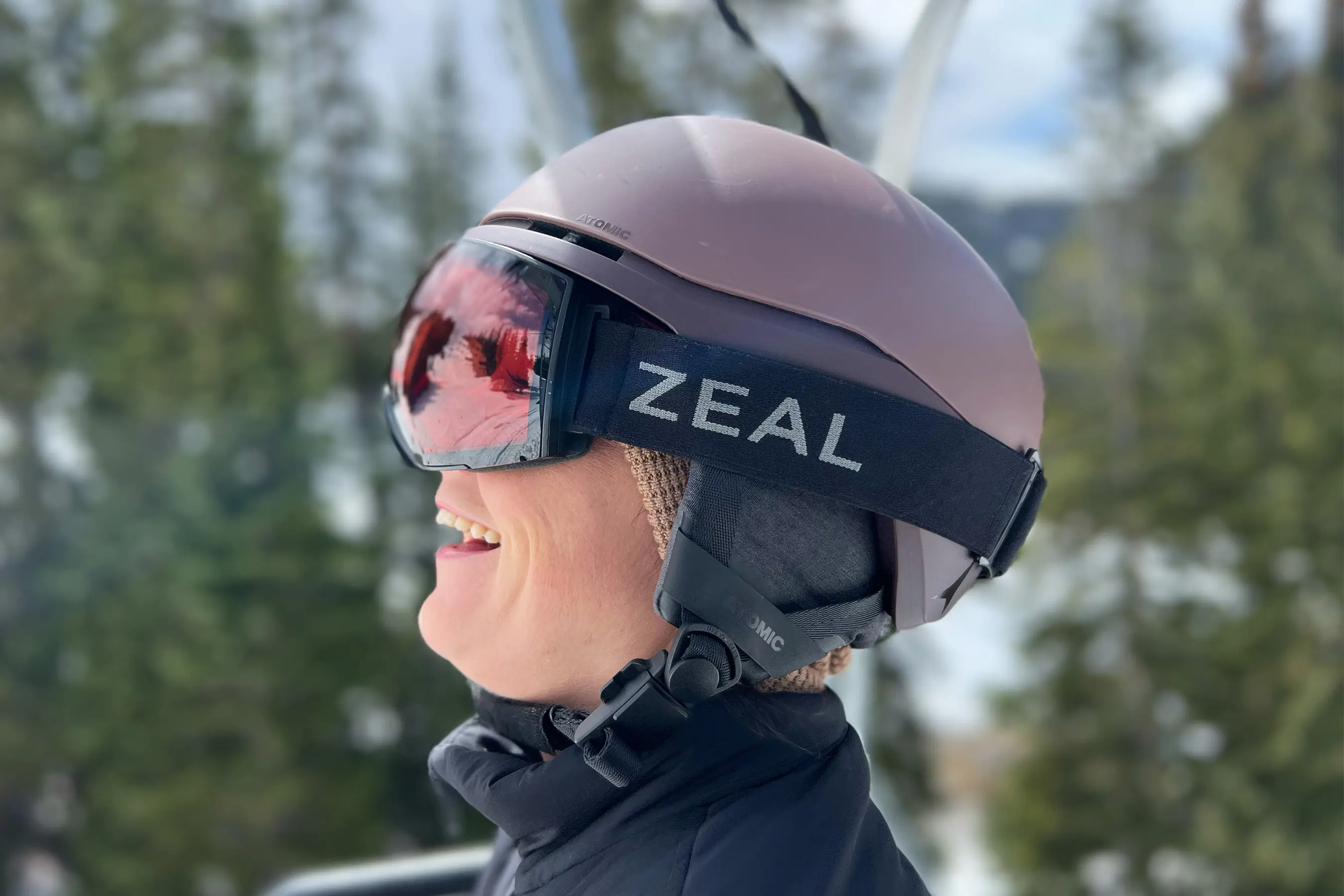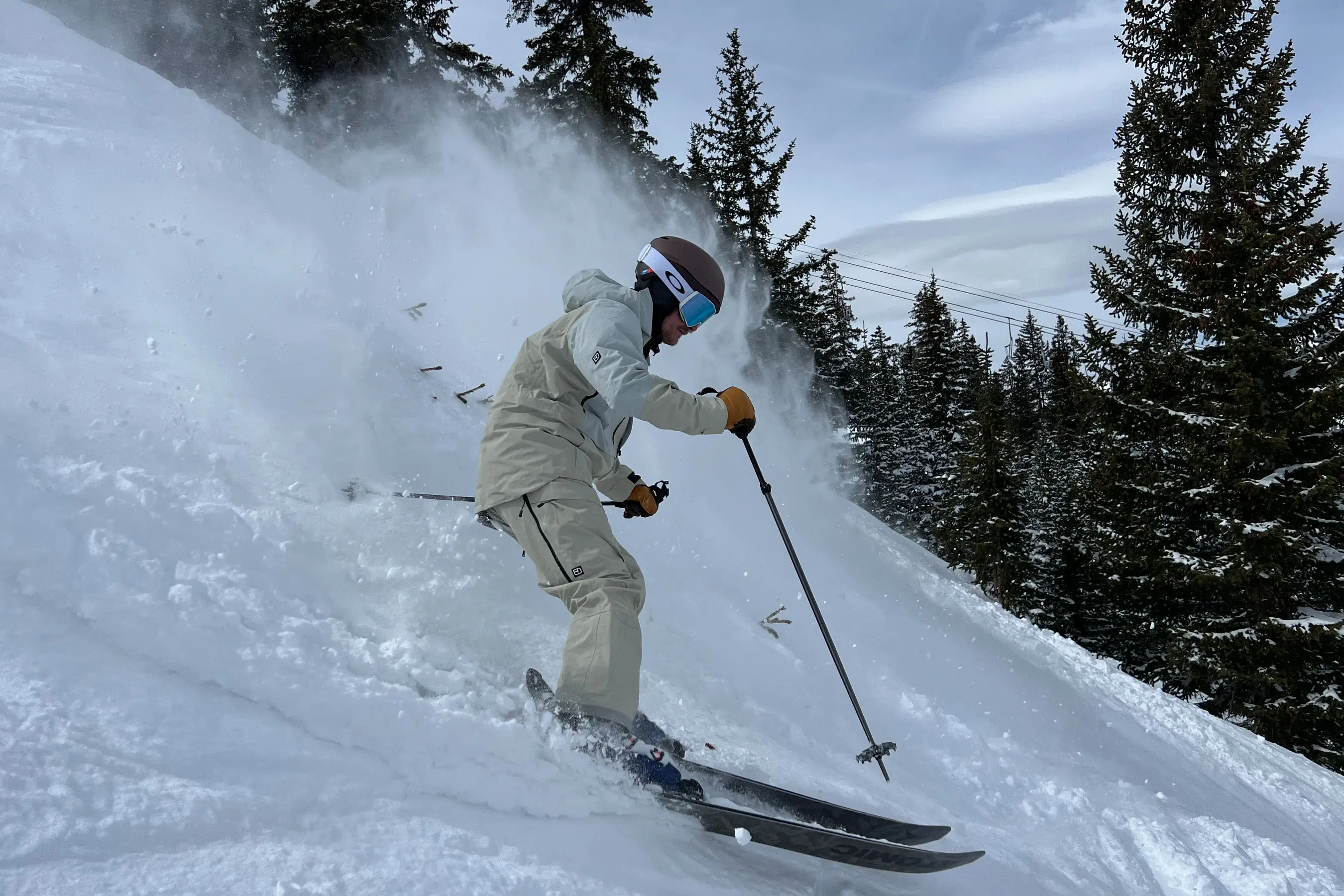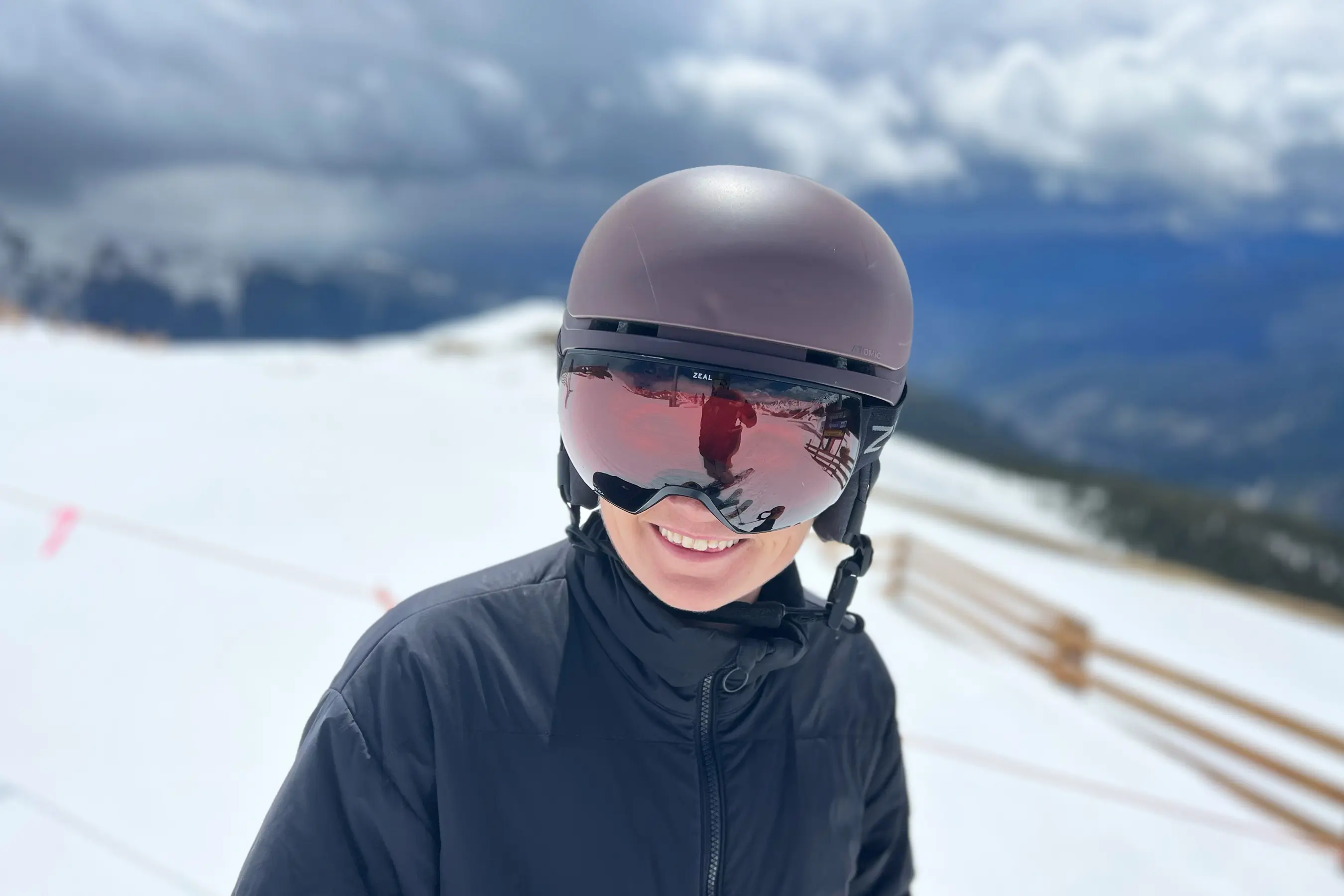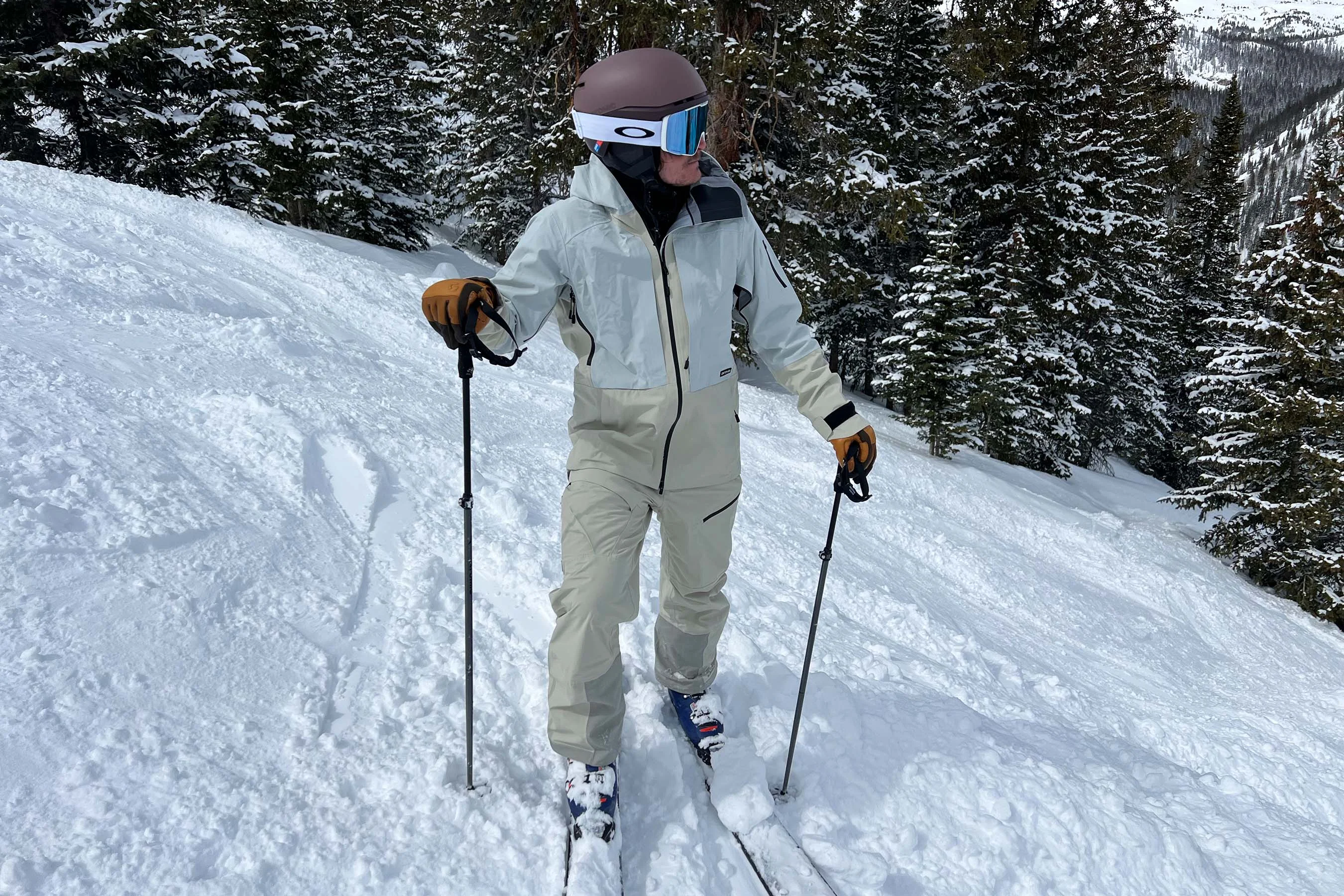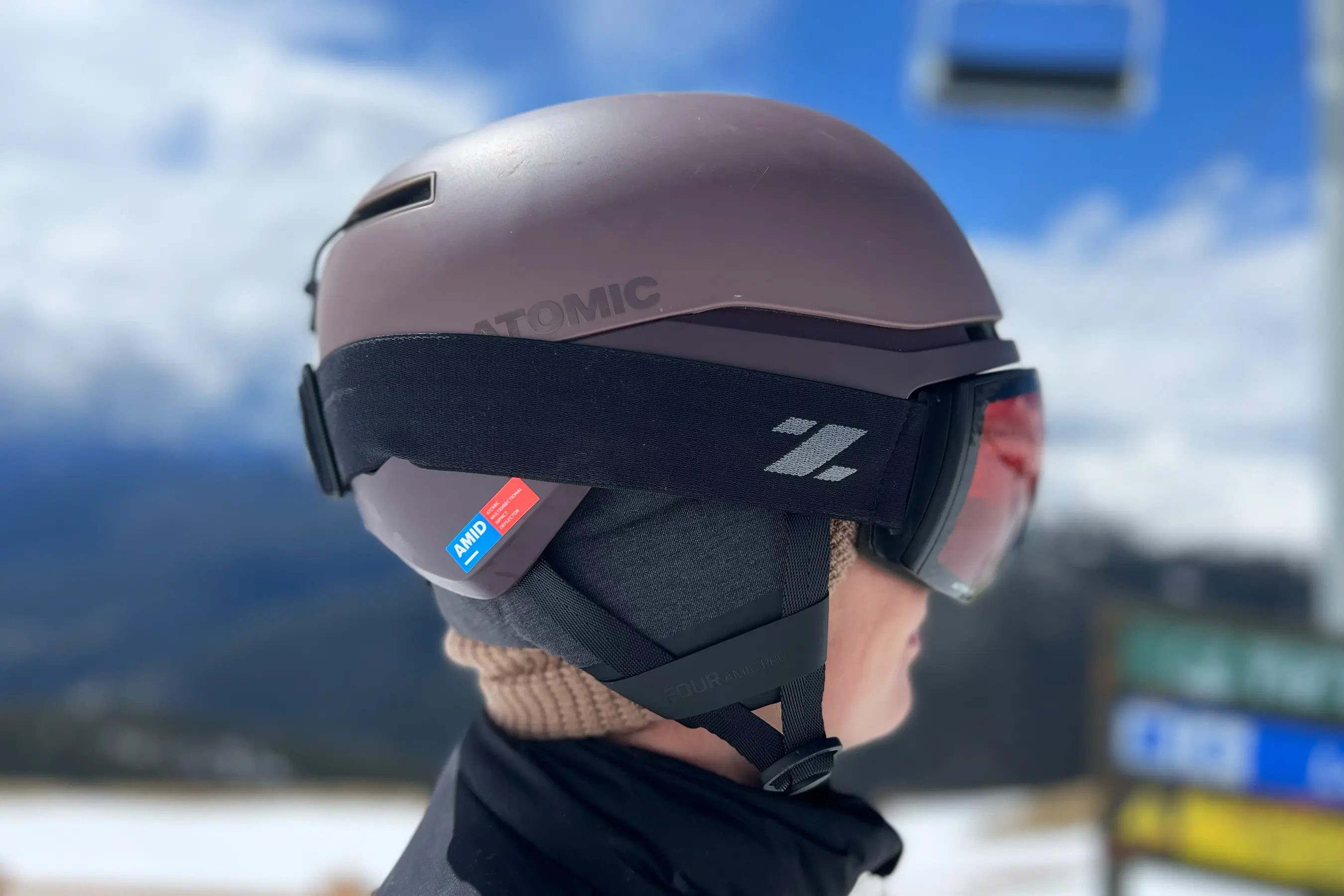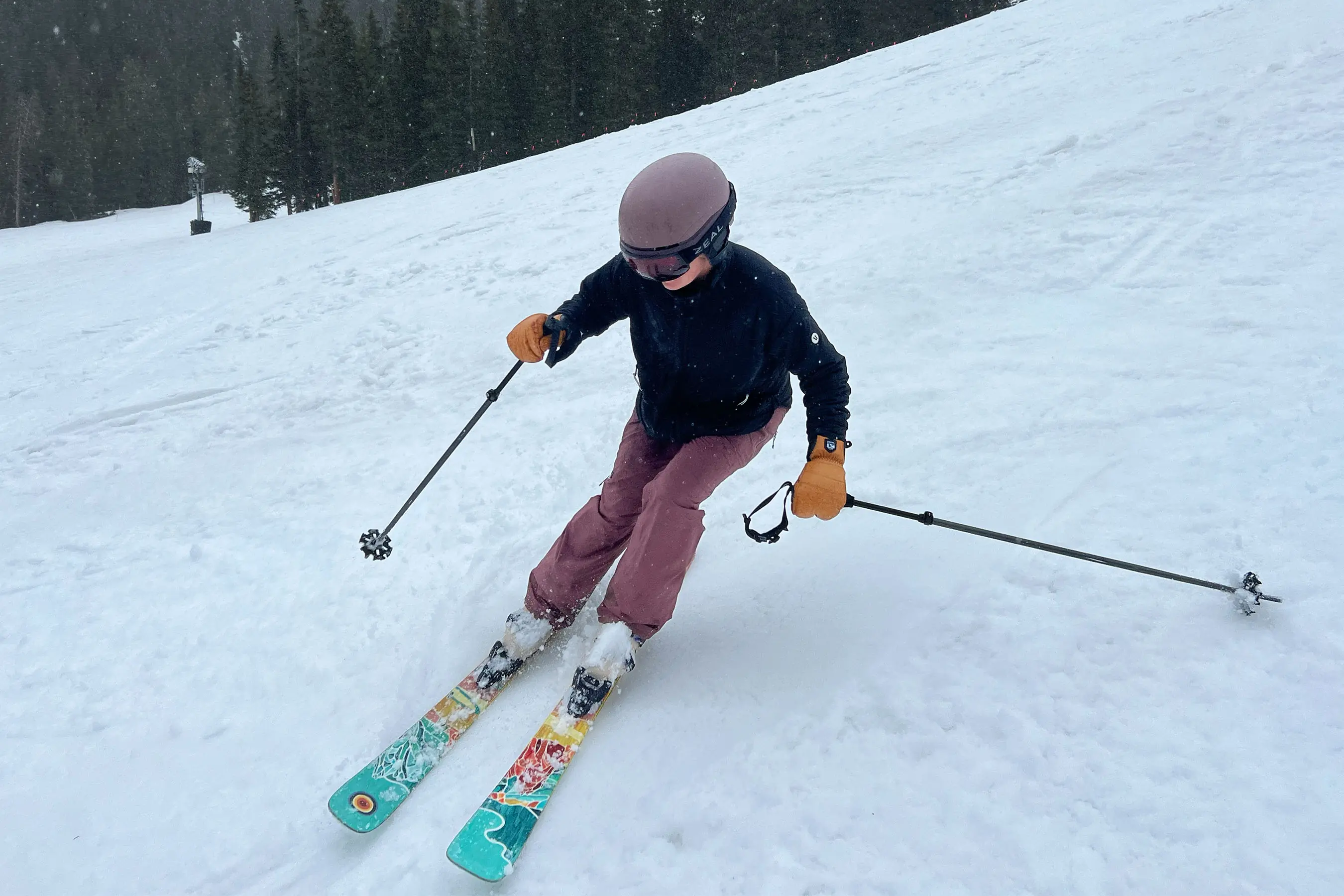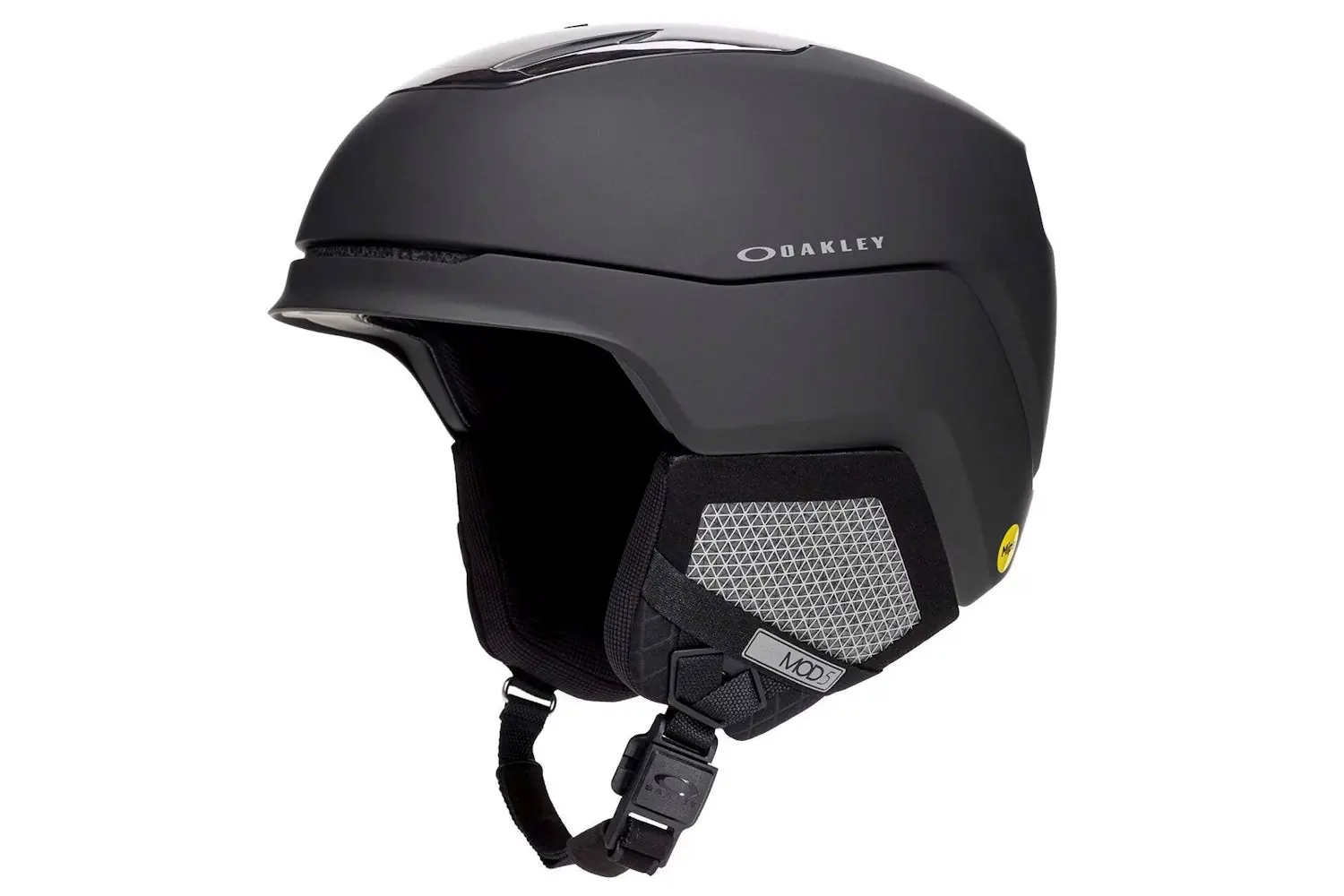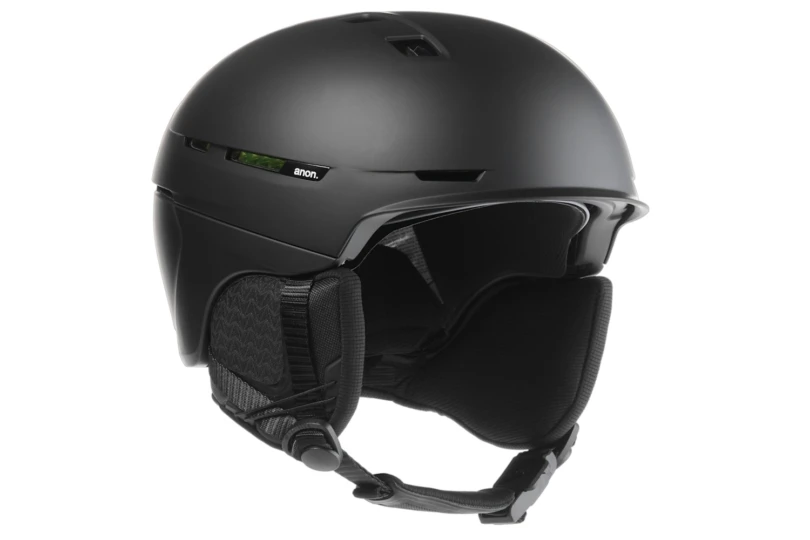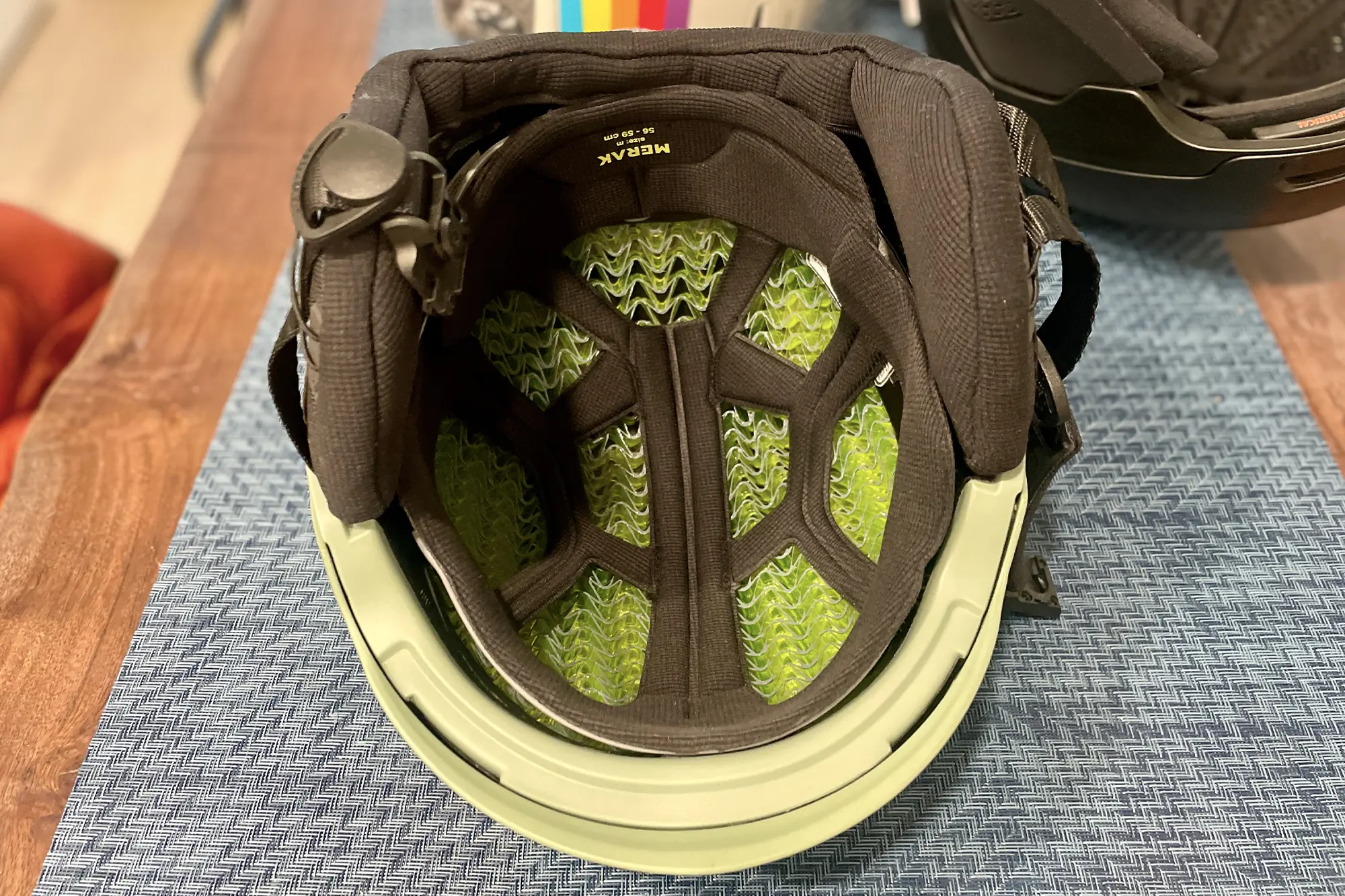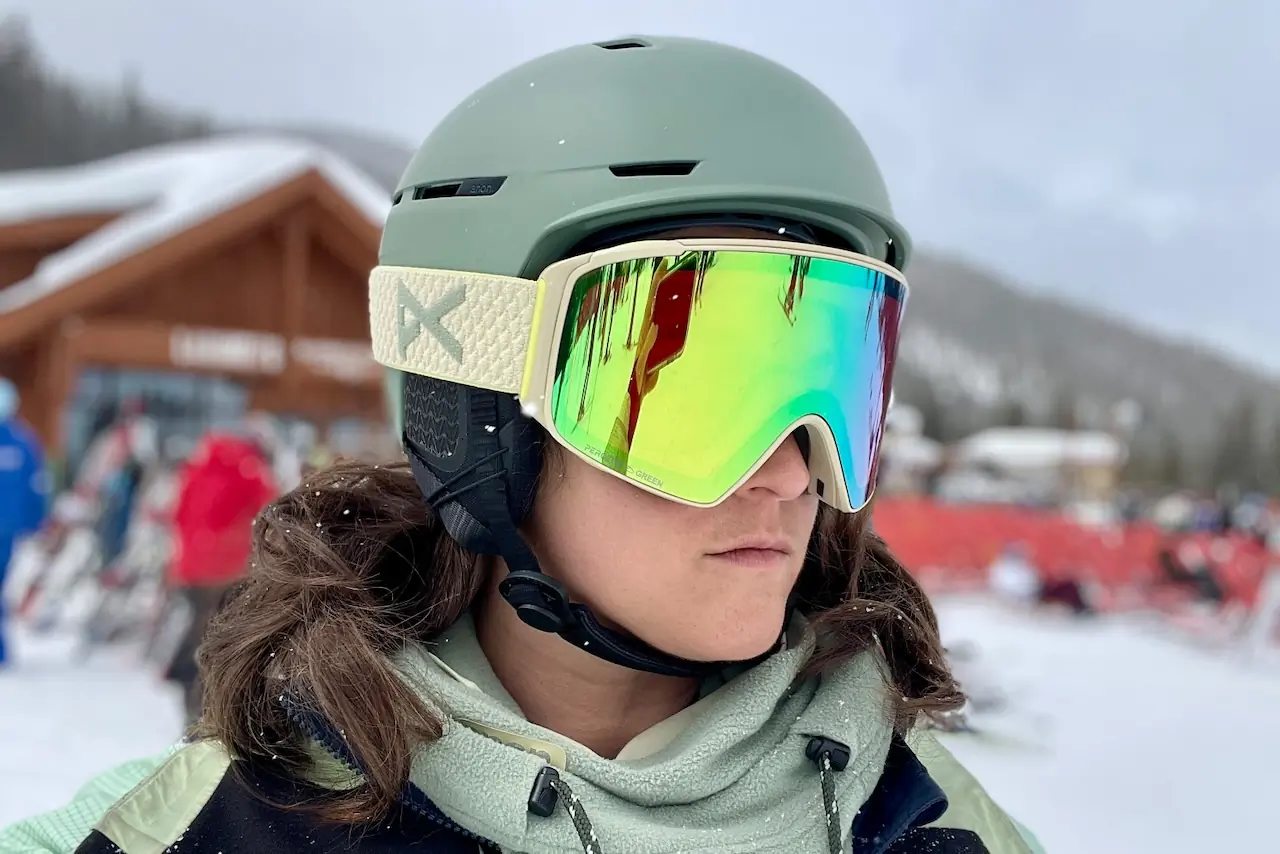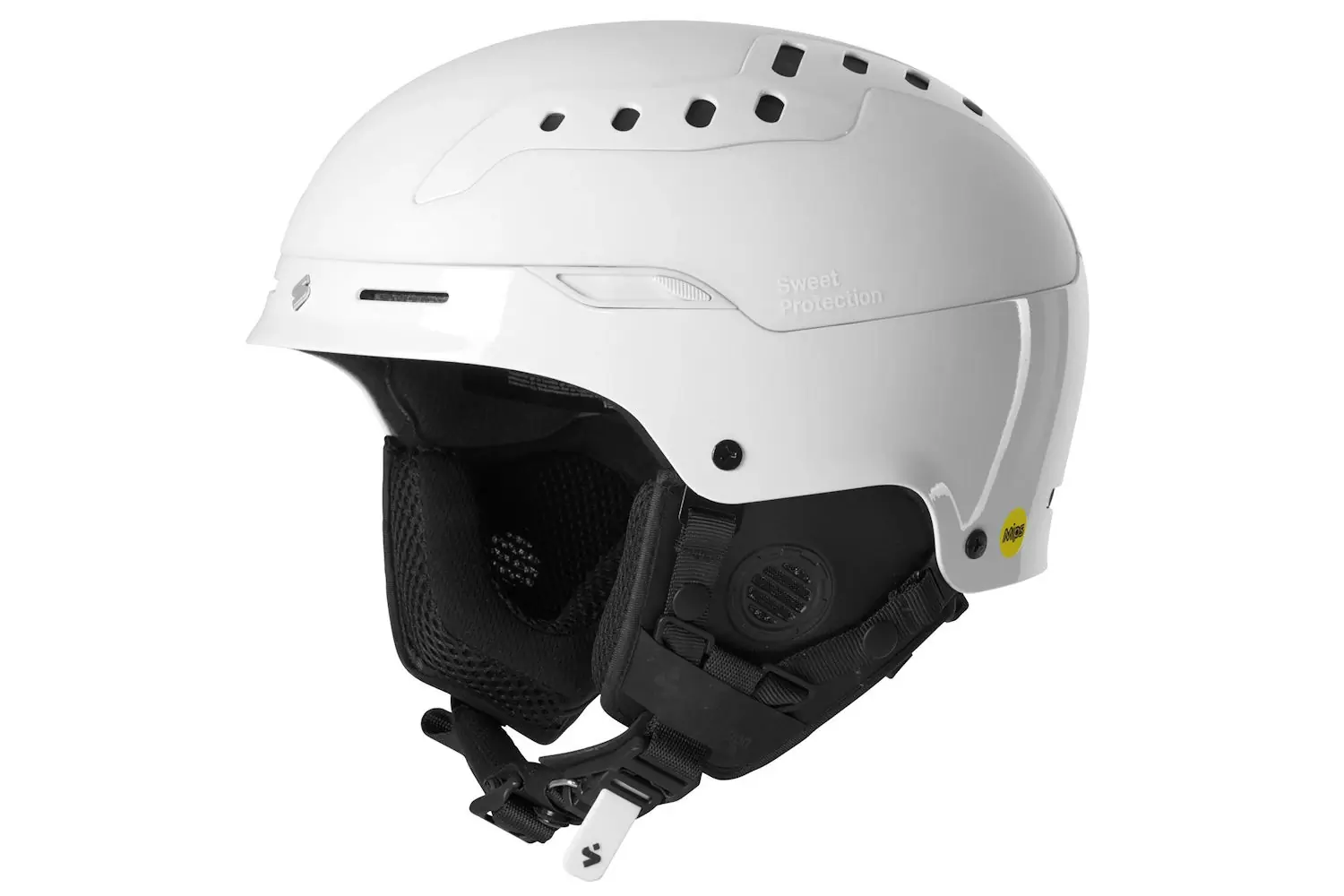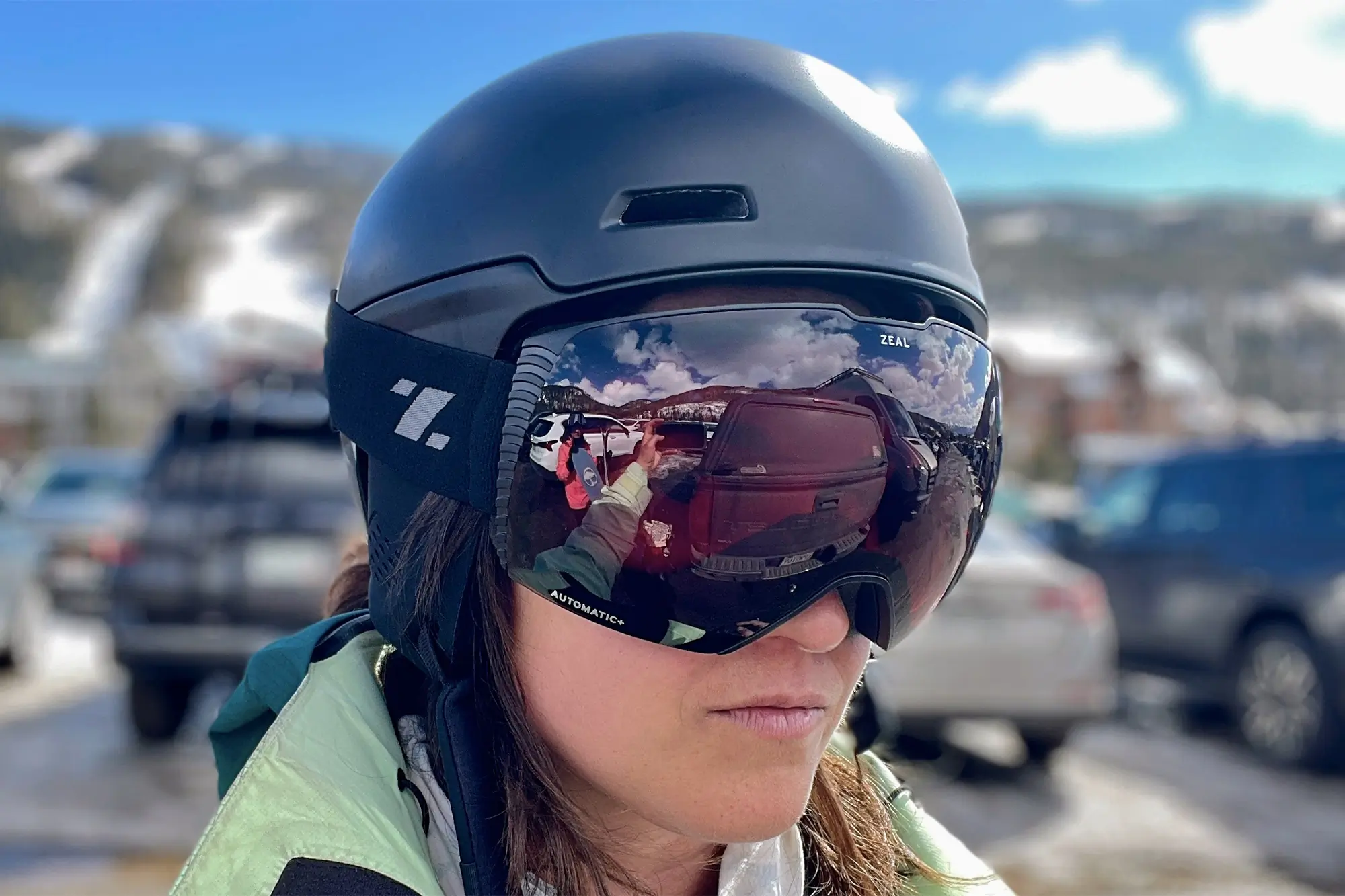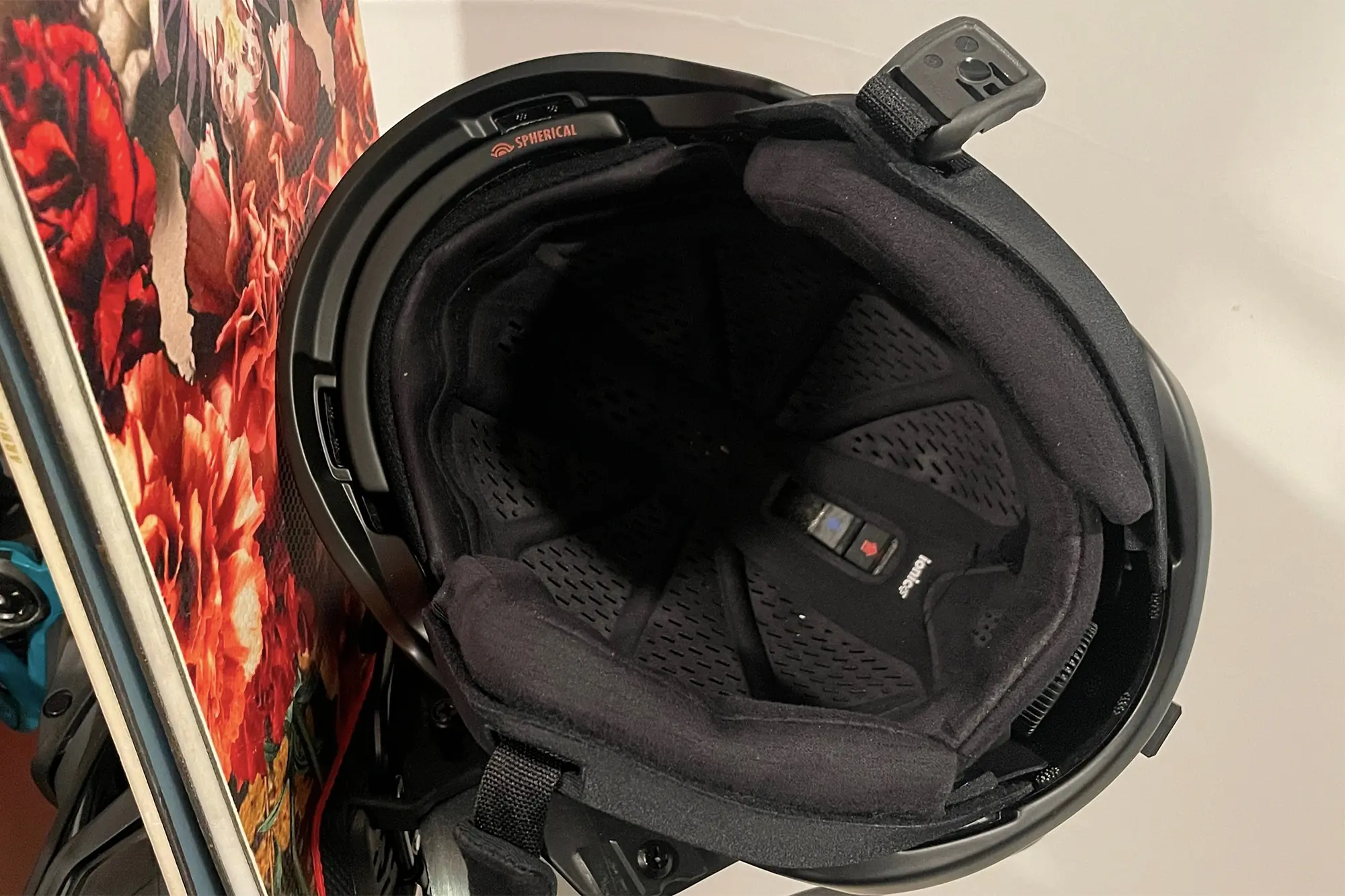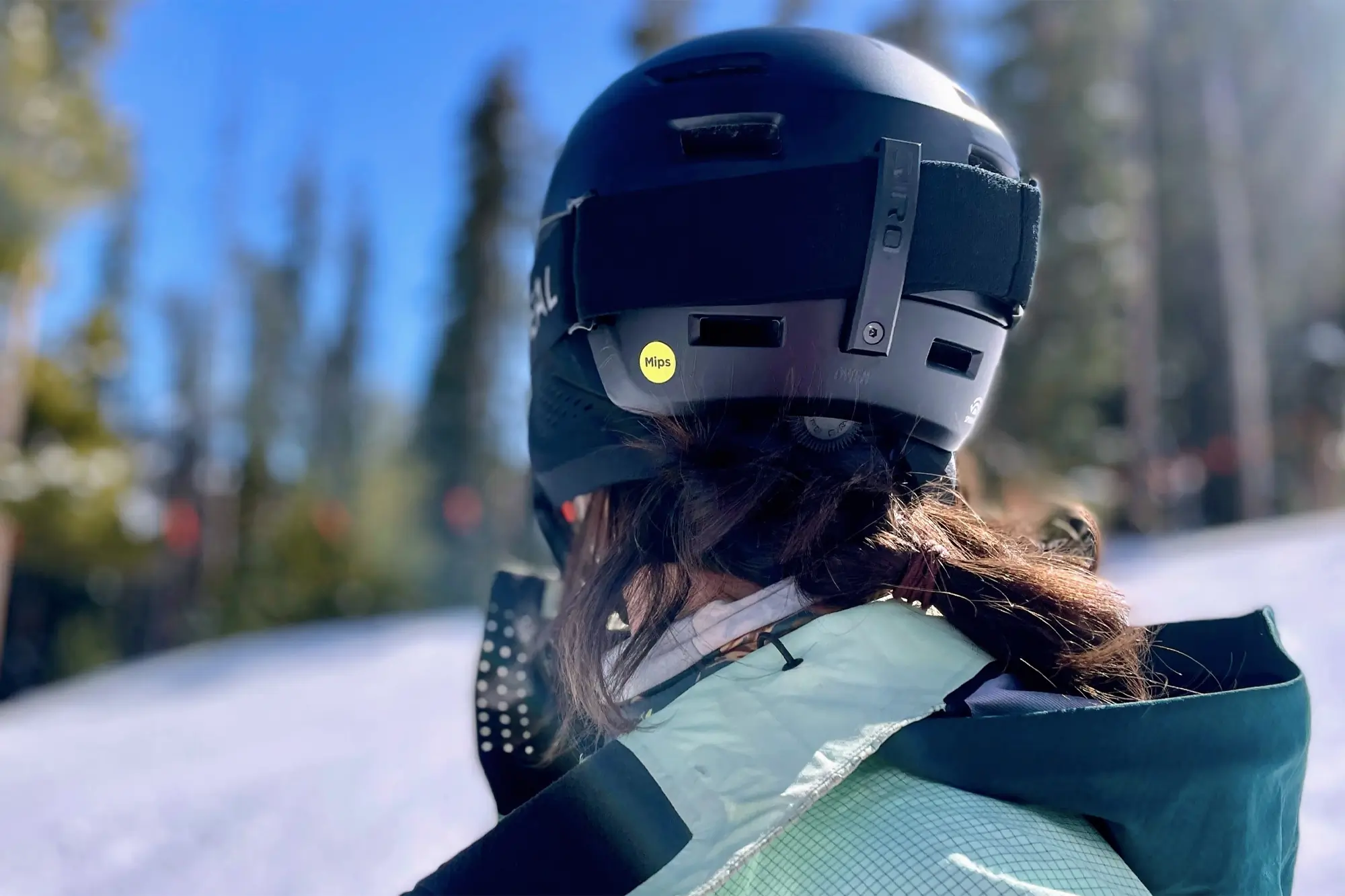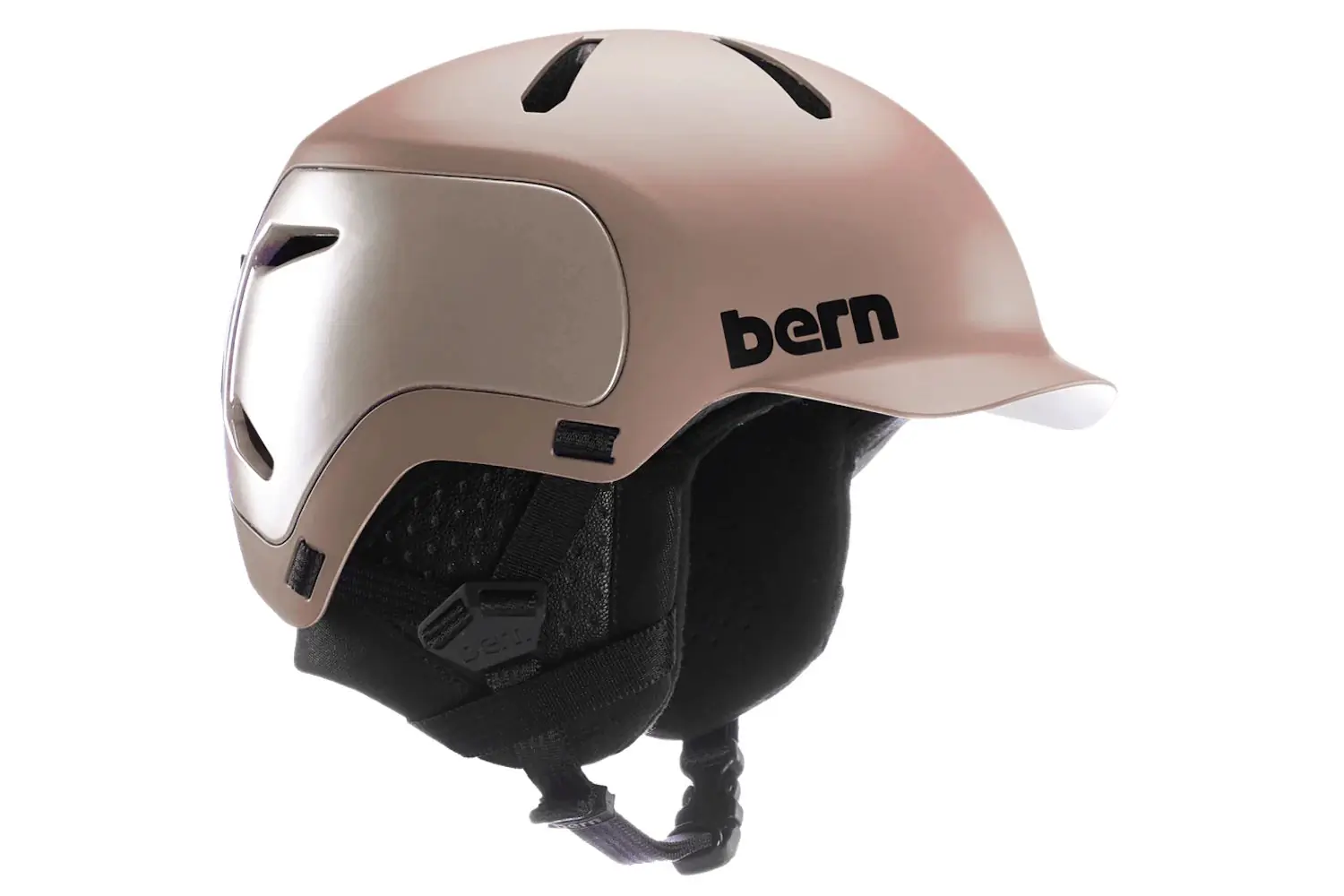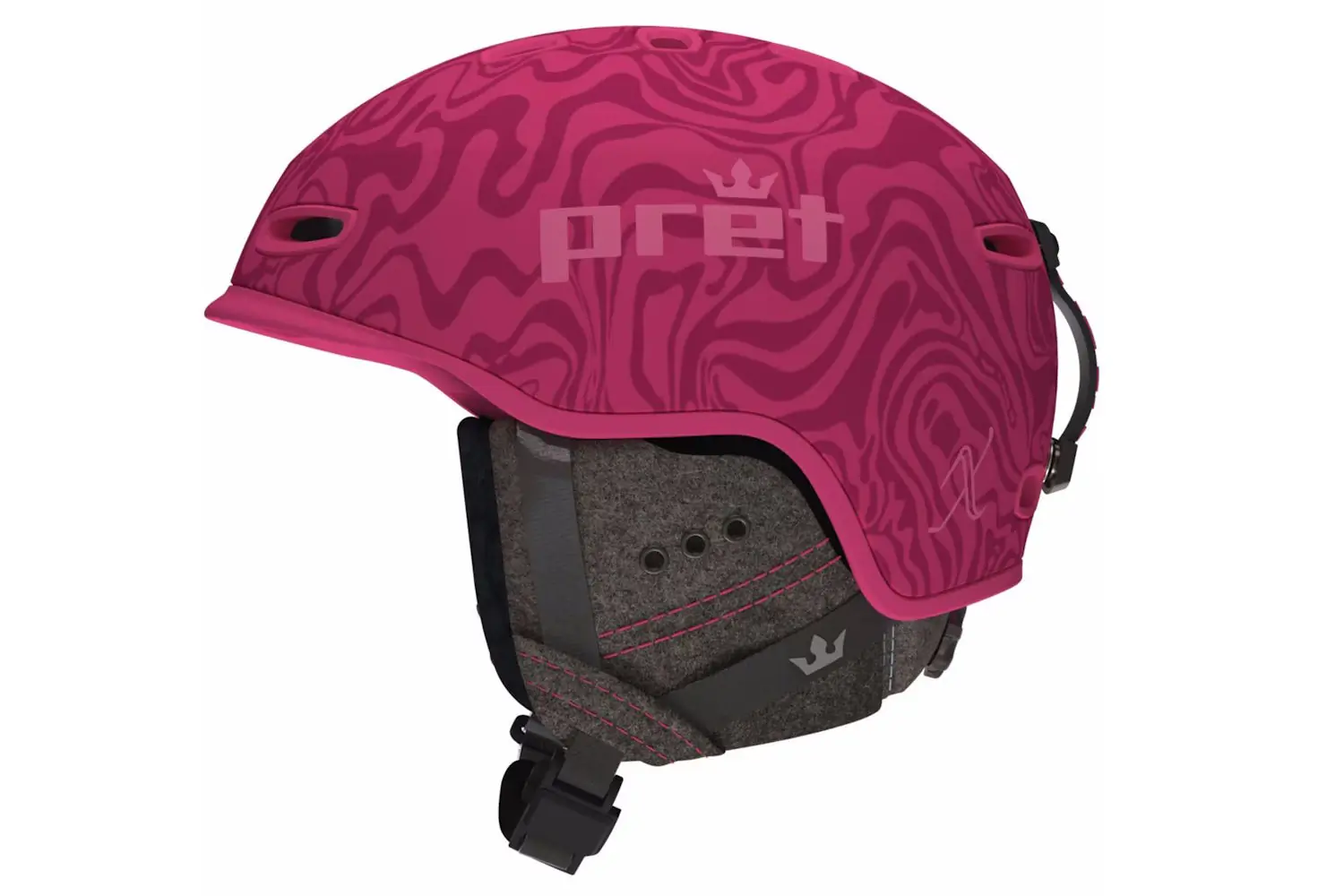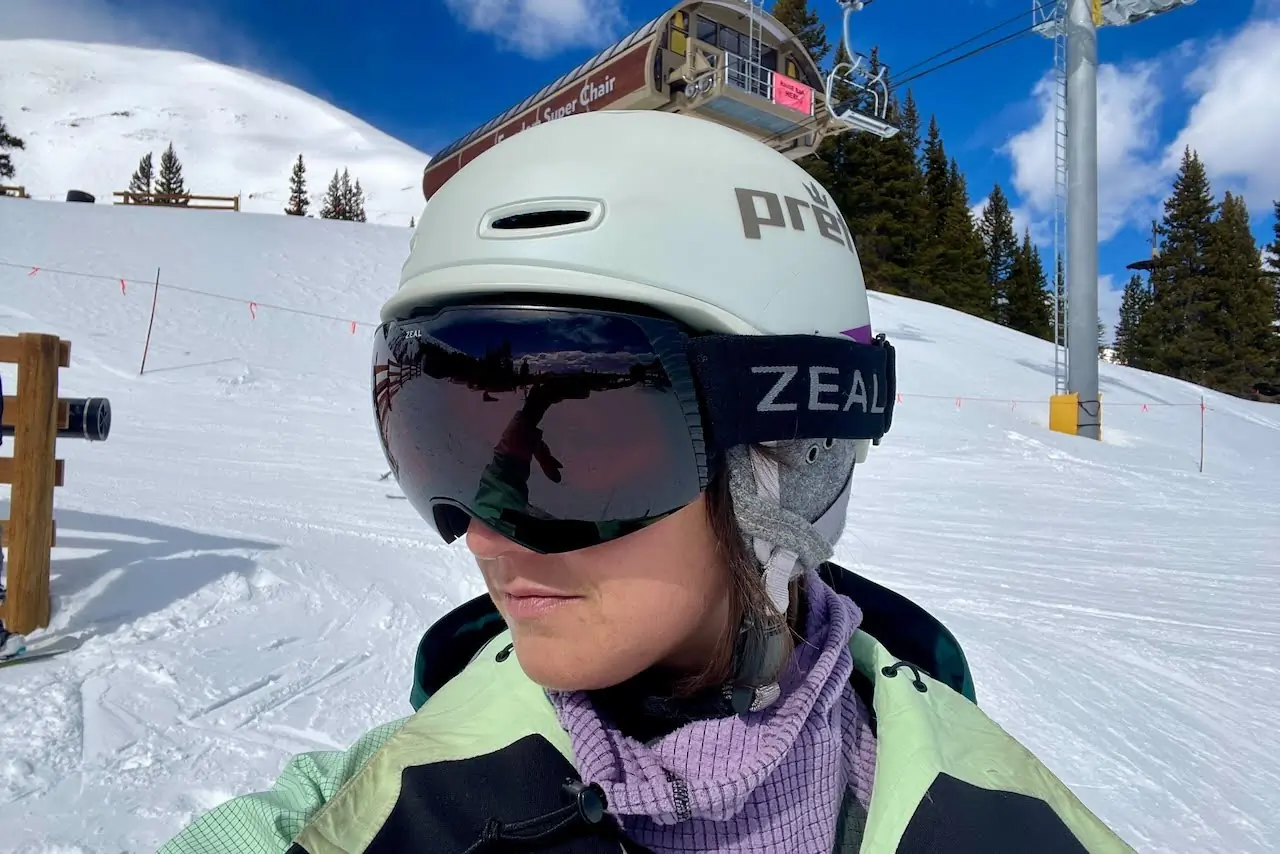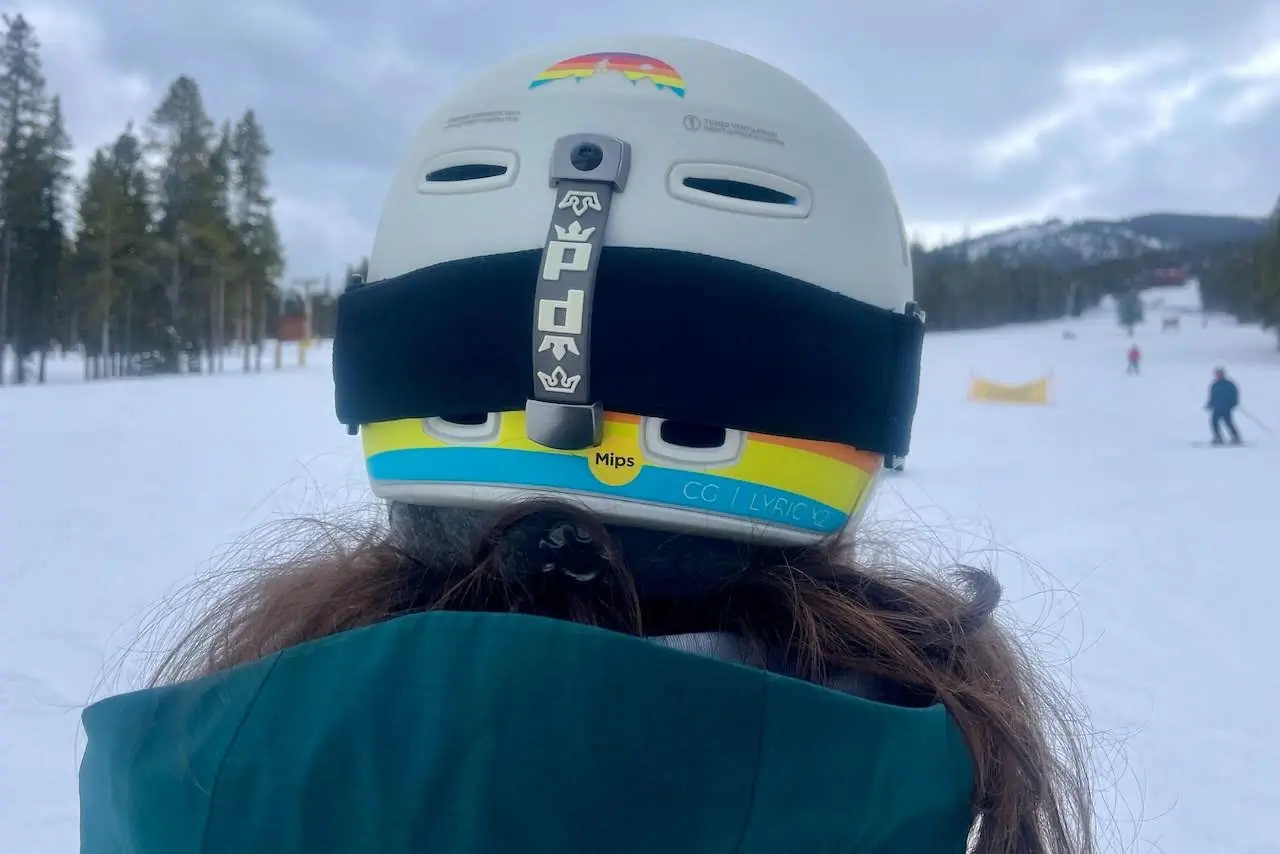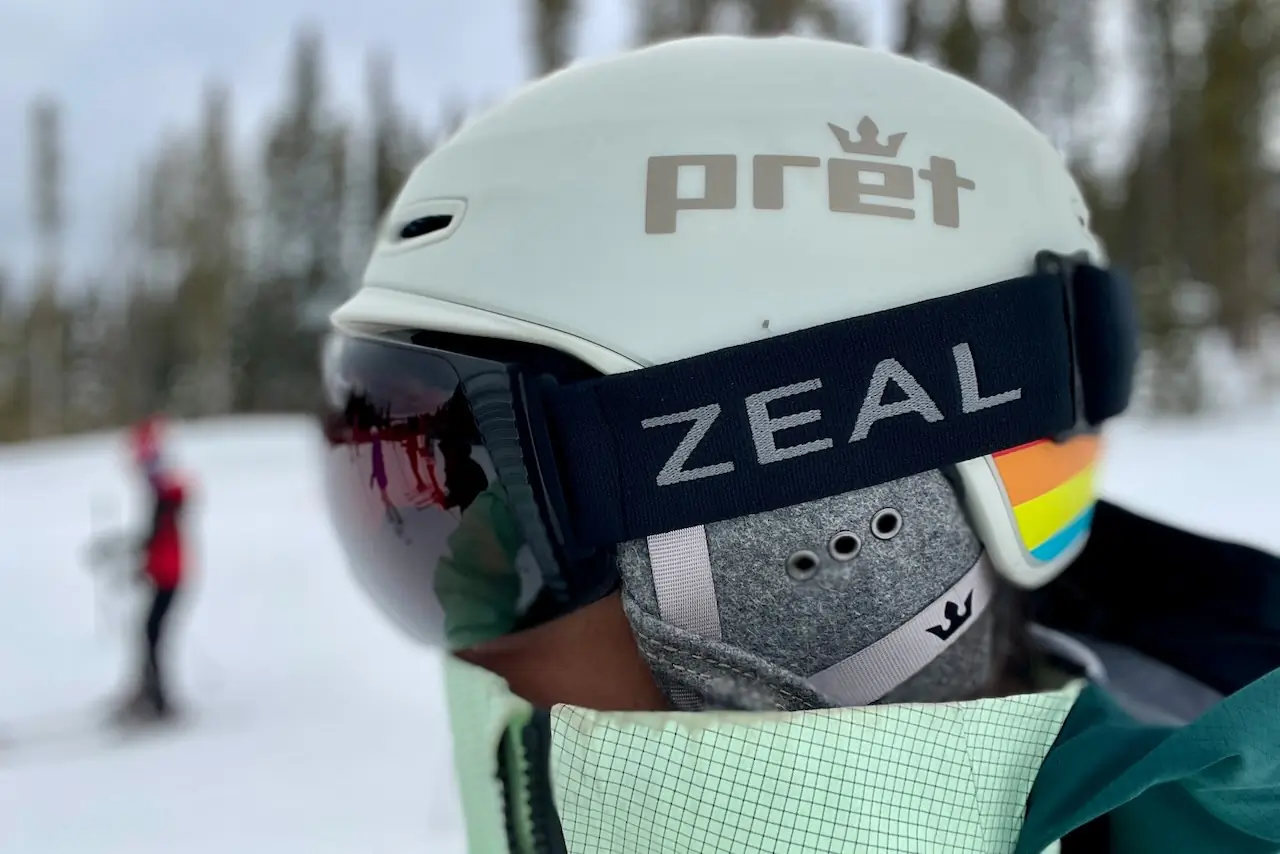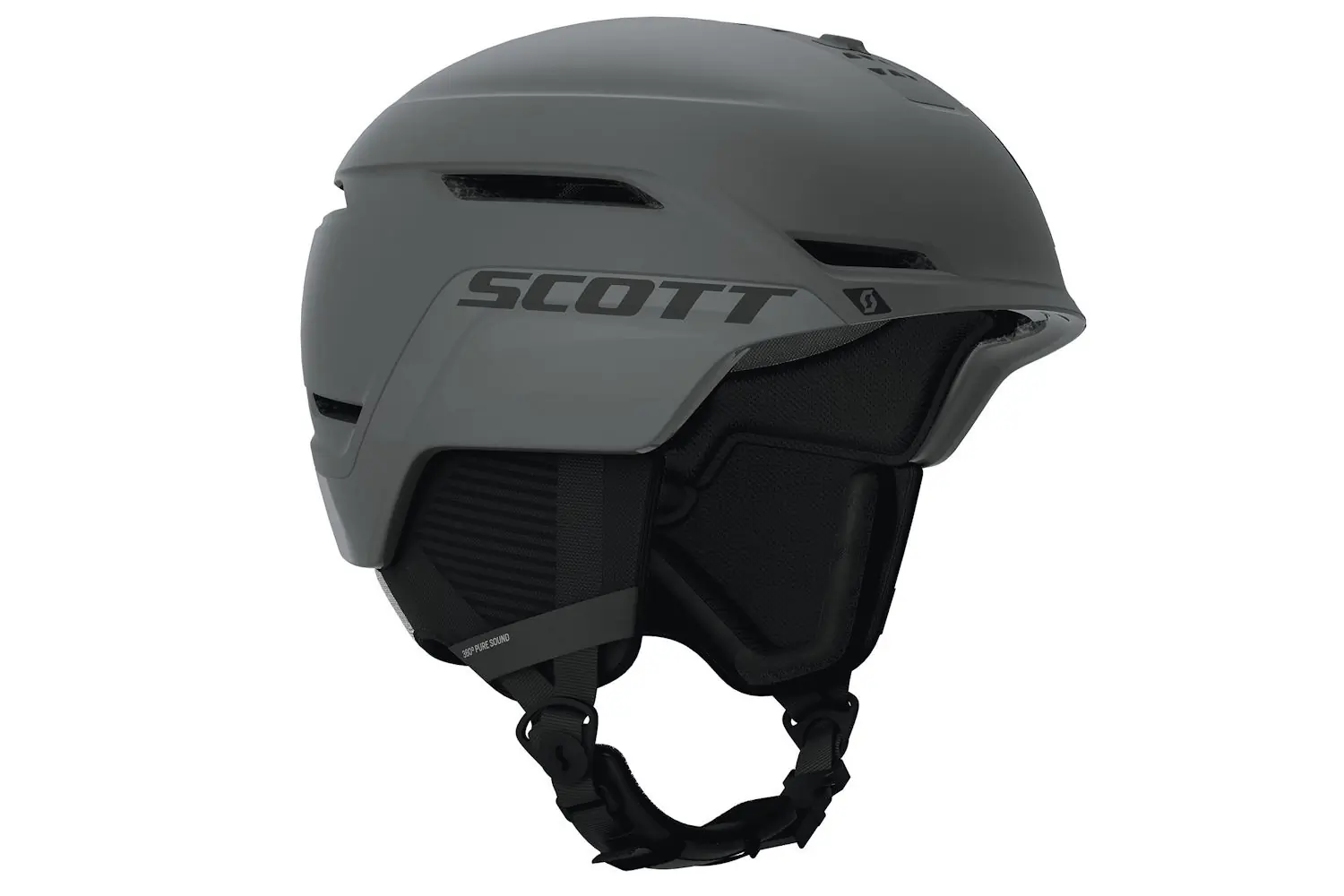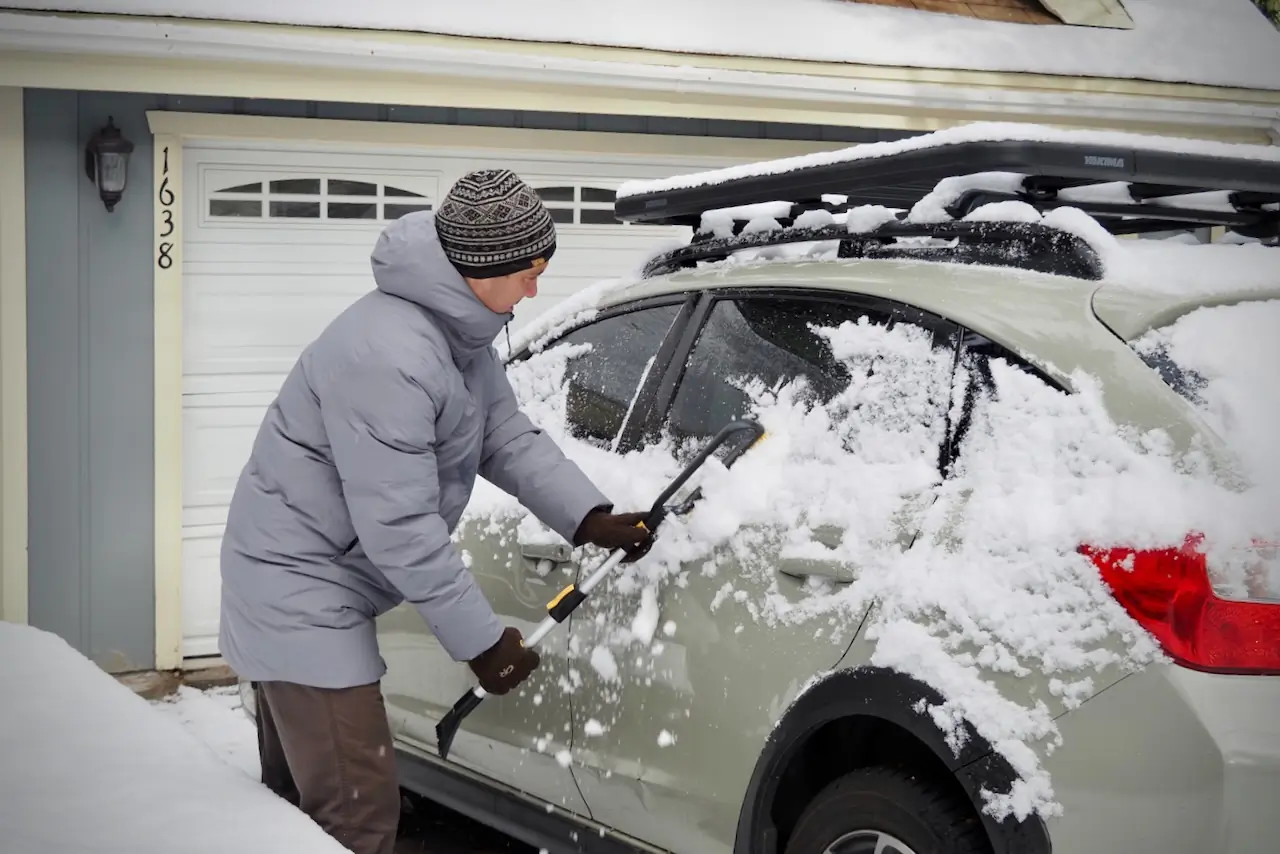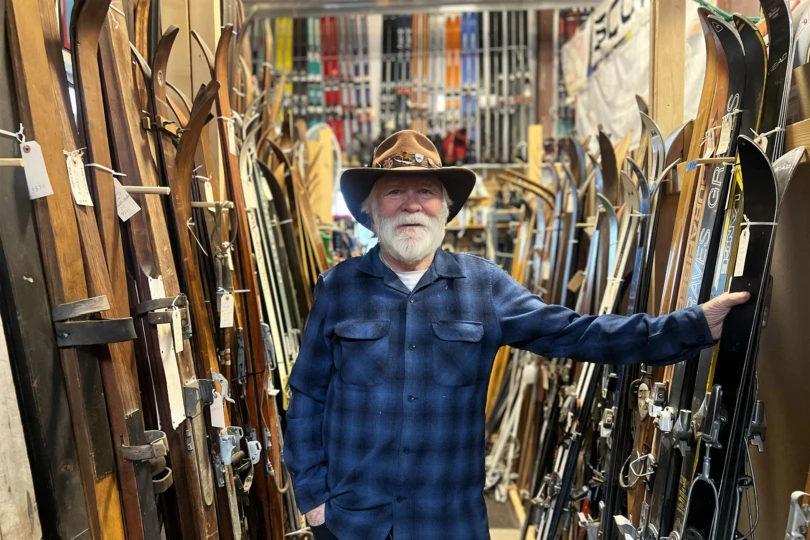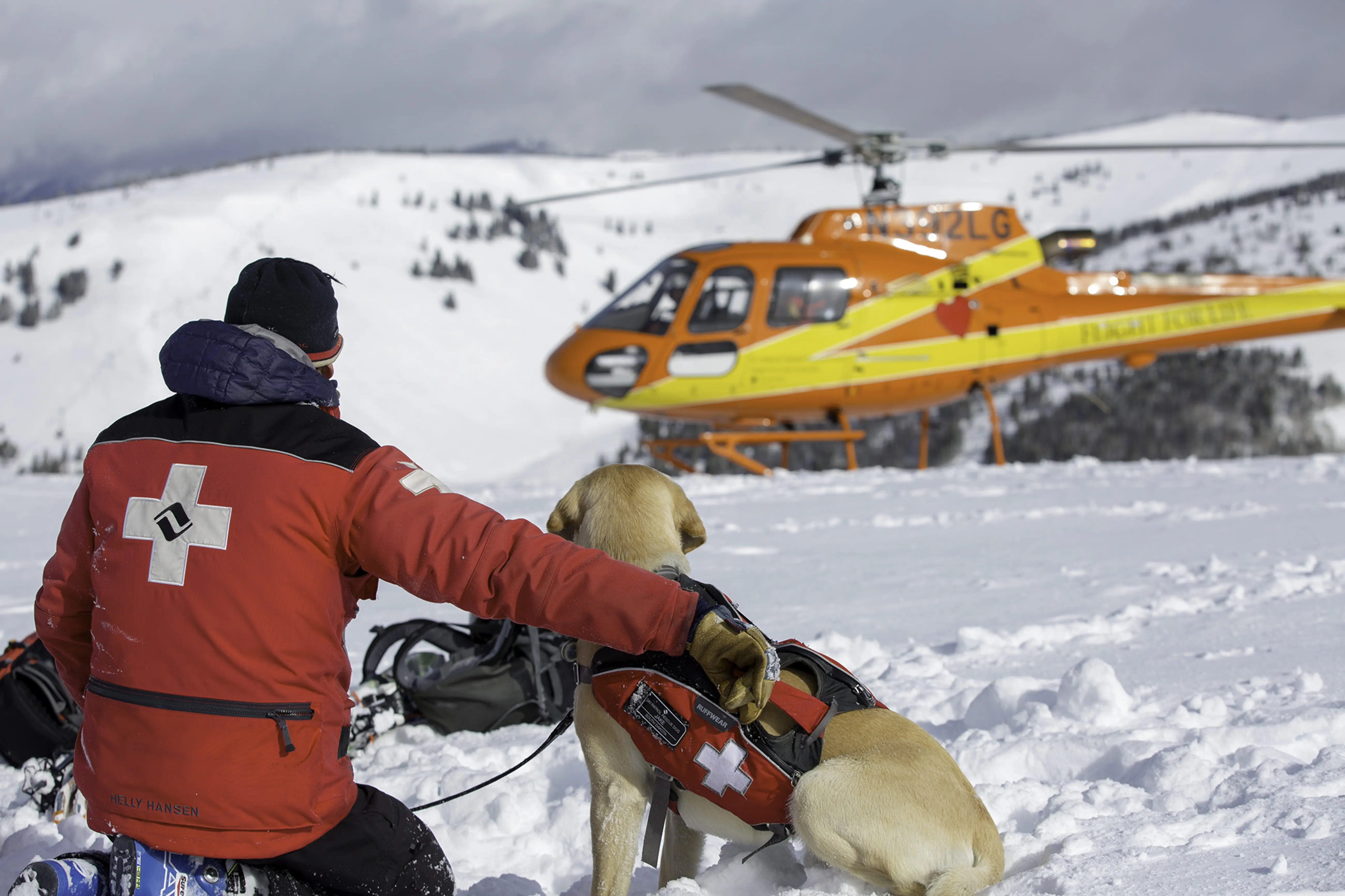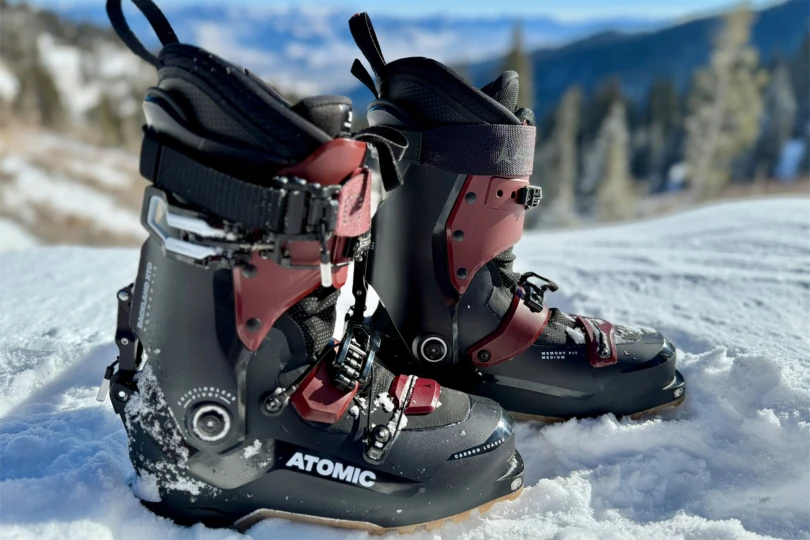Ski helmets aren’t just an accessory on the slopes — they’re lifesavers. Wearing one can be the difference between a close call and severe brain injury, and choosing the right lid can be the difference between style, warmth, and comfort versus annoyance.
Progressive designs like the Smith Nexus MIPS have 24 adjustable vents and multiple layers of protection, including MIPS and Koroyd. Other options, like the Pret Women’s Corona X and Pret Men’s Cirque X, integrate odor resistance, antimicrobial EPS foam, MIPS, and several safety certifications.
Not all snow helmets are created equal, and finding the best one is worthwhile. Our team has scoured the market to identify and field test the best options for the season.
Editor’s Note: We updated our Ski Helmets guide on October 22, 2025, to include an extended rating system that includes Safety Technology, Fit and Adjustability, Ventilation, Compatibility and Features. Slash through the powder with our Ski Helmets Rating System section below to learn more.
The Best Ski Helmets of 2025-2026
Smith Nexus MIPS Helmet
-
Safety Technology
9.5
-
Fit and Adjustability
9.0
-
Ventilation
8.5
-
Compatibility and Features
8.0
- Weight: 23 oz (medium)
- Protection bonus: MIPS, Koroyod, extra side protection with impact-resistant exoskeleton
- Number of vents: 24 including adjustability
Pros
- Integrates seamlessly with Smith goggles
- So many vents
- Extra side impact protection
Cons
- A pricier option
Giro Ratio MIPS Helmet
-
Safety Technology
8.0
-
Fit and Adjustability
7.5
-
Ventilation
7.0
-
Compatibility and Features
6.0
- Weight: 21.5 oz.
- Protection bonus: MIPS
- Number of vents: 10 adjustable
Pros
- Good value
- Effective ventilation system
Cons
- Earflaps let cold air in at high speeds
Smith Summit MIPS
-
Safety Technology
8.5
-
Fit and Adjustability
8.4
-
Ventilation
8.0
-
Compatibility and Features
8.0
- Weight: 16 oz. (medium)
- Protection bonus: MIPS, Koroyd
- Number of vents: 33
Pros
- Lightweight, sleek
- Integrated headlamp strap routing keeps gear in place
- Beanie and ball cap compatible
Cons
- Lack of ear cover and insulation
Pret Men’s Cirque X & Women’s Corona X
-
Safety Technology
8.0
-
Fit and Adjustability
8.0
-
Ventilation
7.0
-
Compatibility and Features
8.5
- Weight: 15.3 oz
- Protection bonus: MIPS
- Number of vents: 10 adjustable
Pros
- High-quality construction and materials
- Easily adjustable for comfort in any conditions
- Low-profile fit combines well with most goggles
Cons
- A bit pricer than other options
Salomon Driver Prime Sigma Photo MIPS
-
Safety Technology
8.0
-
Fit and Adjustability
5.0
-
Ventilation
9.0
-
Compatibility and Features
5.0
- Weight: 27 oz
- Protection bonus: MIPS, EPS4D
- Number of vents: Dozens of miniature ports within two long vent columns on the top of the head that can be open and closed
Pros
- Innovative 2-in-1 goggle and helmet system
- Advanced safety features
- Extremely comfortable
Cons
- Doesn’t make sense if you already own goggles you like
- Inside of visor froze on especially cold day
- Replacement lenses hard to come by
POC Obex BC MIPS
-
Safety Technology
9.8
-
Fit and Adjustability
8.5
-
Ventilation
6.5
-
Compatibility and Features
8.5
- Weight: 19.4 oz.
- Protection bonus: MIPS, TwicemeNFC Medical ID Chip, RECCO Avalanche rescue reflector
- Number of vents: 8 fixed, 3 adjustable
Pros
- Lightweight protection
- Additional safety features for backcountry travel
- Adjustable ventilation
Cons
- Some features might be overkill for resort goers
- Front vents aren't adjustable
Smith Method MIPS
-
Safety Technology
8.5
-
Fit and Adjustability
9.0
-
Ventilation
5.0
-
Compatibility and Features
8.0
- Weight: 14.1 oz.
- Protection bonus: Koroyod and MIPS
- Number of vents: 8 fixed
Pros
- Very lightweight
- Sleek design
- More affordable
Cons
- All vents are fixed
- No adjustable fit-system
Our Other Radical Noggin Shields
-
Safety Technology
9.4
-
Fit and Adjustability
7.5
-
Ventilation
5.0
-
Compatibility and Features
9.0
- Weight: 13.4 oz.
- Protection bonus: Atomic Multidirectional Impact Deflector (AMID), Holo Core, injected polycarbonate around sides
- Number of vents: 8 fixed
Pros
- Lightweight
- Comfortable
- Audio-compatible
- Well-ventilated
Cons
- Scratches somewhat easily
- Color descriptions seem misleading
-
Safety Technology
8.0
-
Fit and Adjustability
7.5
-
Ventilation
4.5
-
Compatibility and Features
7.0
- Weight: 32 oz.
- Protection bonus: MIPS
- Number of vents: 5 total (four adjustable, one fixed)
Pros
- Thorough ear protection
- Easy-to-access vents
- Compatible with many goggles
Cons
- Slight pressure in the temple area during the first few wears
-
Safety Technology
6.5
-
Fit and Adjustability
7.5
-
Ventilation
8.0
-
Compatibility and Features
7.5
- Weight: 16.9 oz.
- Protection bonus: WaveCell
- Number of vents: 19 total; 8 adjustable
Pros
- Excellent safety technology
- Comfortable padding
- Ventilation system works well across a broad temperature range
Cons
- Sizing runs slightly small
-
Safety Technology
8.0
-
Fit and Adjustability
7.5
-
Ventilation
8.5
-
Compatibility and Features
7.5
- Weight: 20.1 oz. (small/medium)
- Protection bonus: MIPS
- Number of vents: 22 adjustable, 4 fixed (26 total)
Pros
- Adjustable ventilation system
- Comfortable
- Stylish
Cons
- Slightly heavier and more expensive than some similar options
-
Safety Technology
8.0
-
Fit and Adjustability
8.0
-
Ventilation
4.0
-
Compatibility and Features
6.5
- Weight: 15.9 oz.
- Protection bonus: MIPS
- Number of vents: 8; four adjustable on back
Pros
- Top-notch safety technology
- All-day comfort and warmth
- Very low profile and minimalist
Cons
- Can only adjust vents from inside the helmet
-
Safety Technology
8.0
-
Fit and Adjustability
9.0
-
Ventilation
6.5
-
Compatibility and Features
8.5
- Weight: 12.3 oz.
- Protection bonus: MIPS
- Number of vents: 11 fixed
Pros
- Dial-operated system for a more custom fit
- Multisport helmet
- Stylish points for the brim, which helps moisture roll away
Cons
- Vents are not adjustable
-
Safety Technology
8.0
-
Fit and Adjustability
8.0
-
Ventilation
4.5
-
Compatibility and Features
7.9
- Weight: 15.8 oz.
- Protection bonus: MIPS
- Number of vents: 12 fixed
Pros
- Thorough ear protection
- Compatible with many goggles
- Very lightweight
Cons
- Can only adjust vents from the inside of the helmet
-
Safety Technology
9.0
-
Fit and Adjustability
8.0
-
Ventilation
9.5
-
Compatibility and Features
8.0
- Weight: 20 oz.
- Protection bonus: MIPS, D30 shock-absorbing material, Pure Sound earpieces for sound clarity
- Number of vents: 8 vents along the front, back, and sides plus 36 mini ports on the top for a total of 44 vents with sliders for adjustability in two zones
Pros
- Top-notch safety technology
- Comfortable padding
- Ventilation system works well across a broad temperature range
Cons
- Sizing runs slightly small
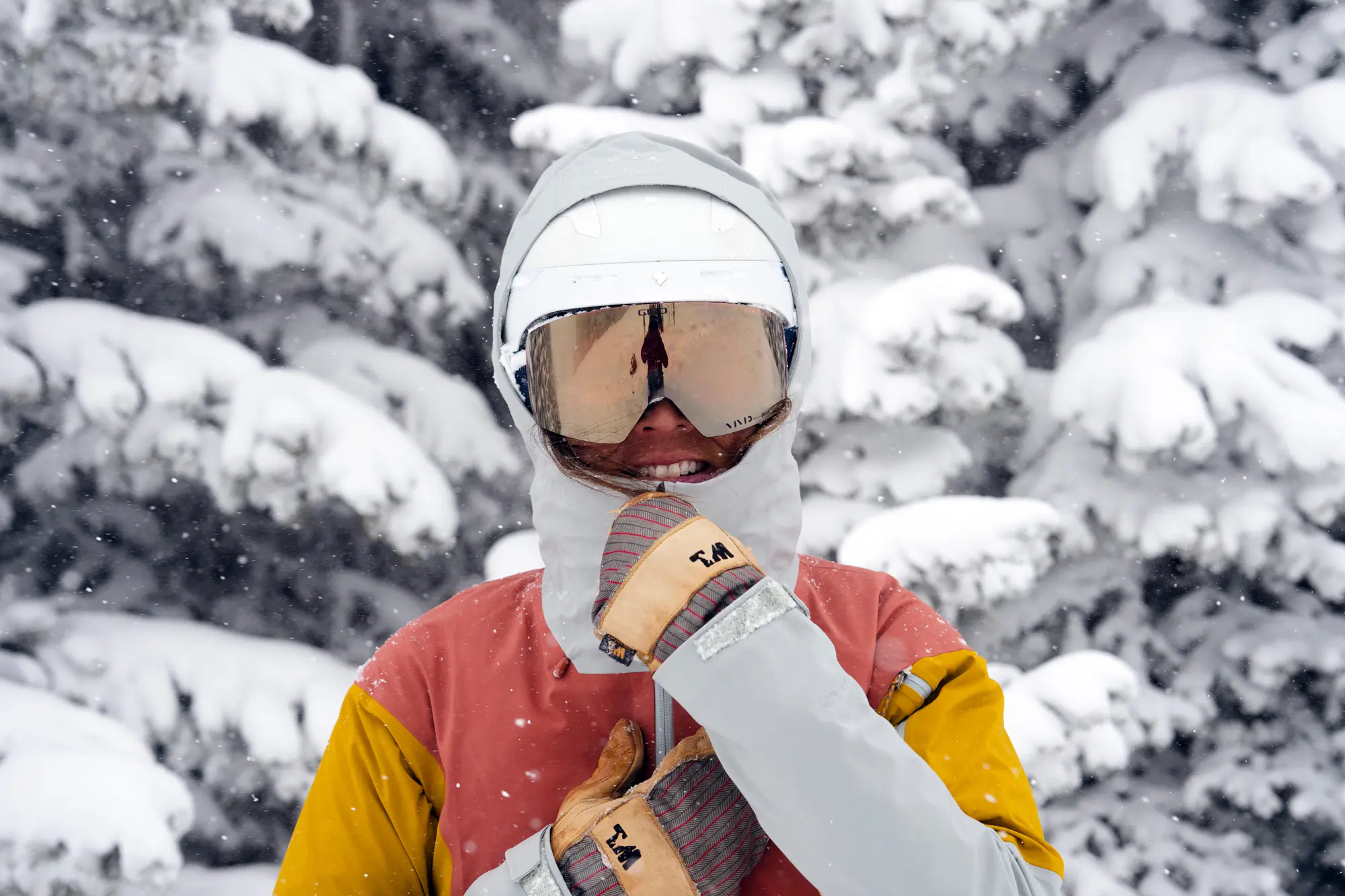
Ski Helmet Comparison Chart
Scroll right to view all of the columns: Price, Weight, Fill, Protection Technology, Number of Vents.
| Ski Helmet | Price | Weight | Protection Technology | Number of Vents |
| Smith Nexus MIPS | $330 | 23 oz | MIPS, Koroyd | 24 adjustable |
| Giro Ratio MIPS | $145 | 20 oz. | MIPS | 10 adjustable |
| Smith Men’s Vantage & Women’s Vantage | $270 | 17.6 oz. | MIPS, Zonal Koroyd | 21 adjustable |
| Oakley Mod5 MIPS | $270 | 32 oz. | MIPS | 4 adjustable |
| Anon Merak | $320 | 16.9 oz. | WaveCell | 19; 8 adjustable |
| Pret Women’s Corona X & Men’s Cirque X | $270 | 15.3 oz. | MIPS | 10 adjustable |
| Sweet Protection Switcher | $270 | 20.1 oz. | MIPS | 24 adjustable |
| Giro Owen Spherical | $240 | 15.9 oz. | MIPS | 8; 4 adjustable |
| Salomon Driver Prime Sigma Photo MIPS | $450 | 27 oz. | MIPS, EPS4D | Dozens of adjustable mini ports |
| Smith Summit MIPS | $138 | 16 oz. | MIPS, Koroyd | 33 fixed |
| Bern Watts 2.0 | $170 | 12.3 oz. | MIPS | 11 fixed |
| Pret Lyric X2 | $160 | 15.8 oz. | MIPS | 12 fixed |
| POC Obex BC MIPS | $270 | 18 oz. | MIPS, NFC Medical ID Chip, RECCO | 9 adjustable |
| Smith Method MIPS | $140 | 14.1 oz. | MIPS, Koroyd | 8 fixed |
| Atomic Four Amid Pro Ski Helmet | $180 | 13.4 oz. | AMID, Holo Core Technology | 8 adjustable |
| Scott Symbol 2 Plus | $200 | 20 oz. | MIPS, D30 | 8; 2 adjustable; 36 miniports |




How We Tested the Best Ski Helmets
Full transparency: We aren’t actually trying to crash and get a head injury while wearing helmets. But sometimes we tomahawk. Occasionally, we break a helmet. Regardless, we have a huge checklist of qualifications for helmets.
Our Expert Testers
Our ski and snowboard crew of GearJunkie gear testers includes expert skiers and riders, certified backcountry travelers, and skimo racers testing gear to help find the best of the best.
GearJunkie tester Mattie Schuler has snowboarded for more than 20 years and is quite picky about helmet features and ease of use. She’d rather spend her time focusing on riding than on how her helmet feels.
Leading the gear testing, SnowSports Senior Editor Morgan Tilton has been skiing since 1994 and snowboarding since 2002. Over the past few decades, Tilton has hit her head in a few hard crashes, but the worst was while snowboarding in icy conditions, in 2003. She was found knocked out with a Grade II concussion and broken nose. Thankfully, she was wearing a helmet. She lives in Gunnison Valley, one of the coldest, snowiest places in North America.
GearJunkie tester Kylie Mohr has been skiing with a ski helmet on since she was a toddler, more than two decades ago, and enjoyed putting helmets to the test at Montana’s resorts and on backcountry faces. Contributor Austin Beck-Doss has also tested helmets.
GearJunkie’s assistant ski editor Will Brendza has been on skis since he was two, taught skiing at Beaver Creek for several years, and spends equal time in the resort and in the backcountry, getting around 75 days a year. He always has a ski helmet with him in testing.
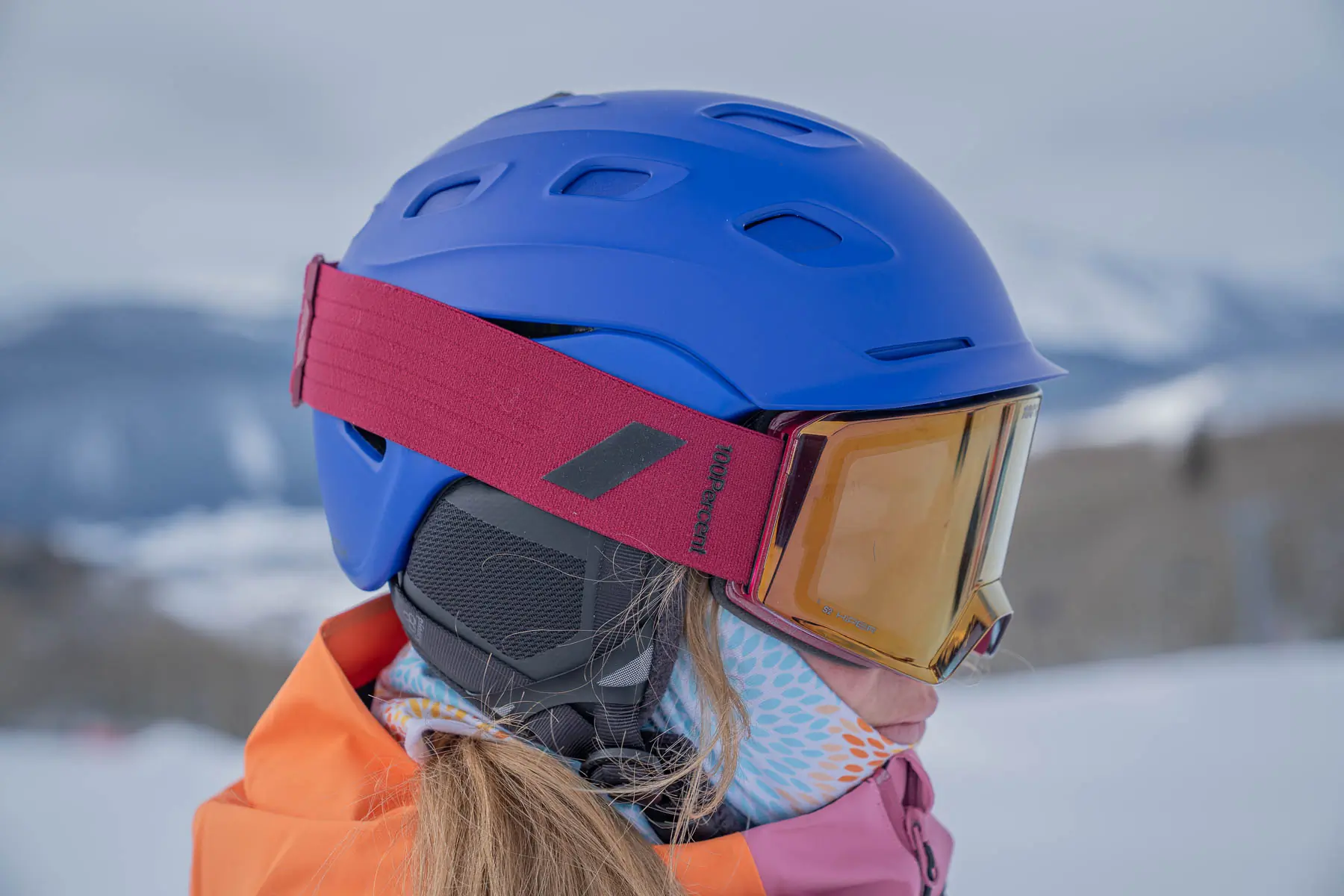



Our Testing Grounds
We’ve tested ski and snowboard helmets in a range of conditions from California to the Colorado Rockies and in high alpine environments. We’ve worn helmets through the glades and while ripping steep groomers at the resort. Our helmets have been on during whiteout blizzards, when descending routes in the backcountry, riding snowmobiles at highway speeds, and while doing skimo workouts.
The GearJunkie team meets for an annual on-snow test week to grind out turns and swap notes, including two previous gatherings at Crested Butte Mountain Resort, which is known for its expert terrain.
Our Testing Process
While testing our ski and snowboard helmets, we consider overall fit, comfort, impact protection, warmth, size adjustability, goggle integration, ventilation, ergonomics, chin strap, anti-odor treatment, padding, and style. We consider the most innovative, novel, sport-specific, popular, highly rated, and legacy products across a range of price points.
Our list of ski and snowboard helmets represents a range of options for various objectives, climates, conditions, athletes, and budgets.
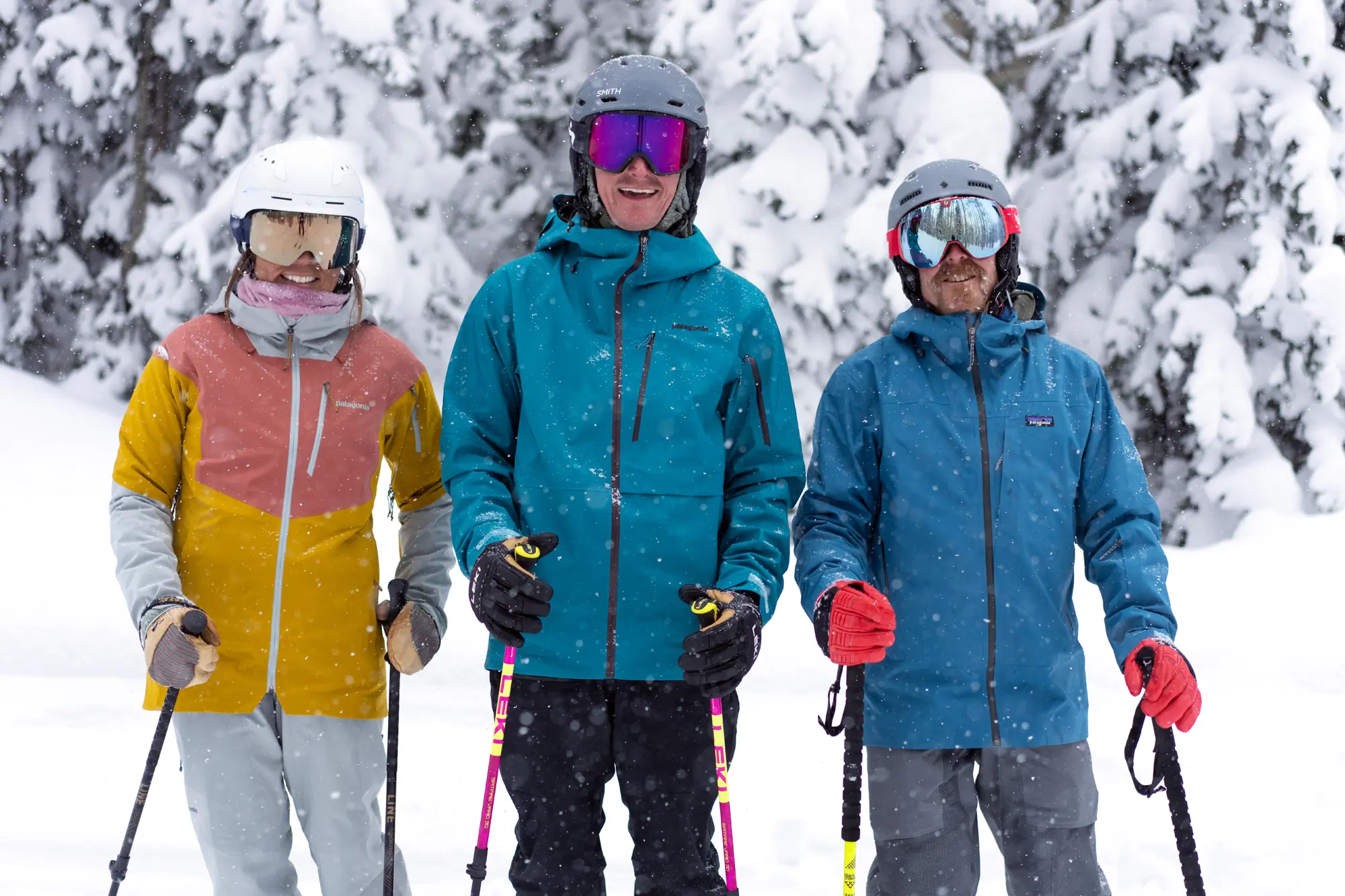



Our Ski Helmets Rating System
When choosing a ski helmet, we assess the Safety Technology, Fit and Adjustability, Ventilation, and Compatibility and Features, which are the most critical factors. We score each ski helmet on a 1–10 scale.
- We look for certified impact protection systems like MIPS that enhance safety in angled crashes.
- A secure, adjustable fit system ensures comfort and stability on the slopes. Our team tests a variety of helmet sizes and head shapes, and pays attention to the interior padding, placement, pressure points, and ease of adjustment. We inspect how easy the shell fit is to adjust while wearing ski gloves or a hat.
- Adjustable vents help regulate temperature in changing conditions, so we note which helmets have adjustable or fixed vents and the quantity, effectiveness, and placement.
- Finally, a ski helmet must have good goggle compatibility, which we check with various goggle models, goggle sizes, and the helmet’s unique strap attachment system. We note other integrated features like removable, audio-ready ear pads, which add convenience and performance.
The Overall Rating is based on contextual, editorial judgment, and the complex user experience across various scenarios and conditions.
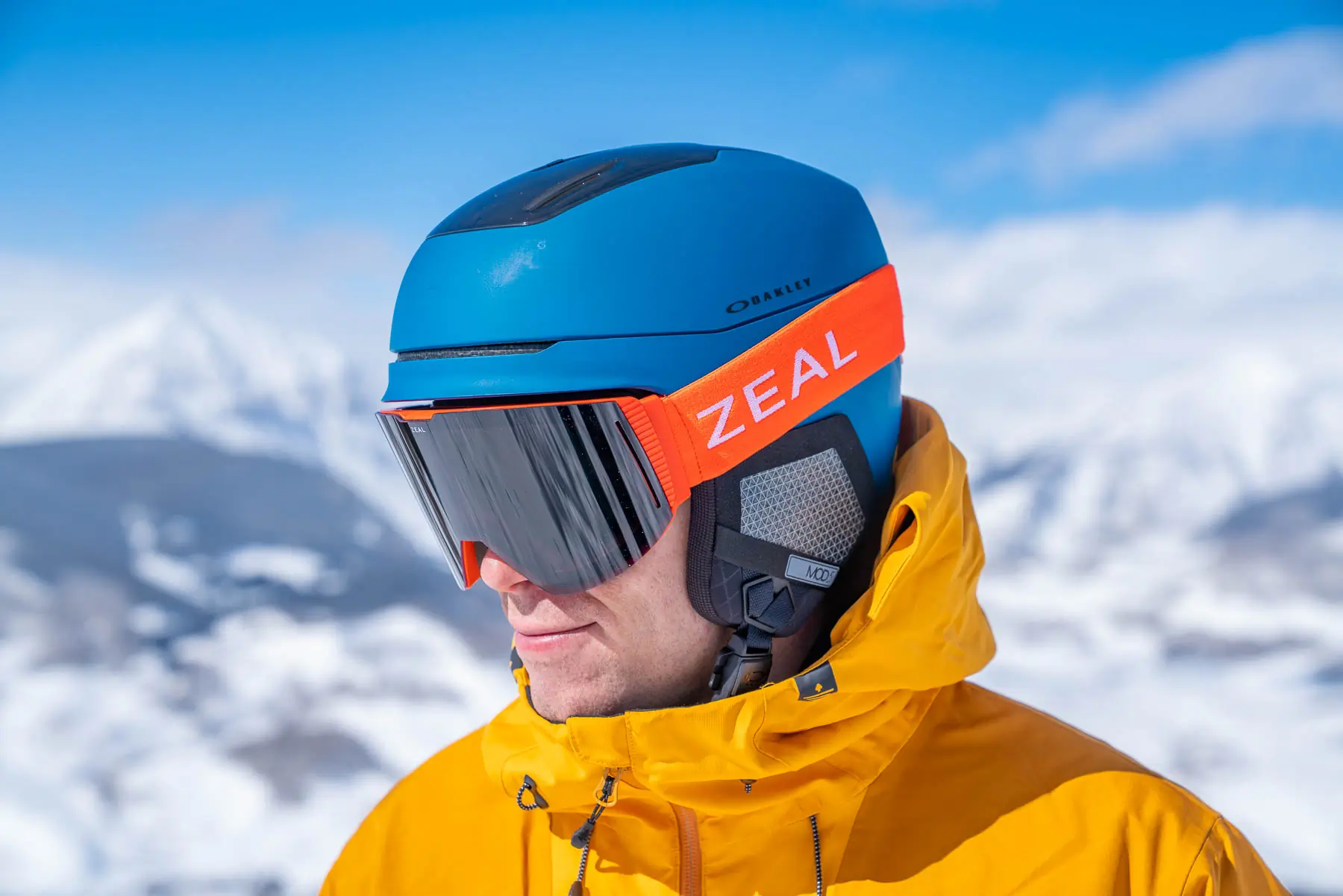



Buyer’s Guide: How to Choose a Ski Helmet
Buying a ski and snowboard helmet is an important decision when outfitting yourself for the slopes. We look for a variety of factors. Comfort and fit are extra important — if a helmet doesn’t fit your head or your purpose, you’re less likely to wear that shield. Protection and safety components, like systems and technologies designed to absorb impact, are also crucial.
Additional factors like ventilation, adjustability, and goggle compatibility all help you customize your helmet to your needs. Will you be uphilling in your helmet? On a regular basis, do you tend to get cold while skiing laps? What kind of goggles do you own and what size? These are all questions to consider when purchasing a new ski helmet. Read on for more detailed step-by-step on what to consider when you are buying a ski and snowboard helmet.
Ski Helmet Construction
There are three types of helmet constructions: ABS, in-mold, and hybrid in-mold.
ABS is a type of plastic material that’s most commonly used for a variety of helmets, including ski, bicycle, skateboard, and safety helmets. It’s known for its strength, toughness, and impact resistance. This construction looks like a hard plastic shell with a foam liner on the inside. ABS helmets can feel bulkier and less breathable than in-mold or hybrid options, but are a great budget-friendly option — especially for beginners. One of our favorites, the Giro Ratio MIPS Helmet, is an example of ABS.
In-mold and hybrid-in mold helmets mold together a shin shell with an EPS foam liner. Integrating the two layers shaves ounces.
But In-mold helmets don’t earn the best marks for durability. Enter, the hybrid! Hybrids add a hard shell layer on top for more durability and aesthetic resistance to scrapes and dings. Hybrid designs are often the most expensive of the pack. Some of our top picks, like the Smith Vantage, utilize this type of construction.
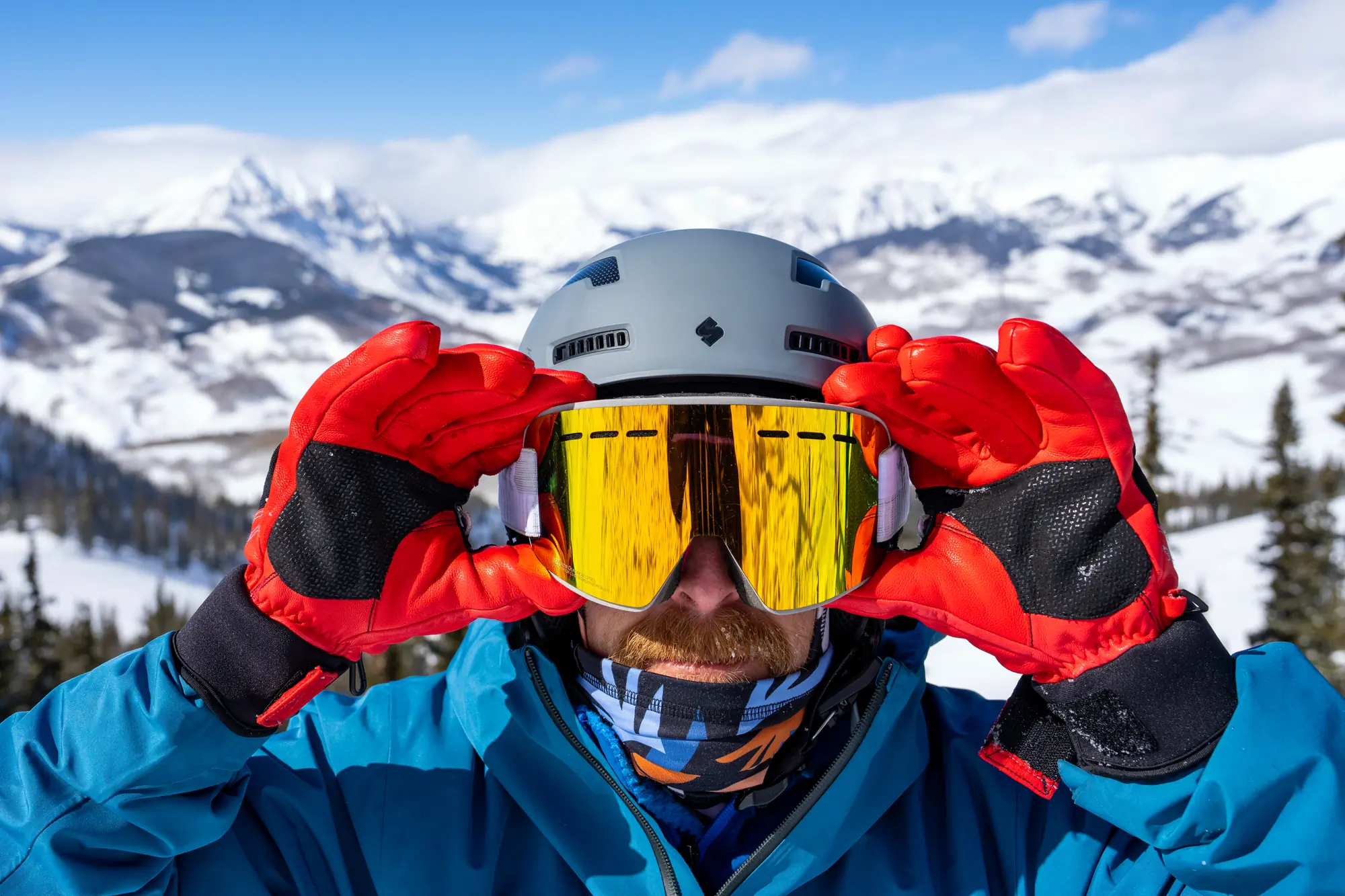



Backcountry-Specific Ski Helmets
If you tend to tour in the backcountry more than heading to the resorts, a backcountry-specific helmet might be your best (and lightest) option. Helmets that are made for touring days, like the POC Obex BC MIPS and the Smith Summit MIPS Backcountry, are often very lightweight and extremely breathable, so that you aren’t carrying any extra weight as you work up that sweat going up hill.
The POC Obex also boasts unique protection elements that may come in handy in the backcountry, where accidents can be fatal, and emergency response may take longer to arrive. A RECCO reflector makes the helmet searchable for rescuers with the appropriate technology. And medical ID chip is programmable with health information and emergency contacts. Other features for a backcountry-specific helmet can include an integrated headlamp strap route that keeps it in place, like on the Smith Summit MIPS helmet.


Comfort & Fit
Because ski and snowboard helmets are often worn all day long, you’ll want yours to feel comfortable and to have a correct fit. Pressure points can cause unnecessary headaches. The best helmets are the ones that fit perfectly with no pinch points or pain, so that you can focus on enjoying your day on the snow.
Overall comfort is the result of many different components working together, including padding, weight, shape, earpieces, and adjustment system as well as overall fit and the correct size.
Every skier and rider has a different head shape, so we always recommend trying helmets on before purchase to ensure fit and comfort. On this list, the Giro Owen Spherical and the Sweet Protection Switcher are noteworthy for their exceptional comfort.


Protection & Safety
Above all else, your helmet should provide reliable protection. Quality ski helmets are made with durable impact-absorbing foam, hardy shells, rear and lateral protection, and rotational impact systems. All of the helmets on this list offer top-tier protection and should help you feel confident and prepared on the mountain.
Safety Certifications for Ski Helmets
Helmets often have stickers with safety certification letters and numbers on them. What do they mean?
- ASTM F2040: The most common certification for snow helmets. This is a U.S. standard that covers non-motorized snow sports like skiing and snowboarding. All helmets sold in stores like REI have this certification.
- CE EN1077: A European standard for skiing and snowboarding. Some helmets meet European and U.S. standards, while some meet one but not the other.
- EN 12492: A climbing certification. This means a helmet offers more protection from objects falling from above, namely, rocks, as well as the usual side/front/rear protection of a ski or snowboard helmet. Backcountry skiers and mountaineers might want this certification for additional safety.
If you’re looking for a multisport helmet, be sure the design has been certified by a governing body in the United States or Europe for the sport. For instance, the Bern Watts 2.0 is capable of protecting your head during a fall while skiing or snowboarding as well as skateboarding, cycling, or roller skating.
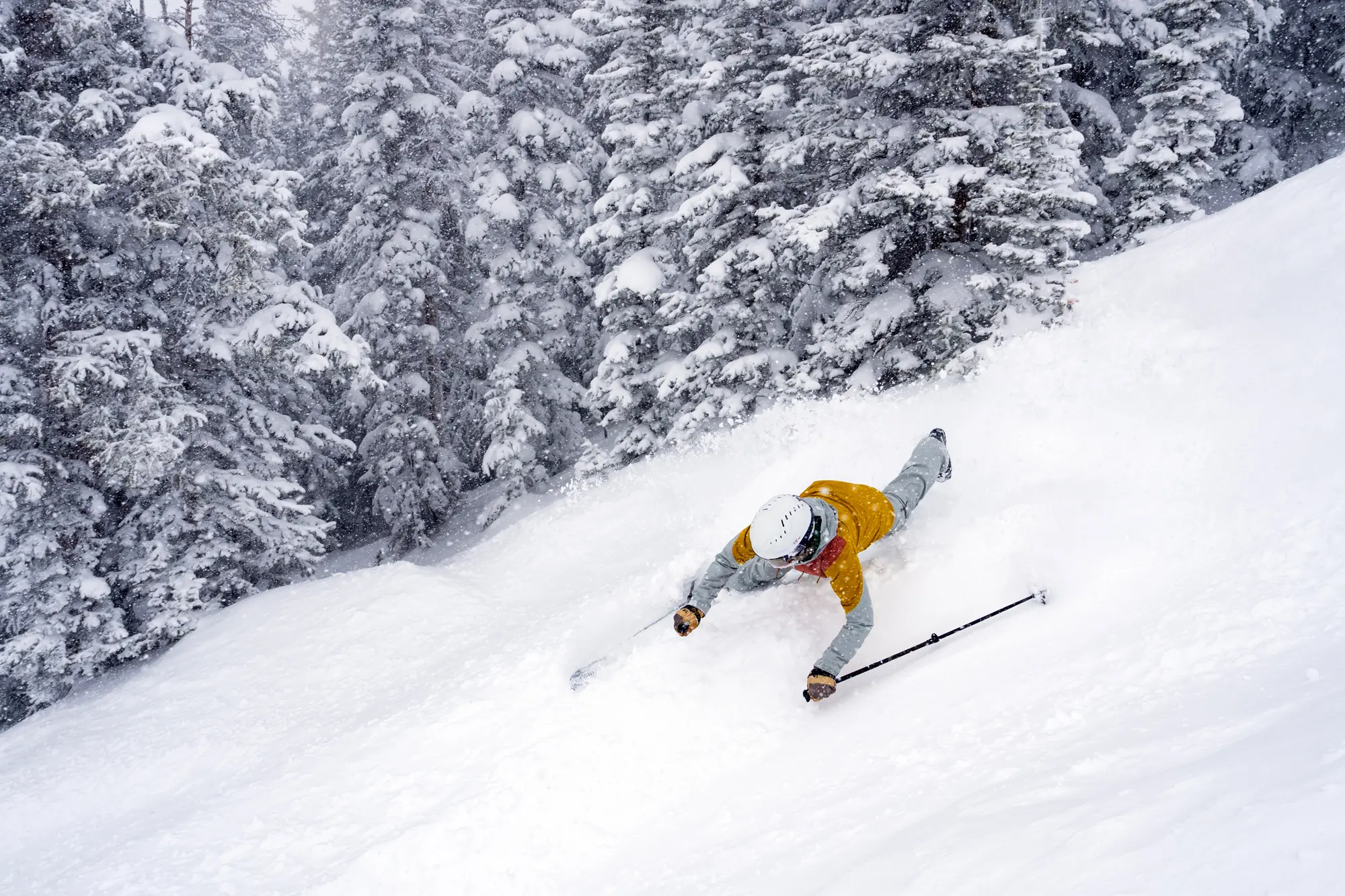



Crashes: MIPS & Impact-Absorbing Systems
Nearly all of the ski helmets on our list have rotational impact systems. These lightweight components are designed to reduce the rotational forces on the head and brain and help prevent brain injury.
Most of the listed models use MIPS, which stands for multidirectional impact system. MIPS uses a slip plate to allow the helmet to rotate independently of the head during impact. This is found on many adult helmets, but not so much on kids’ helmets. Thankfully, the kid’s Giro Crue MIPS does use this safety technology, which makes it such a standout helmet for the younger crowd. MIPS also has a slightly more advanced version of its protection system with MIPS Spherical, which is exclusive to Giro and Bell. With MIPS Spherical, the internal rotation element is integrated into the structure of the helmet, rather than an add-on like with traditional MIPS.
Another impact-absorbing technology is Koroyd, which features welded tubes that crumple upon impact to take the force and transfer energy. The technology is extremely lightweight and allows airflow, too. Among our top products here, all of the Smith helmets, including the Smith Nexus MIPS, have Koroyd.
There’s more. Scott’s D3O shock-absorbing technology is a spongy material that specifically protects against low-energy impacts and is featured in the Scott Symbol 2 Plus. Then, the Anon Merak uses WaveCel, a protection system that aims to reduce impact and help divert rotational forces. WaveCel is comprised of interconnected shock absorbers, which you can see inside the helmet in a very wavy pattern. The goal of these is to lessen the impact of crashes, regardless of the direction of that impact.
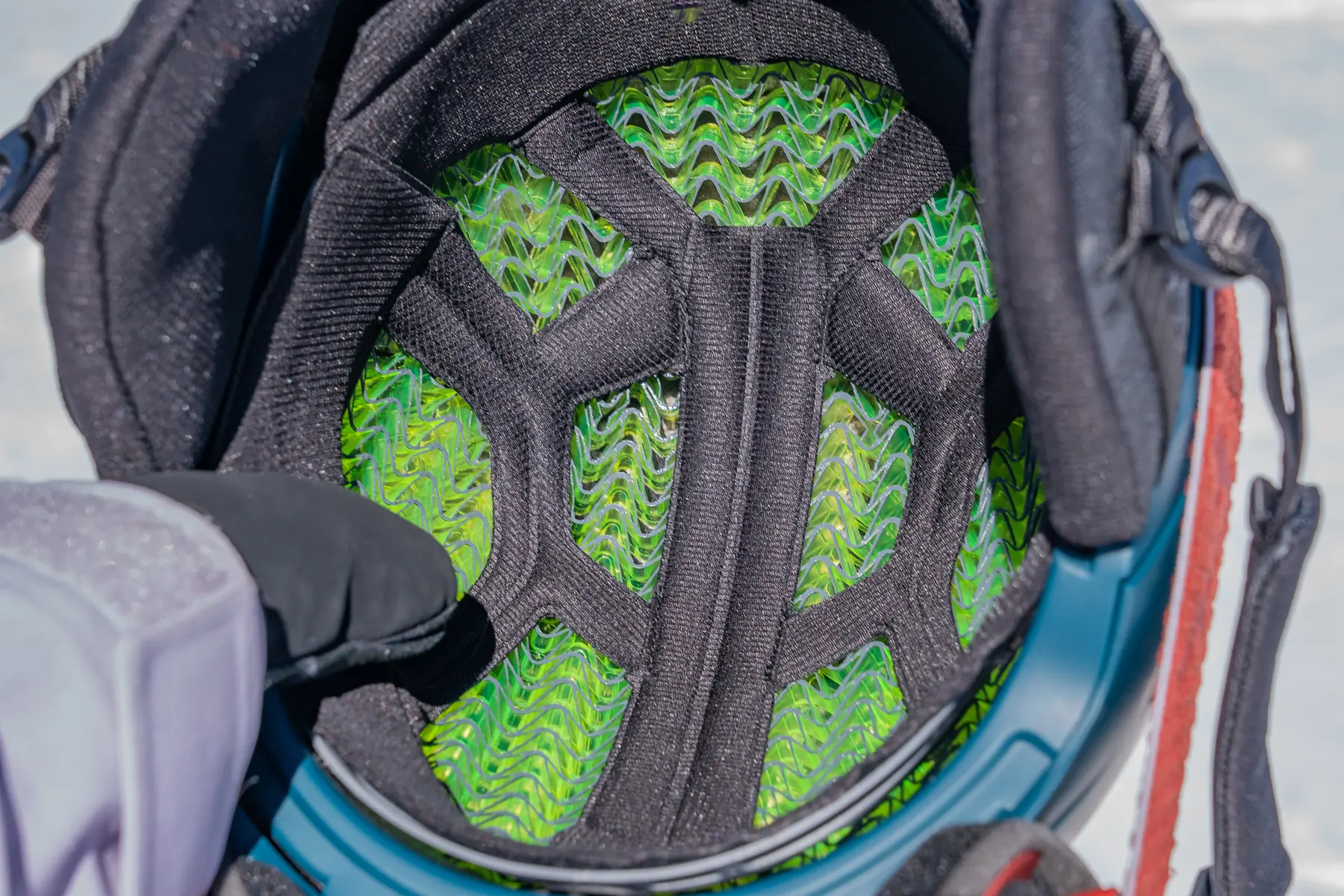



The POC Obex BC MIPS boasts unique protection elements that may come in handy in the backcountry, where accidents can be fatal and emergency response may take longer to arrive. A RECCO reflector makes the helmet searchable for rescuers with the appropriate technology. And the helmet’s integrated medical ID chip is programmable with health information and emergency contacts.
Here are the safety layers on our favorite ski helmets:
- Smith Nexus — MIPS, Koroyd
- Giro Ratio — MIPS
- Pret Women’s Corona X and Men’s Cirque X — MIPS
- Salomon Driver Prime Sigma Photo — MIPS
- Smith Summit — MIPS, Koroyd
- Giro Crue — MIPS
- Smith Vantage — MIPS, Koroyd
- Oakley Mod5 — MIPS
- Sweet Protection Switcher — MIPS
- Bern Watts 2.0 — MIPS
- POC Obex — MIPS Evolve
- POC Obex BC — MIPS Evolve
- Scott Symbol 2 Plus — MIPS
- Bern Carbon Watts — Carbon Fiber construction
- Pret Lyric 2 — MIPS
- Anon Merak — WaveCel
- Giro Owen Spherical — MIPS Spherical




Extra Health & Safety Technologies
Other health and safety technologies are available in addition to impact materials. Extra tenacious, we’ve seen some shells use carbon fiber that’s many times stronger than traditional helmet materials.
Inside the Pret Women’s Corona X and Pret Men’s Cirque X, there’s an antimicrobial EPS foam to help prevent bacterial growth. The helmet shell is also reinforced with polycarbonate plates in areas where skull impact would be critical, effectively doubling the thickness where needed and upping the protection.
Scott also offers a technology called 360-degree Pure Sound earpieces, which are designed to improve sound clarity and the wearer’s ability to hear, which in turn may help to prevent collisions and other incidents. The Pure Sound is included in the Scott Symbol 2 Plus.


Ventilation & Temperature Regulation
As skiers and riders know, conditions in the mountains vary wildly from freezing and frigid to sweaty and sweltering. Because you want a helmet that’s comfortable in all conditions, it’s important to seek a model with good temperature control options.
Helmets with the best temperature control capability come with adjustable vents. On warm days, open vents provide cooling airflow. On cold days, closed vents seal in body heat and protect the head from wind chill. These days, well-designed ski helmets have ventilation systems that effectively channel air through the helmet as you ski or ride.
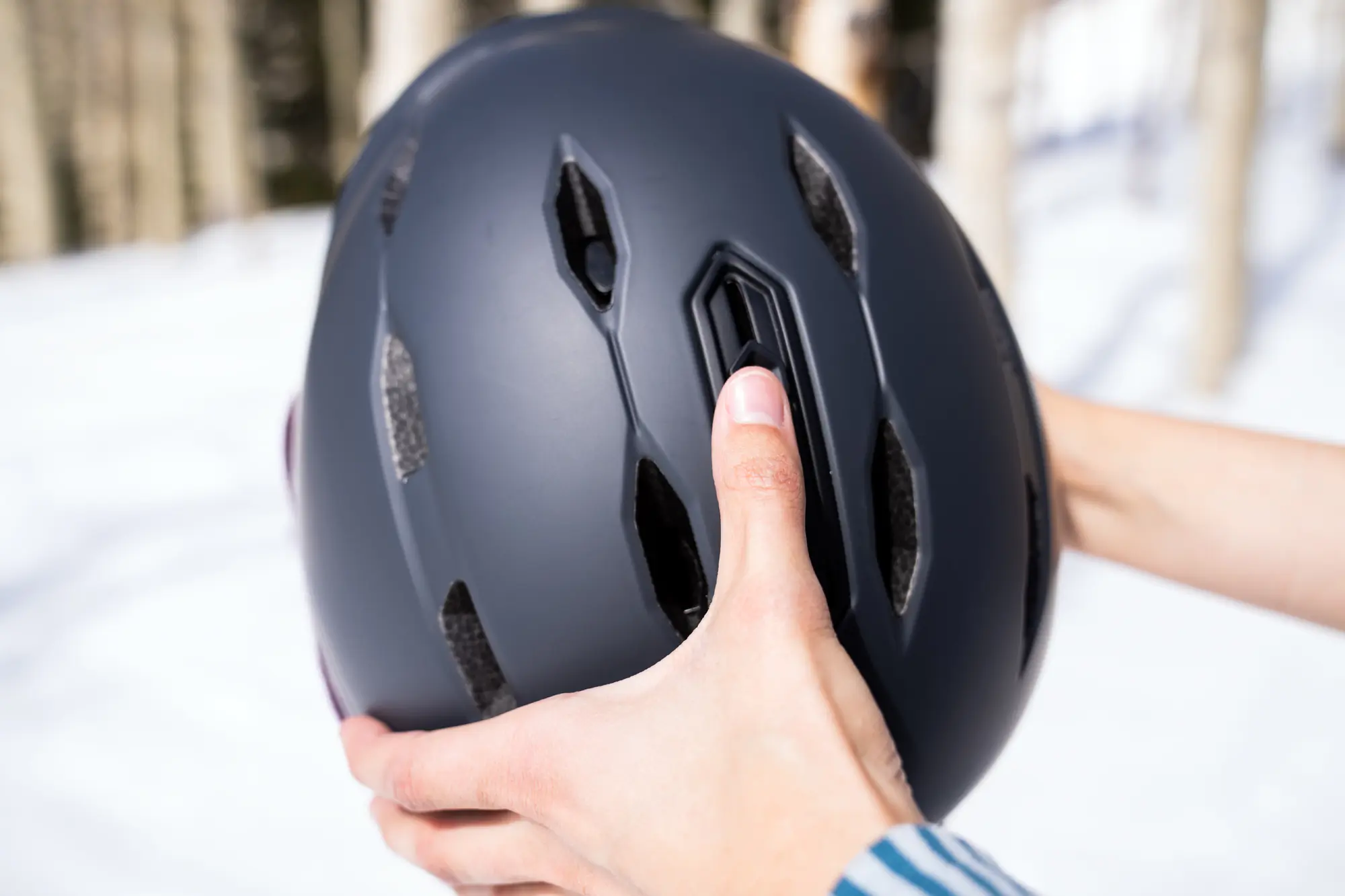



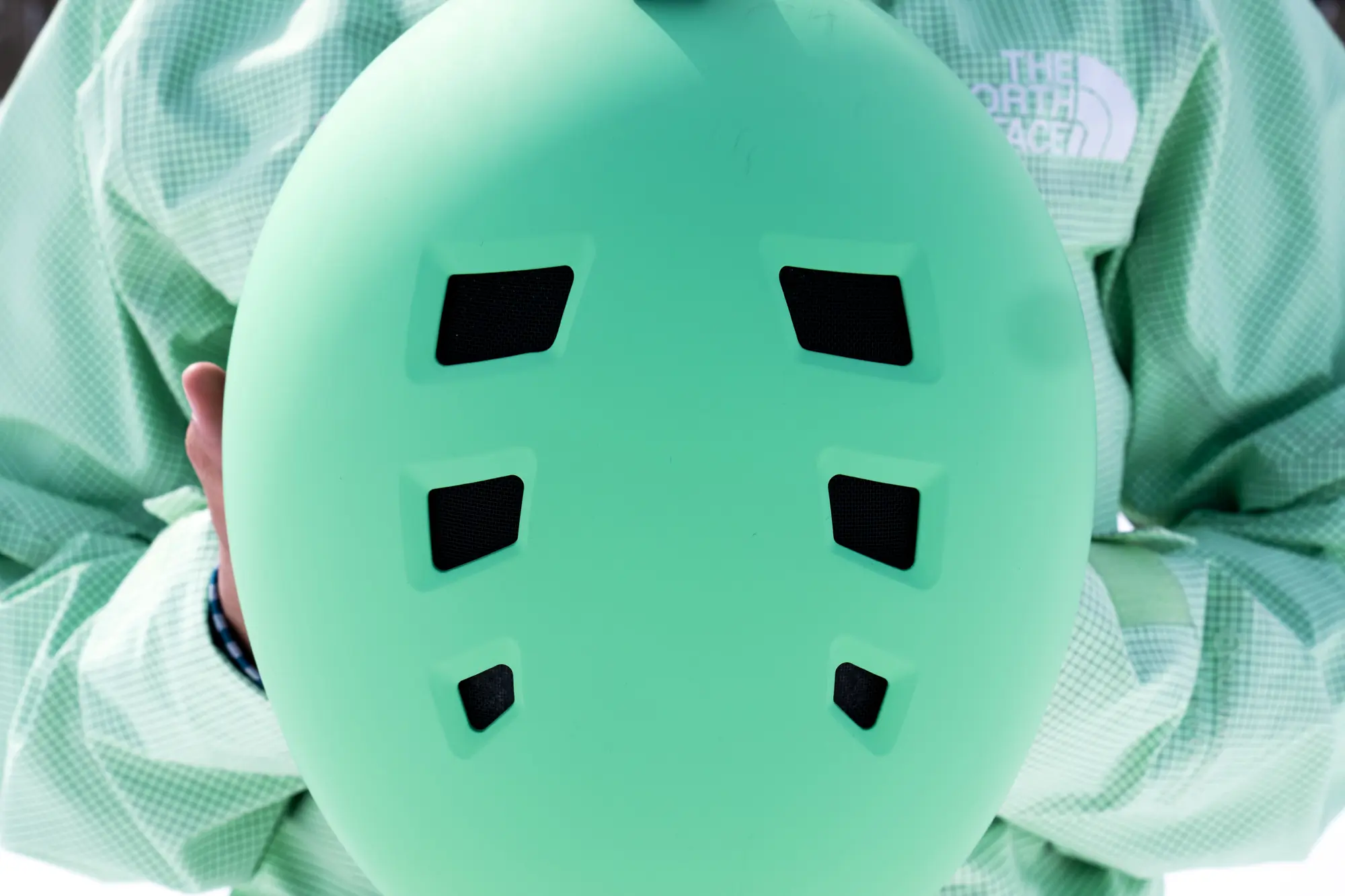





Adjustable Vents & Fit
Consider the overall number of vents and where they are placed on your helmet. Typically, more vents equal a pricier helmet. But if you ski often, that tradeoff can be worth it. The Smith Summit MIPS, made especially for backcountry skiing and touring, has a whopping 33 vents. We also highly recommend adjustable vents, typically using a slider on the exterior shell, which can be opened or closed in an instant without removing the helmet or your gloves. On this list, our favorite ventilation systems are found on the Scott Symbol 2 Plus, the Obex MIPS, and the Sweet Protection Switcher.
Furthermore, having a ski and snowboard helmet with fit adjustability will allow you to add layers beneath your helmet if more warmth and protection from the elements is needed like a headband or balaclava.
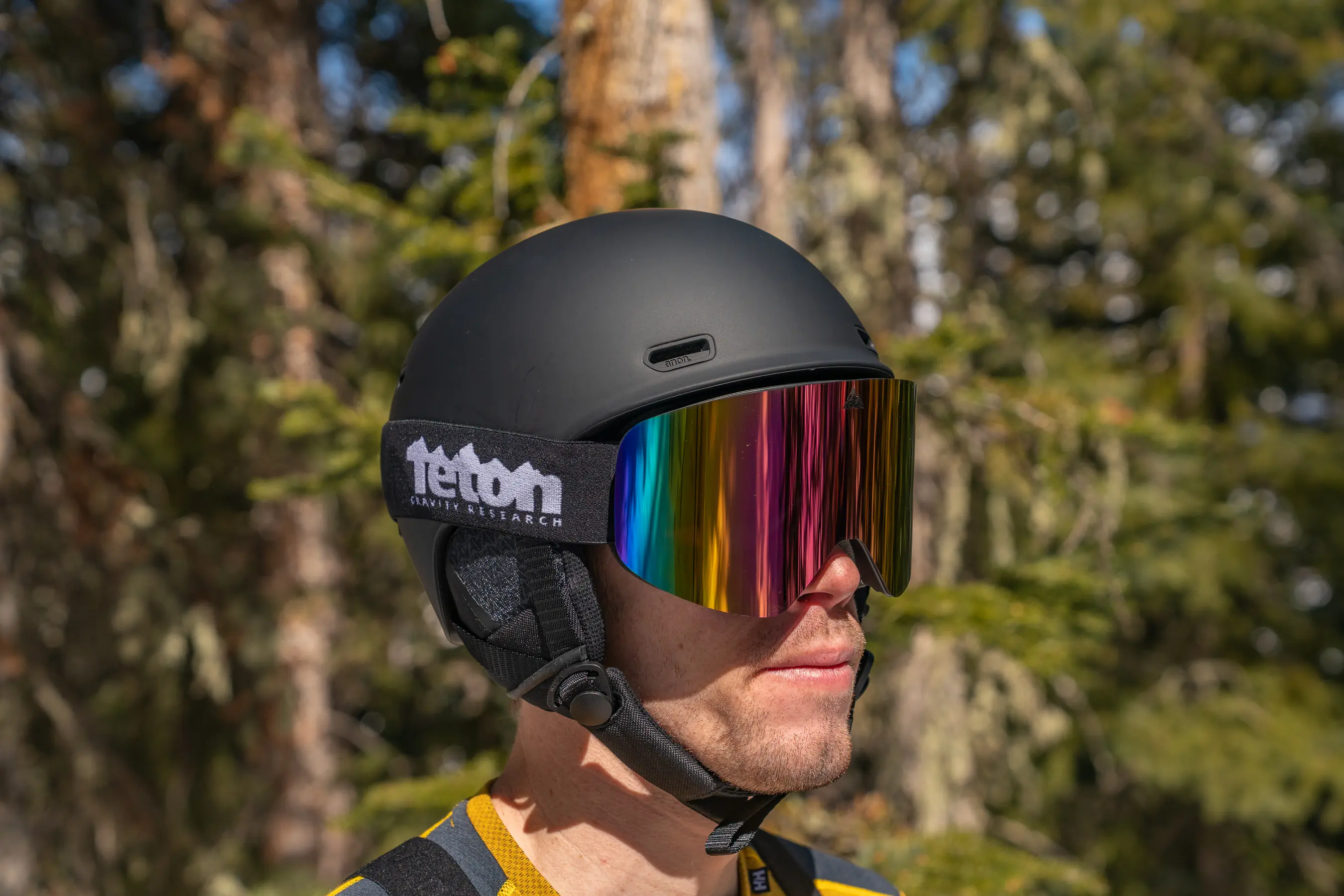



Ear Pads
Additionally, a plush pair of removable ear flaps is essential to a good modular helmet that can be customized as the weather changes. When it’s cold, ear flaps should hug the head and prevent cold air from making contact with the vulnerable ears. We found the Pret Lyric X and Oakley Mod5 MIPS struck a good balance between keeping our ears warm and still allowing us to hear what was happening around us on the slopes. When it’s warm, we recommend removing the earflaps to increase airflow and prevent overheating.
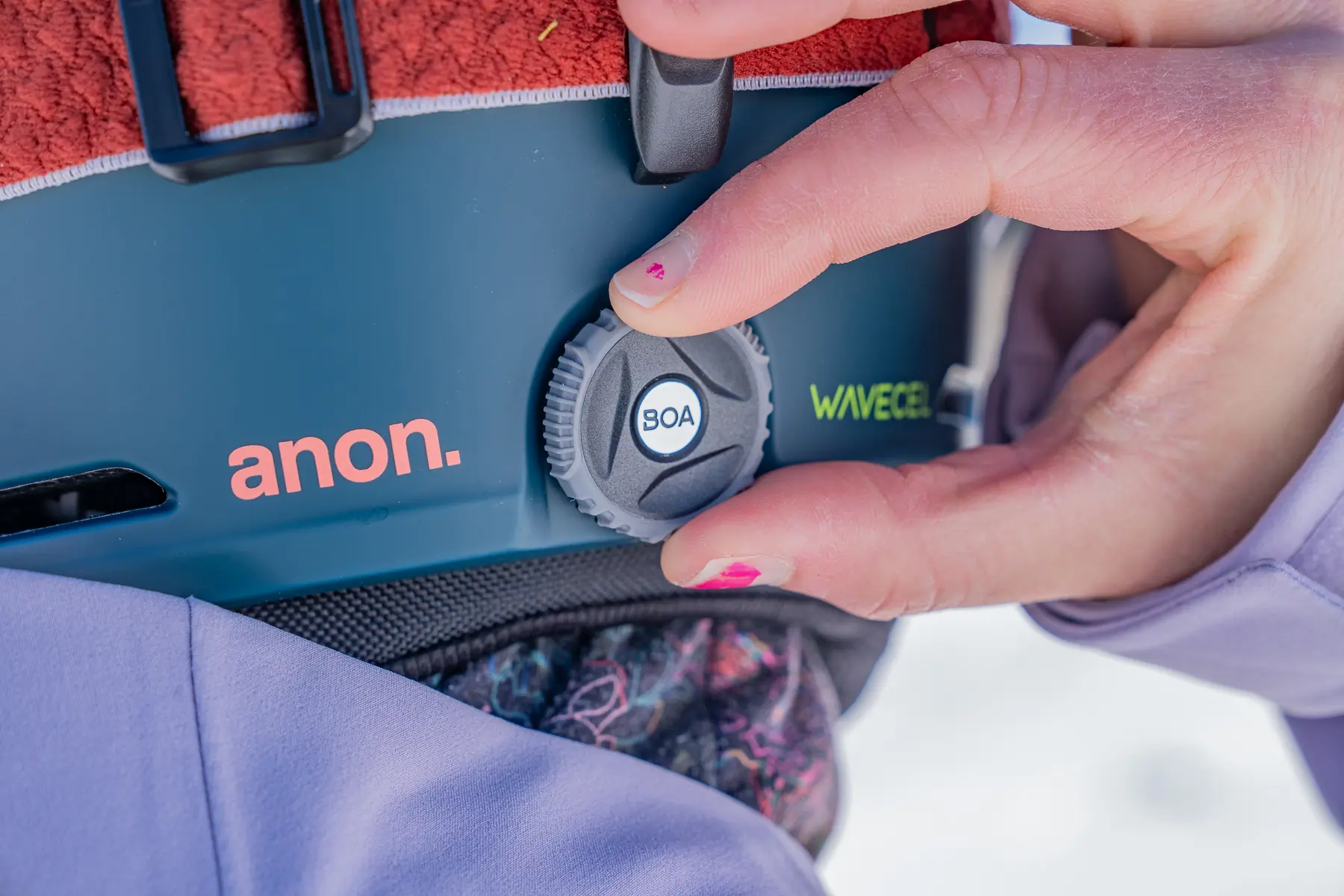



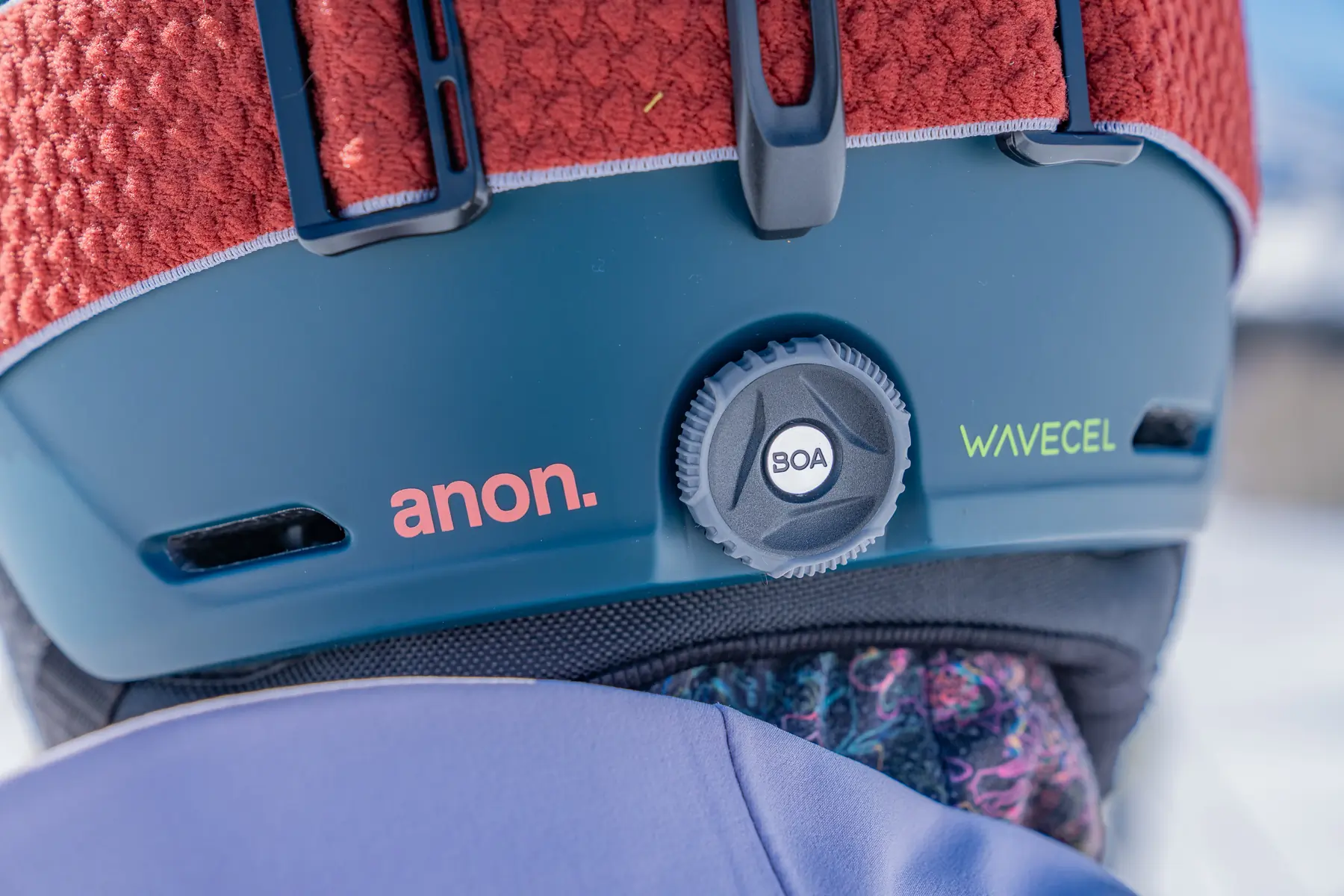



Fit Adjustability
Many helmets on this list come with a built-in adjustable harness that can customize the fit on the fly. Adjustment systems do add a bit of weight and aren’t found in super minimalist helmets.
However, we recommend seeking out a good adjustment system, especially if you plan to use your helmet both with and without a beanie, headband, or balaclava underneath. Wearing a hat under a helmet can affect the fit and integrity of a helmet, so be wary of thicker fabrics. A thin skull cap or headband is usually fine, as long as the helmet still encases from the bottom of your skull bones up to the top of your forehead.
Most modern adjustment systems use a real dial you can easily access while wearing gloves. On this list, we particularly like the adjustment dial system on the Sweet Protection Switcher and the Anon Merak.




Goggle Compatibility & Goggle Clip
Some ski and snowboard helmets are smartly designed to work in seamless tandem with goggles, while certain helmet manufacturers like Smith tend to work best with their own in-house goggles. For instance, the Smith Nexus MIPS Helmet is integrated seamlessly with our pair of Smith goggles. Other ski helmets manage to work with a wide variety of goggle brands and styles. For a full rundown on choosing goggles to go with your helmet, check out our Ski Goggles buyer’s guide.
While skiing or riding, it’s nice to have minimal gaps between your helmet and goggles. Also, it’s important to ensure that the goggle attachment point on the rear of the helmet is compatible with the width of your goggle strap. Want to skip a step? The Salomon Driver Prime Sigma Photo MIPS comes as an integrated goggle-and-helmet setup with the two accessories attached.
Traditional goggle attachments on helmets are often a simple durable clip on the back or a stretchy band that holds goggles in place with a snap or a hook. Ideally, these are easy to operate with gloves on and can be helpful if you take your goggles on and off often, especially while riding a ski lift.
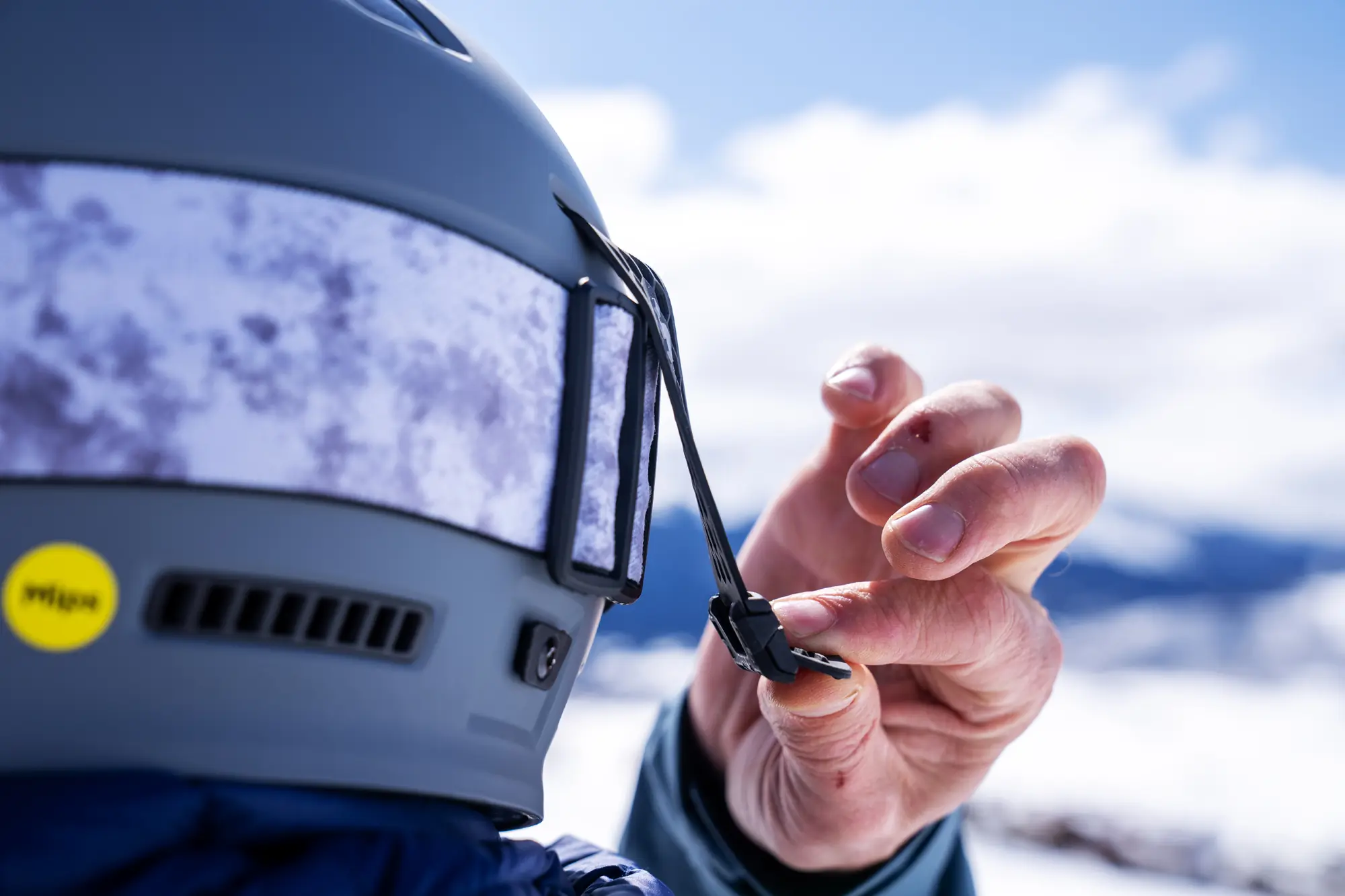



Ski Helmet Weight
Though ski and snowboard helmets vary by weight, the styles featured on our list are all within a few ounces of each other. Extra ounces can be noticeable when wearing a helmet all day, and we recommend seeking out a lightweight helmet.
Some helmets, like the Giro Owen Spherical, include many luxury features without weighing too much. Usually, though, the lighter helmets are minimalist options that sacrifice features in favor of simplicity. The POC Obex BC MIPS strikes a balance between lightweight and protective, ideal for traveling out of bounds. If you’re going to be carrying your helmet into the backcountry, check out our Ski Backpacks guide, too, and pay attention to the helmet-carry designs.
On our list, the lightest helmets are the Pret Women’s Corona X and Men’s Cirque X at 15.3 ounces, the Pret Lyric X2 at 15.8 ounces, and the Owen Spherical at 15.9 ounces. For comparison, a box of butter with four sticks is about 16 ounces, and a bunch of four or five bananas weighs about 20 ounces.


Here’s a comparative list of the weights of our favorite ski helmets from lightest to heaviest:
- Pret Women’s Corona X and Men’s Cirque X — 15.3 ounces
- Pret Lyric X2 — 15.8 ounces
- Giro Owen Spherical — 15.9 ounces
- Smith Summit — 16 ounces
- Anon Merak — 16.9 ounces
- Smith Vantage — 17.6 ounces
- POC Obex — 17.6 ounces
- Giro Crue — 18 ounces
- Bern Carbon Watts — 18.5 ounces
- POC Obex BC — 19.4 ounces
- Scott Symbol 2 Plus — 20 ounces
- Sweet Protection Switcher — 20.1 ounces
- Giro Ratio — 21.5 ounces
- Smith Nexus — 23 ounces
- Salomon Driver Prime Sigma Photo — 27 ounces
- Oakley Mod5 — 32 ounces
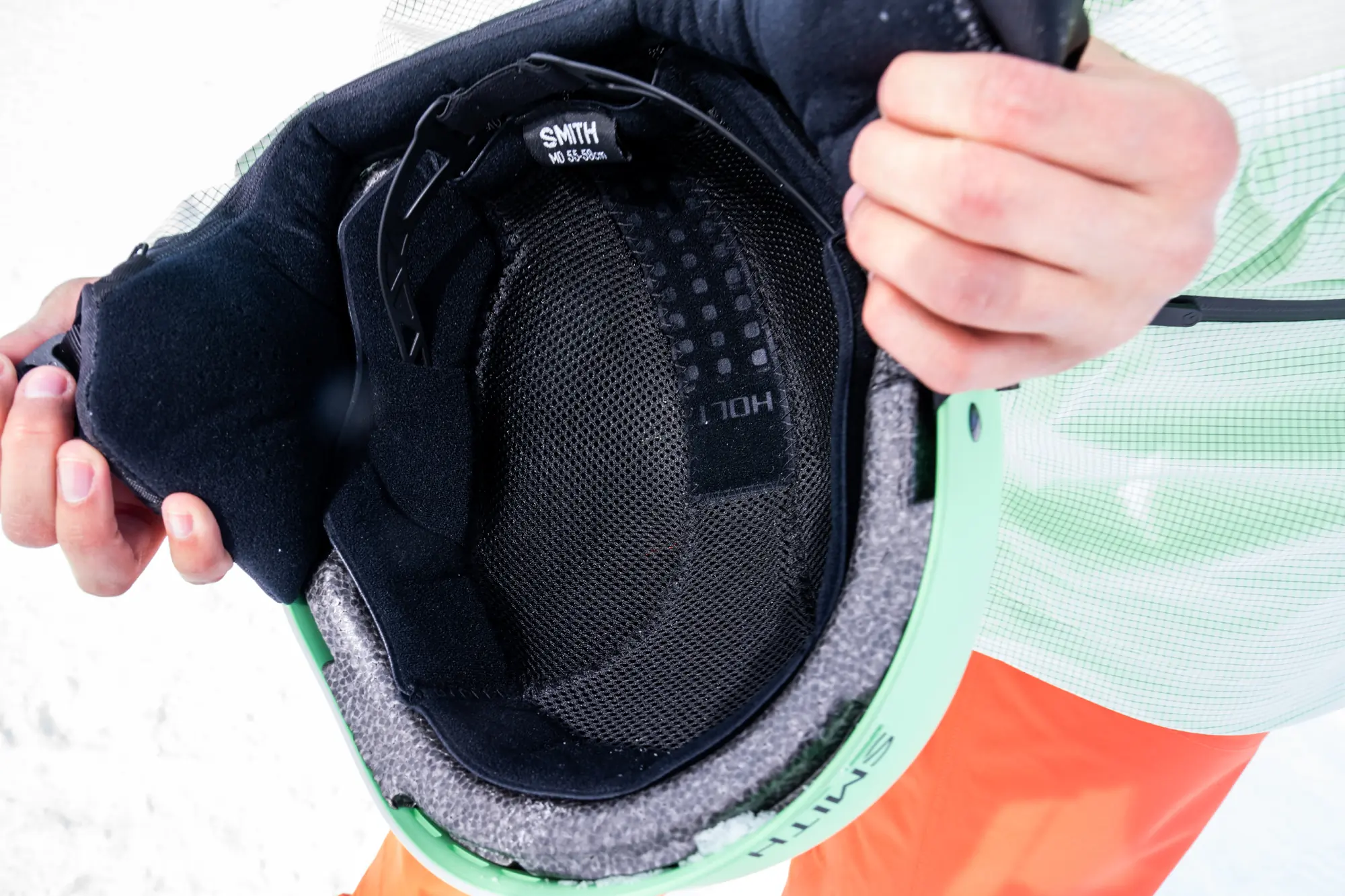



Antimicrobial Foam & Liners
Helmet liners provide a thin layer between your scalp and your helmet. Even though it’s cold, your head can still sweat while wearing a ski or snowboard helmet. That’s why liner material can be an important consideration, especially if you tend to overheat. No one wants a stinky helmet.
One example of this technology can be found in the Pret Women’s Corona X, Pret Men’s Cirque X, and Pret Lyric X2 helmets. These helmets have antimicrobial EPS foam that prevents bacterial growth, making them last longer and reducing unwanted odors. Smith helmets, like the Smith Nexus MIPS Helmet, also come with an antimicrobial liner.


Audio Systems
If you love rocking out on the mountain, plan to spend a bit extra on helmet-compatible headphones or audio-compatible ear pads that are integrated into the helmet. Many helmets are also designed with ear pad pockets that work with headphones, specifically, Outdoor Tech’s Chip System. Some helmet companies make helmet-compatible headphones including the Alta Wireless Headphones for making hands-free calls.
The most advanced audio systems are ones that are integrated into the helmet and Bluetooth-compatible, so they can link to music, make phone calls, and even offer an intercom system to communicate with others wearing one, too. If communication is important, look for models with microphones.
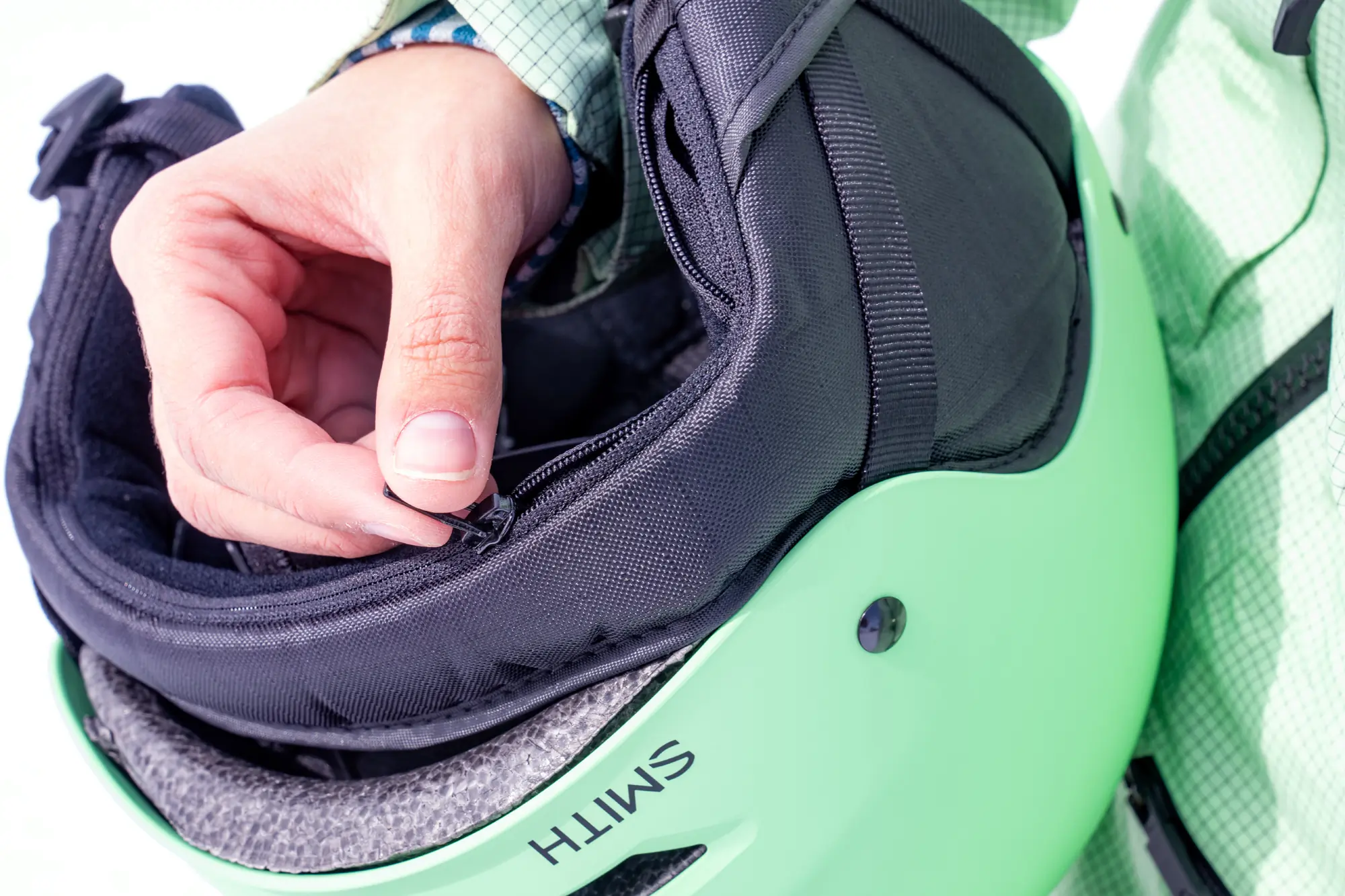



Many helmets, including the Smith Vantage, Bern Watts 2.0, and Sweet Protection Switcher MIPS, have ear pads made for inserts. Smith makes its own brand of wireless helmet audio kits, such as the Aleck 006. It’s worth noting that helmet audio kits — which are when two compact, streamlined speakers are inserted into the ear pads — can change the way helmet ear pads fit and might make them uncomfortable. Finding the right integrated system for you can also mean no more wires and no more fears of dropping your phone, especially on the ski lift.
Many skiers also use their regular earbuds. There are pros and cons: Cords can be annoying, but Bluetooth pods can fall out if you crash. Whatever you choose, just remember to keep the volume low, keep only one earbud in, or consider a pair of bone conduction headphones. Especially when skiing in-bounds, it’s important to maintain situational awareness so you can stay safe.


Chin Straps
Many helmets now offer a magnetic clip closure on the chin strap while other ski helmets have a traditional buckle. Chin straps with a magnetic clip closure are easier to use while wearing mittens or gloves.
The length of the straps is typically adjustable though are easier to lengthen or shorten before you head out for the day than on the fly or with gloves on. If the temps drop and you plan on using an extra bulky neck warmer, be sure to readjust your chin strap ahead of time.




Sustainability
Helmets aren’t always the most ecological products due to the use of certain foams and plastics. They aren’t a continuously reusable product, because of the limited lifespan in addition to the nature of the material being compromised by a crash or simply being dropped out of the passenger side door. Some brands are trying to increase the sustainability of helmets, especially due to these pigeonholed factors.
Liners
Ski helmet liners are an ingredient that brands can update for more sustainability. Smith’s Ionic+ antimicrobial liner meets the OEKO-TEX Standard 100 accreditation: There are no harmful substances introduced in the manufacturing process. All Smith helmets are also packaged in post-consumer recycled cardboard.
Sweet Protection’s liners are made from traceable wool certified by international wool standards, and collected in a way that’s kinder to sheep.
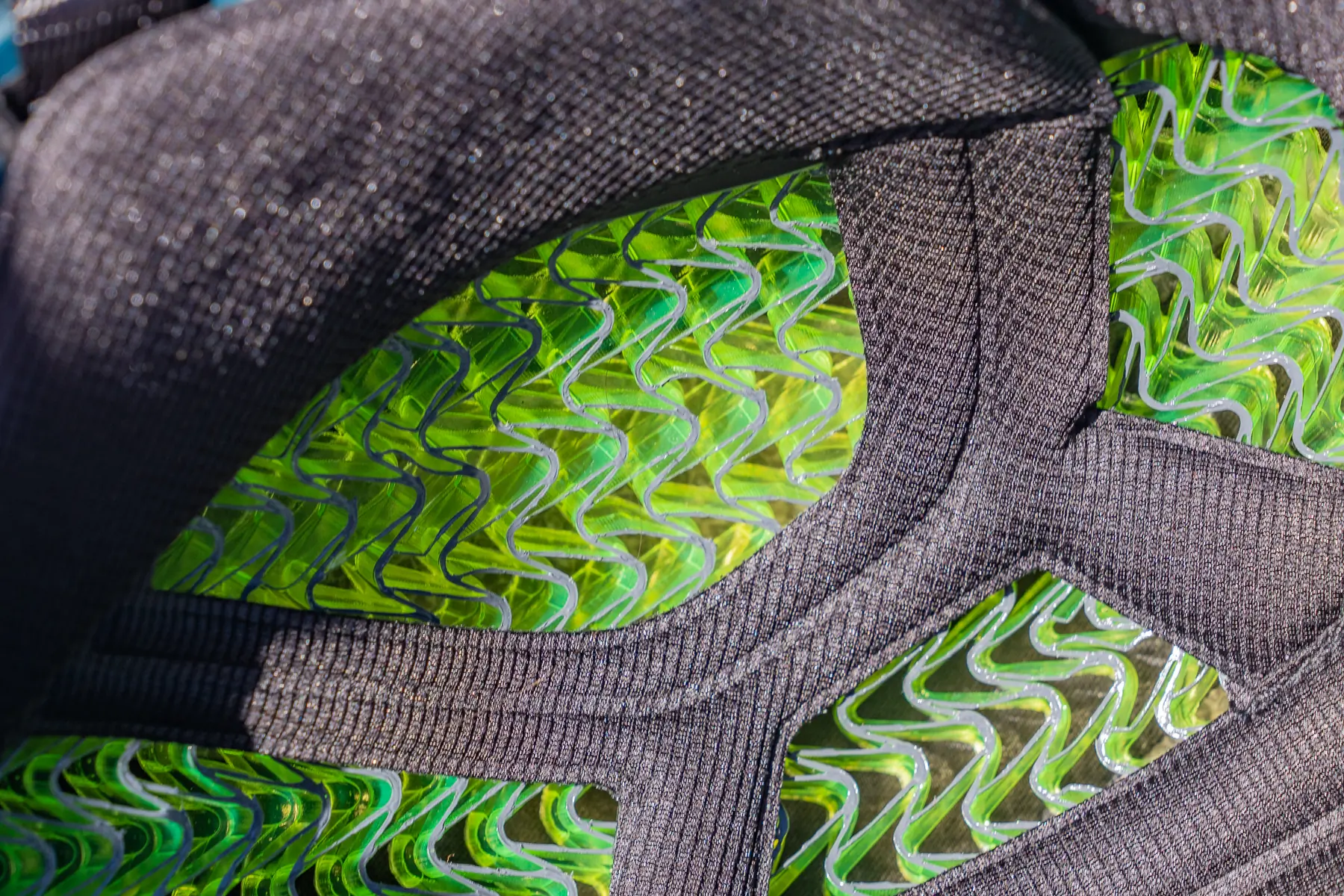



Reducing Packaging Waste
The Norwegian company Sweet Protection also touts its environmental responsibility measures, like reducing plastic in packaging. Check out the Sweet Protection Switcher for these commitments in practice.
Another company that is putting sustainability at the forefront is Bollé. Last fall, Bollé launched the widest range of eco-designed winter sports products available on the market as part of the next phase in Bollé’s “React for Good” campaign. You can find helmets and goggles that use recycled materials or can be fully recycled.
Recycling
Unfortunately, there are not many places where ski helmets can be recycled. Old ski helmets can theoretically be recycled for their components, and some recycled shells can even be used as an amendment in soil. Check your local recycling center or ski or outdoor shop for helmet recycling programs—they’re pretty rare due to the time and cost involved. Bern has a comprehensive guide on how to take apart your helmet and where to recycle specific parts.




Warranties
There’s nothing worse than spending money on new gear, just to have that equipment fail or go through an unforeseen ringer. Many brands have warranties for defects on their helmets, while others go above and beyond, even if the cause of impact is due to a ski crash.
All Smith helmets are covered by a limited lifetime warranty for three years from the date of purchase. That policy includes any manufacturer’s defects. Furthermore, Smith offers a 30% discount for crash replacement helmets. For instance, the Smith Vantage has the same limited lifetime warranty and crash replacement deal as other Smith helmets, like the Smith Nexus MIPS.




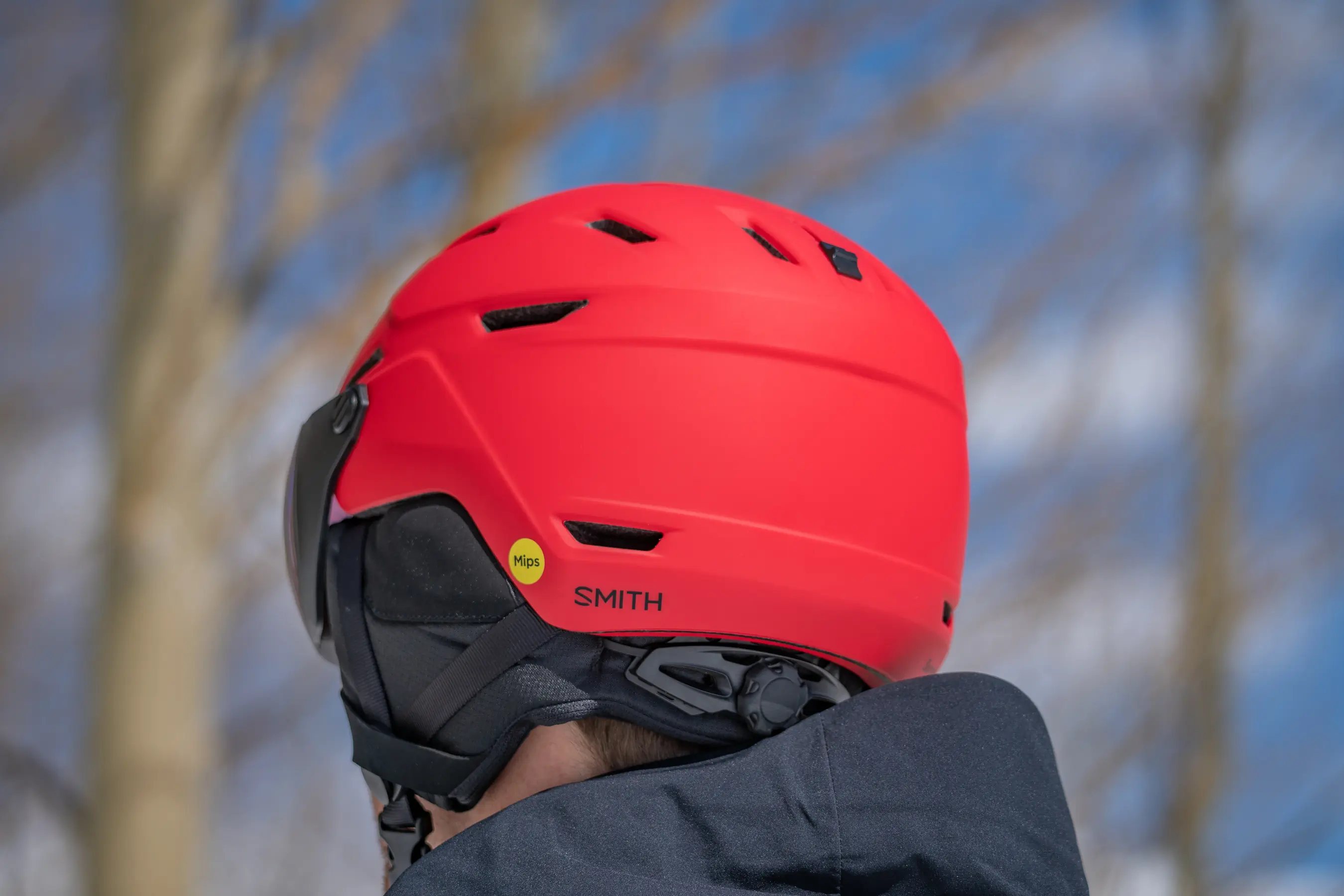



The Salomon Driver Prime Sigma Photo MIPS, like most Salomon products, has a 2-year warranty.
Bern has a recently updated exchange, warranty, and crash replacement policy. If you don’t like your helmet size or color, you can swap it out within 90 days, free of cost. The Bern Watts 2.0 is subject to the common three-year warranty for defects or workmanship issues. There’s a separate lifetime crash replacement policy: If a rider destroys their helmet in an accident, send in pics, a backstory, and pony up for shipping costs — you’ll get a replacement. Rad.
- Smith Nexus — limited lifetime warranty for three years; 30% off crash replacement helmets
- Giro Ratio — one-year warranty for defects or workmanship issues
- Pret Women’s Corona X and Men’s Cirque X — one-year warranty for defects or workmanship issues
- Salomon Driver Prime Sigma Photo — two-year warranty for defects or workmanship issues
- Smith Summit — limited lifetime warranty for three years; 30% off crash replacement helmets
- Giro Crue — one-year warranty for defects or workmanship issues
- Smith Vantage — limited lifetime warranty for three years; 30% off crash replacement helmets
- Oakley Mod5 — limited lifetime warranty for defects or workmanship issues; 50 percent off a crash replacement within three years of purchase
- Sweet Protection Switcher — one-year warranty for defects or workmanship issues
- Bern Watts 2.0 — exchange within 90 days; free replacement from crashes; three-year warranty for defects or workmanship issues
- POC Obex — one-year warranty for defects or workmanship issues
- POC Obex BC — one-year warranty for defects or workmanship issues
- Scott Symbol 2 Plus — unavailable
- Bern Carbon Watts — exchange within 90 days; free replacement from crashes; three-year warranty for defects or workmanship issues
- Pret Lyric 2 — one-year warranty for defects or workmanship issues
- Anon Merak — one-year warranty for defects or workmanship issues
- Giro Owen Spherical — one-year warranty for defects or workmanship issues


Ski Helmets: Extra Features
On top of the above safety and comfort factors, there are a variety of extra features worth considering. These include things like the ability to mount an action camera.
Thanks to the camera’s sticky mounting system, you can mount an action camera on almost any helmet. Some helmets go a step further and actually include a built-in mount. If this is important to you, it’s worth considering this feature.
Some helmets have a bit of a brim, which is stylish and also helps to divert snow and rain (more than sunshine) away from our goggles and faces. We’ve also found that goggles fit slightly better with helmets that have small brims.
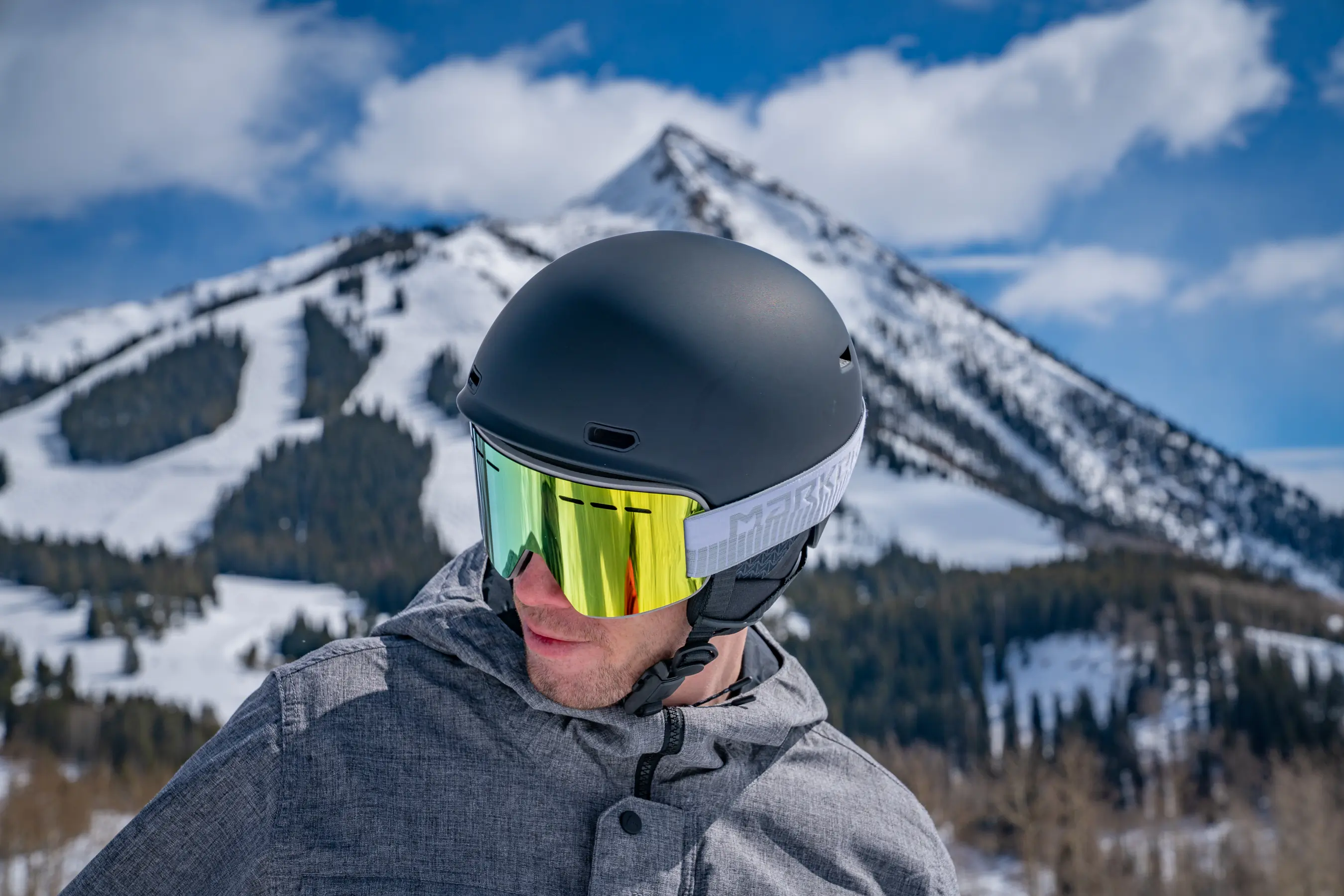



Helmet Hoods
If you would like to use a hood over your helmet from time to time, choose a ski or snowboard jacket with a helmet-compatible hood so they fit together: you still need to be able to turn your head with both your helmet and hood on. That said, all helmet-compatible hoods are designed with a unique shape and material, even from product to product within a single brand.
Depending on your helmet shape and size, the hood might be too snug to wear while descending a slope. Hoods can be restrictive, and not all hoods completely protect the front of the helmet while on, which is especially noticeable when the sky is nuking.
We’ve found that Patagonia hoods are among the best fit for helmet compatibility, as well as winter ski jackets from Kari Traa. Read more in our Ski Jackets guide.
Another option to pop on if you need that added protection from the elements is a helmet hood, like those from Burton. Standalone hoods, like the Burke Hood, easily slip over your helmet, have drawstrings to really tighten and block out that wind, and can be worn with any helmet or goggles.
The Anon MFI Hood Balaclava is one step up from just the hood; the hood has an integrated neck warmer that goes over your nose and magnets to specific goggles for full coverage. The only gripe with the MFI hoods or facemasks is that they can only be worn with MFI-compatible Anon goggles, like the Anon MFS goggles.


Price & Value
In our guide, the top ski and snowboard helmets range in price from $120 to $450, with the latter option having integrated goggles — so, that’s a pretty good deal.
Budget
There are some excellent budget options that don’t require you to compromise safety or protection. On this list, we’ve selected the Giro Ratio MIPS ($120) as our pick for the ski helmet offering the best value. The Bern Watts 2.0 ($170) and Pret Lyric X2 ($160) are likewise on the lower end of the price spectrum, arriving under $200, but don’t provide as much warmth as other helmets due to the vents not being adjustable: the vents remain open.
Mid-Tier
We are much more inclined to reach for a helmet at a moderate or high cost for the best safety materials, to which MIPS has set a broad industry benchmark. Most of our favorite well-constructed helmets fall in the $200 to $270 range. That includes the Scott Symbol 2 Plus ($200), Smith Summit MIPS ($230), the Giro Owen Spherical ($240), and the Oakley MOD 5 MIPS ($250). A fleet are tagged at $270: Pret Women’s Corona X & Pret Men’s Cirque X, Smith Vantage, Sweet Protection Switcher MIPS Helmet, and the POC Obex BC MIPS.
Premium
Generally, higher-end ski helmets offer elite protection or customizable features, so they cost more than lower-quality options. Sought-after features, including earbud compatibility, MIPS alongside other impact-absorbing materials, and adjustable ventilation, come with a higher price tag than minimalist ski helmet models. Models at or above $300 include the Anon Merak ($320), Smith Nexus MIPS Helmet ($330), and the helmet-goggle combination of the Salomon Driver Prime Sigma Photo MIPS ($450).


Frequently Asked Questions
Helmet use has become almost universal in the skiing and riding world. On an average day at the ski resort, the vast majority of people wear helmets. In the backcountry, helmet use is standard practice.
We fully recommend wearing a helmet for every kind of skiing and riding. Impacts and collisions cannot be planned for, and helmets offer significant protection that can help you prevent brain injuries and potentially save your life.
All of the helmets on this list are high-quality, and we recommend each of them with confidence. Ultimately, the best helmet is the one that fits your head and your needs. When it comes time to decide, try on various options and learn as much as possible about their feature sets.
Most of the highly rated ski helmets on the market are built with a rotation force mitigation system. To date, MIPS is the most common and well-known, and not many competing technologies exist.
Smith integrates Koroyd impact protection in many ski and snowboard helmets and even couples the technology with MIPS in certain models. Scott integrates a shock-absorbing material called D3O, which is likewise added alongside MIPS. Bontrager features WaveCel in bike helmets but does not produce snow sports helmets. Anon features WaveCel in their winter helmets.
Formerly, POC designed its own solution, known as SPIN, which the brand began to phase out and replace with MIPS in 2019. We recommend purchasing a helmet with MIPS or a comparable system.


Ski and snowboard helmets should be plenty warm to keep your head and ears comfortable in high-elevation alpine conditions. If you run cold, we recommend seeking out a helmet known for its warmth, like the Sweet Protection Switcher. You can also layer a thin beanie underneath a well-fitting helmet to add extra oomph if your noggin just won’t warm up.
Also, an adjustable ventilation system will allow you to close your vents to keep precious heat in, like the Anon Merak.
Ski helmets are designed to withstand more than one minor hit. But if you find yourself in a serious crash, or if your helmet shows visible signs of damage, replace it immediately. A cracked helmet, or a helmet missing any padding or parts, shouldn’t be worn.
No crashes or impacts? Don’t hold on to that helmet forever. A general rule of thumb is to replace helmets after about five years if you’re skiing or snowboarding consistently. Interior padding can break down with time, and wear and tear from sweat and hair products can also break down a helmet’s liner.
Finding a ski helmet that fits is a bit like Goldilocks: not too tight, not too loose, but just right.
A ski helmet should fit snugly, with no spaces between the foam or padding and your head. If a helmet can rock back and forth, or moves around when you shake your head from side to side, it’s too big. Try a size down, or if the helmet has an adjustment mechanism, try tightening it. If a helmet causes headaches, it’s too tight. Go a size up, or, loosen it up.
Following a brand’s size chart is a good place to start. If this is your first time buying a helmet, or you don’t already know your size for a particular brand, we recommend trying on helmets in person to get a feel for what you like. Or at least, check an online retailer’s return policy.
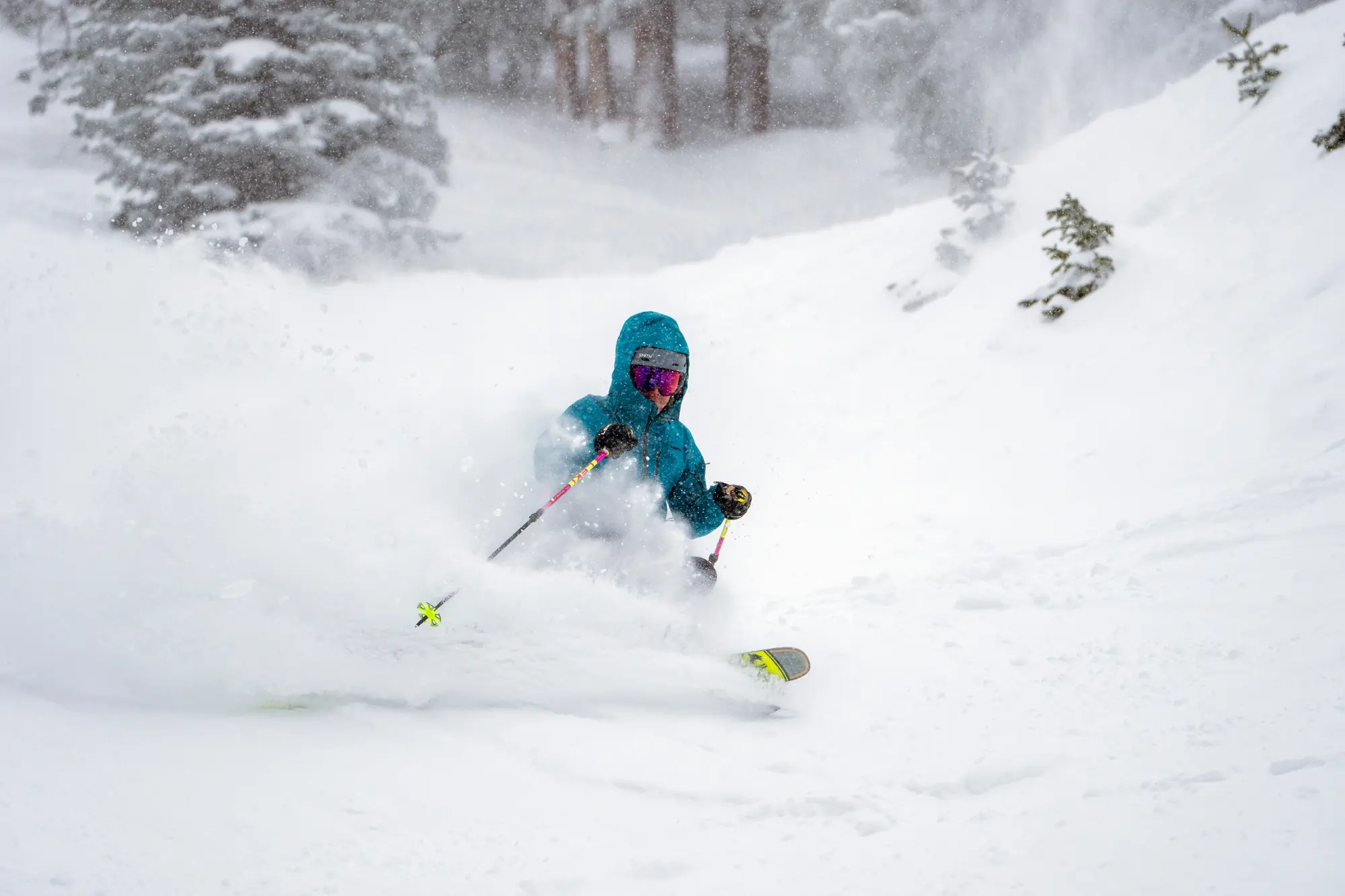



Is your helmet dirty from riding in the back of your car or being dropped in a muddy parking lot? Good news: You can clean it. Warm water and mild detergent or soap with a soft cloth should do the trick. Don’t soak any parts of the helmet, use strong cleaners, or put the shell close to high heat (like a hairdryer).
Some liners are removable. Check the tag for instructions on machine-washing or washing by hand with mild soap and water, too.
Ski and snowboard helmets can be tailored to women, men, and a range of people through the size run, shape, and aesthetic. Regardless of how you identify, you should buy the helmet that best fits your head and needs.
Similar to the apparel industry, there is no universal fit or sizing chart utilized across brands. Some ski helmet brands offer unisex helmets, while others offer women’s specific sizes and men’s specific sizes. Other brands, like Smith, offer all of the above.
For instance, the Smith Vantage Round Contour Fit for men is offered in medium (59-63 cm) and large (63-67 cm). The size run for the Smith Vantage Women’s Mips, the women’s-specific version of the same helmet design, differs. You’ll see a menu with a small (51-55 cm), medium (55-59 cm), or large (59-63 cm).
However, when you look at the sizes offered via the Pret Women’s Corona X and Pret Men’s Cirque X, you’ll find the same measurements for each dedicated size but the size large is only available for the men’s-specific product. The colors also differ between the two.
There’s no hard and fast rule with sizing, so always check the sizing chart and measure your noggin.
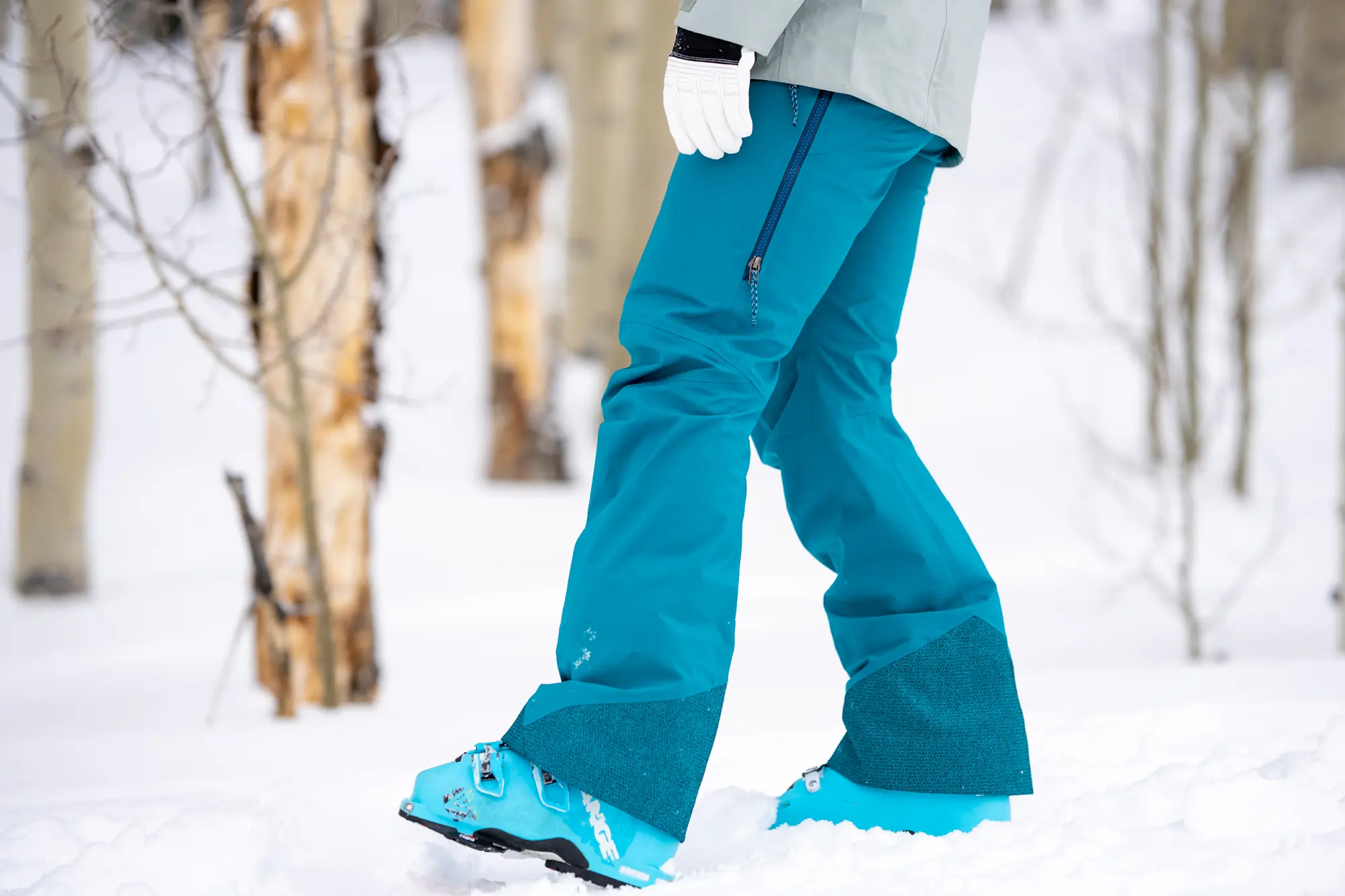

The Best Women’s Ski Pants of 2025-2026
We tested the best women’s ski pants for the resort and backcountry including our top picks from Rab, The North Face, Arc’teryx, and more.
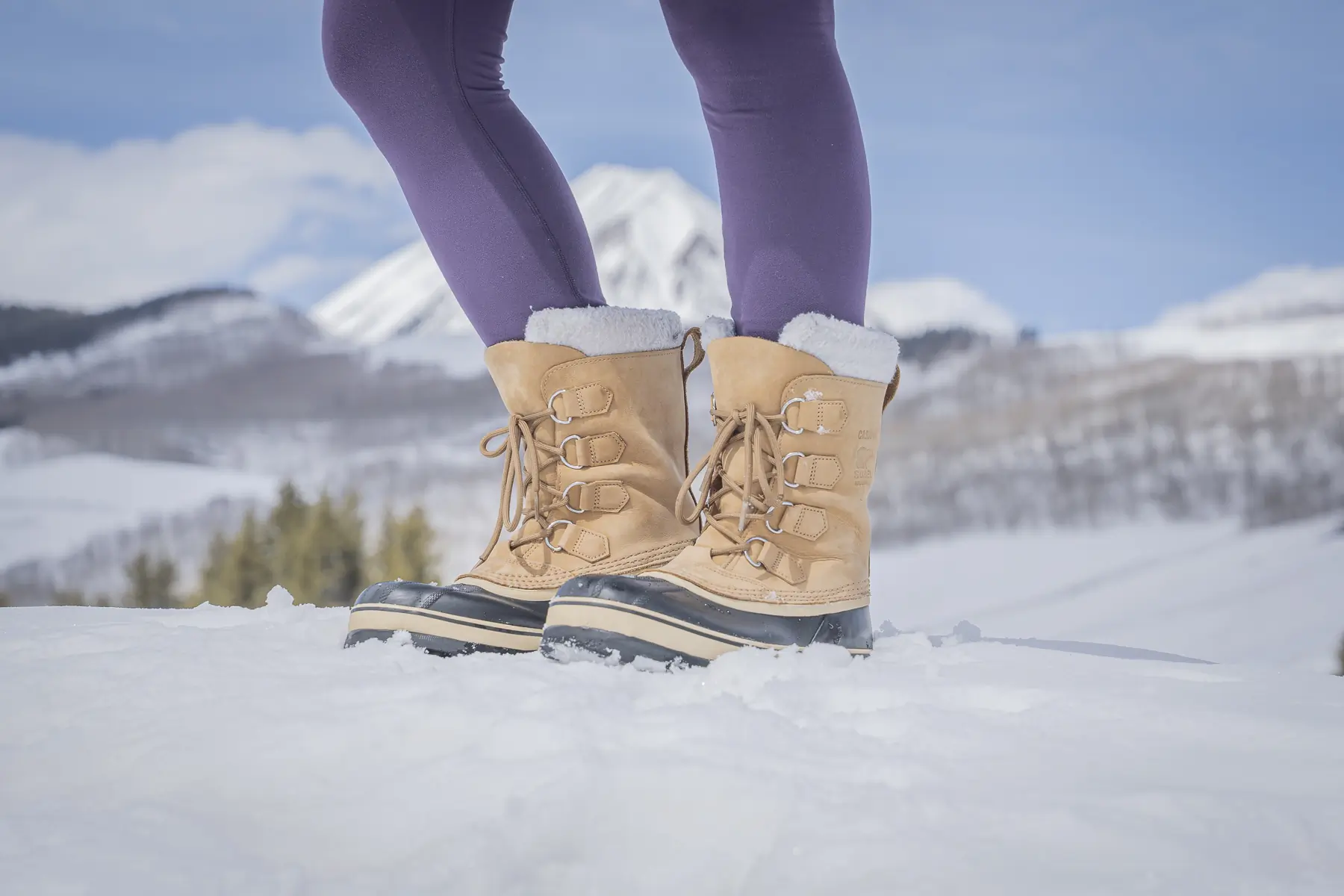

The Best Winter Boots for Women of 2025-2026
We tested the best winter boots for women in cold, snowy, icy, and sloppy conditions. Our top picks include Sorel, Timberland, and more.



